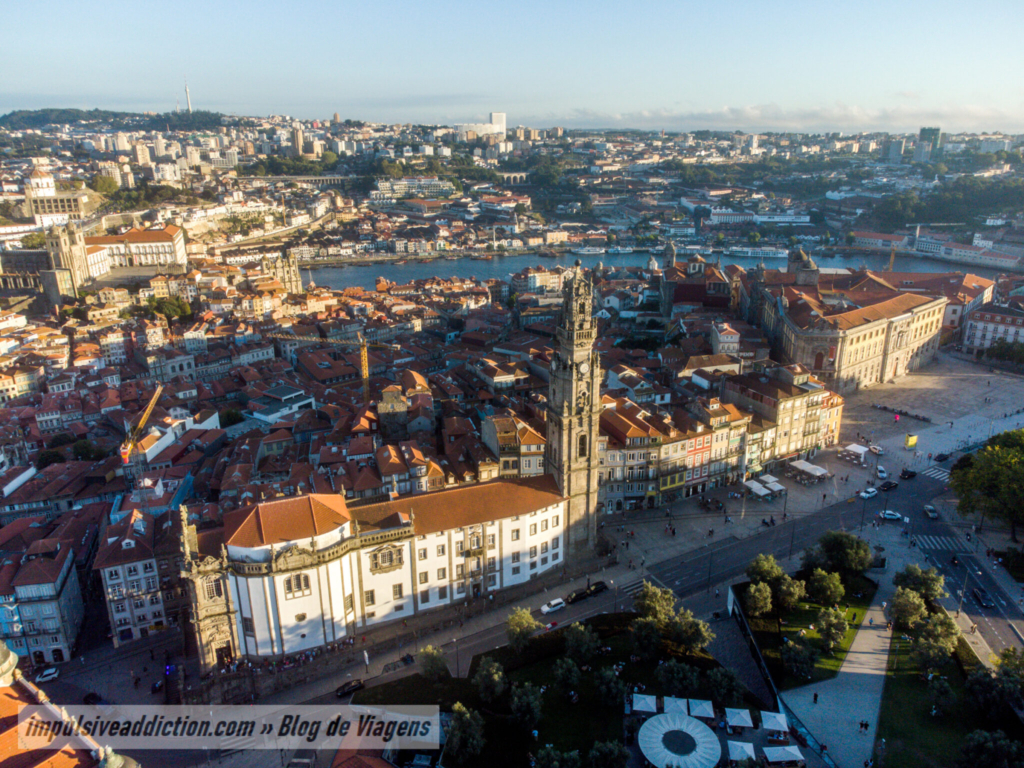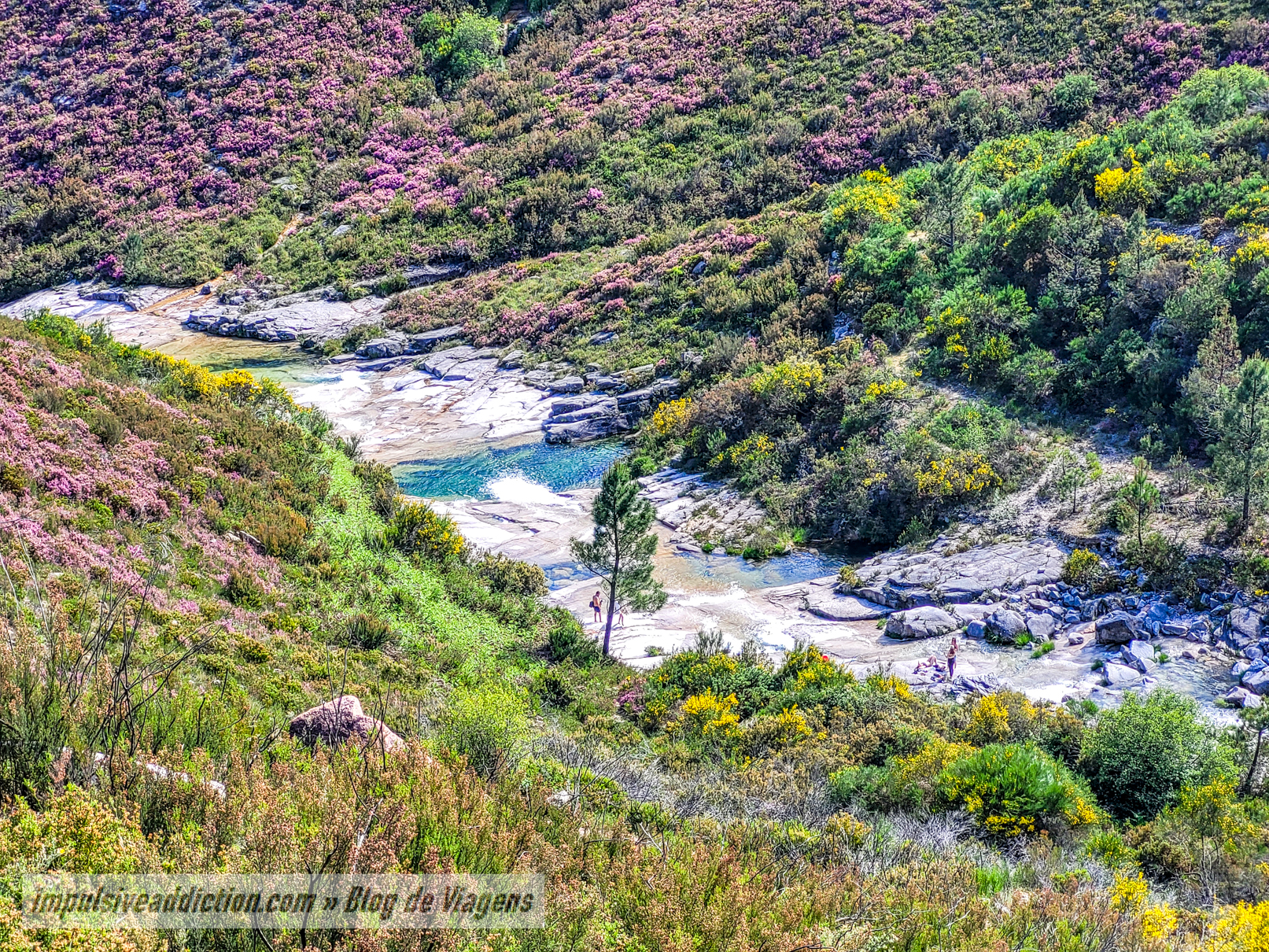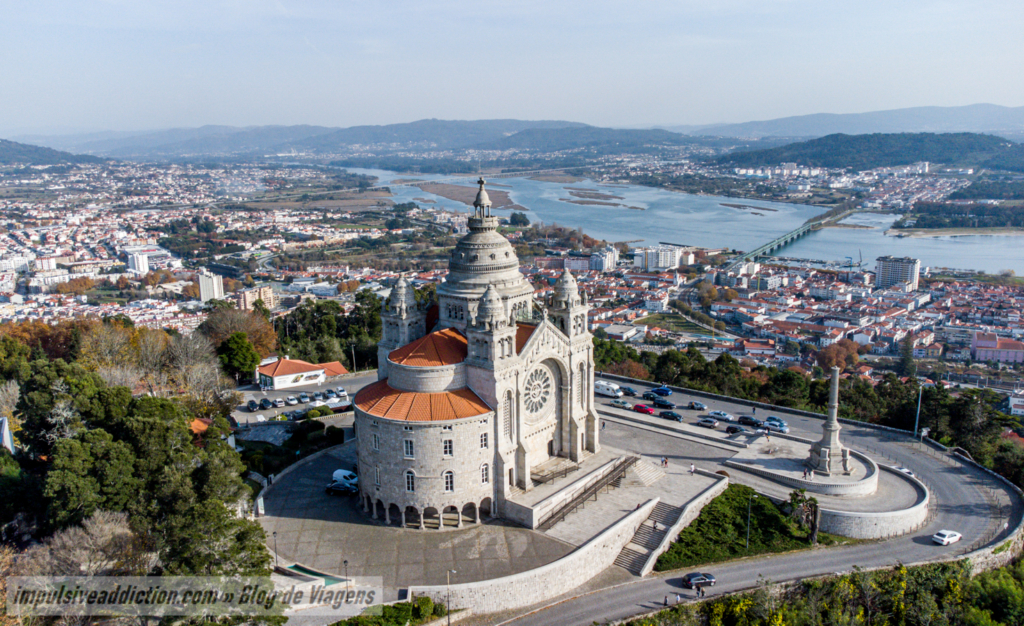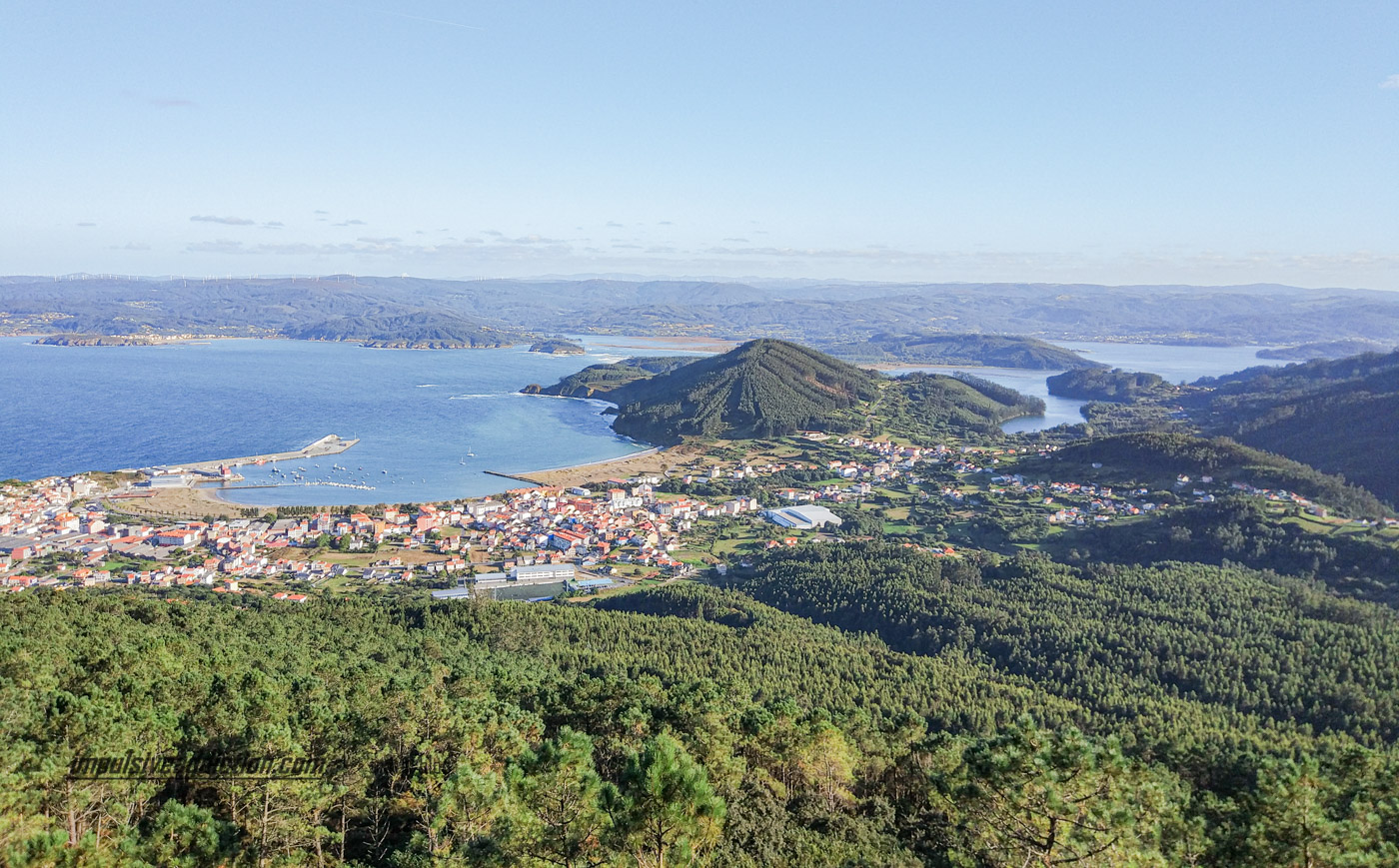One of the four provinces of Galicia is La Coruna, where you’ll find a stunning and diverse coastline: to the west, bathed by the Atlantic Ocean, and to the north, by the Cantabrian Sea. It’s also in this province where you’ll find the most important city in Galicia, a place of important pilgrimages, Santiago de Compostela.
This province was the first one I explored when I visited Galicia a few years ago, mainly because I wanted to follow a roadtrip on the magnificent “Death Coast“, with its impressive viewpoints, cliffs, and lighthouses. But besides that coast, there are also beautiful estuaries with incredible beaches, which are truly stunning, although the water can be cold:
- Barqueiro Estuary, bordering the province of Lugo.
- Ortigueira Estuary.
- Cedeira Estuary.
- Ferrol Estuary.
- Ares and Betanzos Estuary.
- La Coruña Estuary.
- Corme and Laxe, Camariñas and Corcubión Estuaries (three distinct estuaries) along the Death Coast in Galicia.
- Muros and Noya Estuary.
- And Arousa Estuary, which borders the province of Pontevedra.
I have already visited all of them, some better than others, but the essential is already etched in my memory, and that’s what I’m here to present to you: what I enjoyed the most during my trip through the province of La Coruna, the highlights, everything that you too can and should add to your itinerary there.
There are so many things to do in La Coruna, and so many things to see and visit there for several days. 😉 I’m sure you will enjoy this region in the north of Spain.
Other useful articles in this blog: 1 - Things to do in Santiago de Compostela 2 - Things to do in Galicia 3 - Things to do in Vigo 4 - Visit the Ons and Cies Islands 5 - Things to do in Pontevedra 6 - Things to do in Viana do Castelo 7 - Things to do in Braga 8 - Things to do in Porto 9 - Things to do in Guimarães 10 - Peneda Gerês National Park Itinerary 11 - Douro Valley Itinerary 12 - Trás-os-Montes Itinerary 13 - Things to do in Esposende 14 - Things to do in Barcelos 15 - Things to do in Arcos de Valdevez 16 - Things to do in Caminha 17 - Things to do in Valença 18 - Things to do in Monção 19 - Things to do in Ponte de Lima 20 - Things to do in Matosinhos 21 - Things to do in Vila do Conde 22 - Things to do in Póvoa de Varzim 23 - Things to do in Vila Nova de Gaia 24 - Minho | Northern Portugal Itinerary
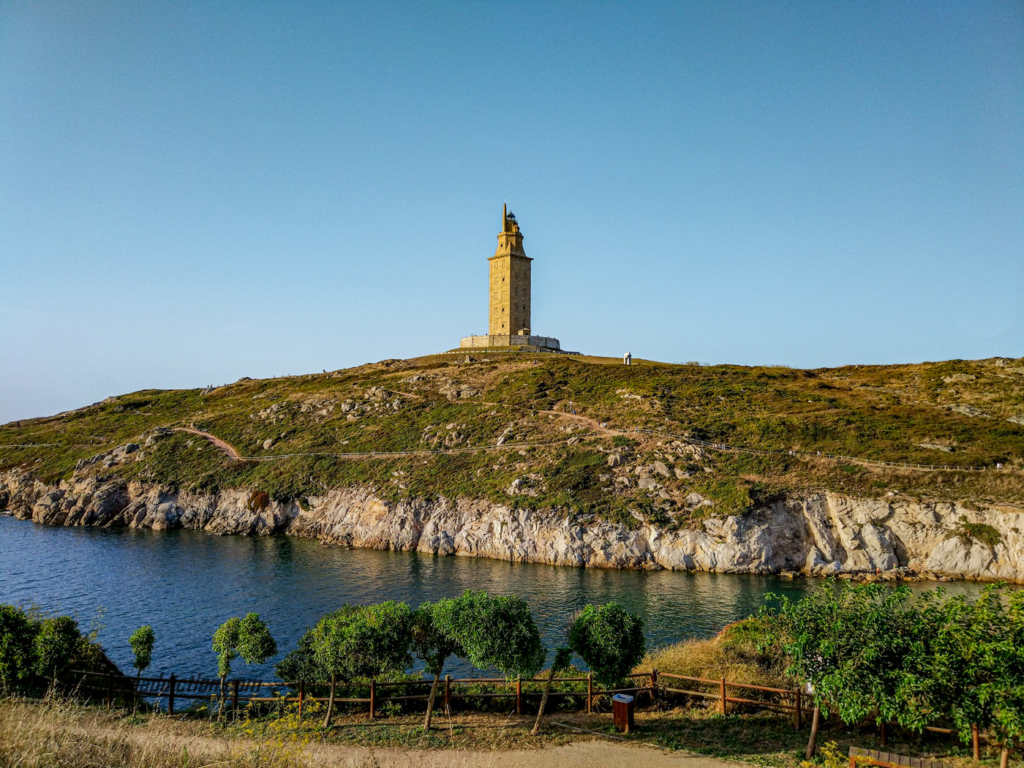
How to get to La Coruna, in Spain?
If you’re planning a trip to La Coruna but haven’t booked your travel yet, I recommend using Skyscanner or Google Flights to compare prices and flight conditions before making a purchase. Flying there is an option because Galicia has 3 different airports, one of them being in Vigo, the other one in Santiago de Compostela, and the third one exactly in La Coruna.
If you’re already in the region and looking for public transport options, there are trains and buses available. Check out Rome2rio website to explore possible routes to your destination. For example, you will find many trains from other locations of Spain with Renfe. Regarding buses check with ALSA or with MonBus.
That being said, car may not be needed if you just want to visit the historic center of La Coruna, however, I highly recommend you do visit more than just that, renting a car for a longer roadtrip through the province coastline. Discover Cars is a great resource to compare prices and options from multiple car rental companies before choosing the best fit for your needs.
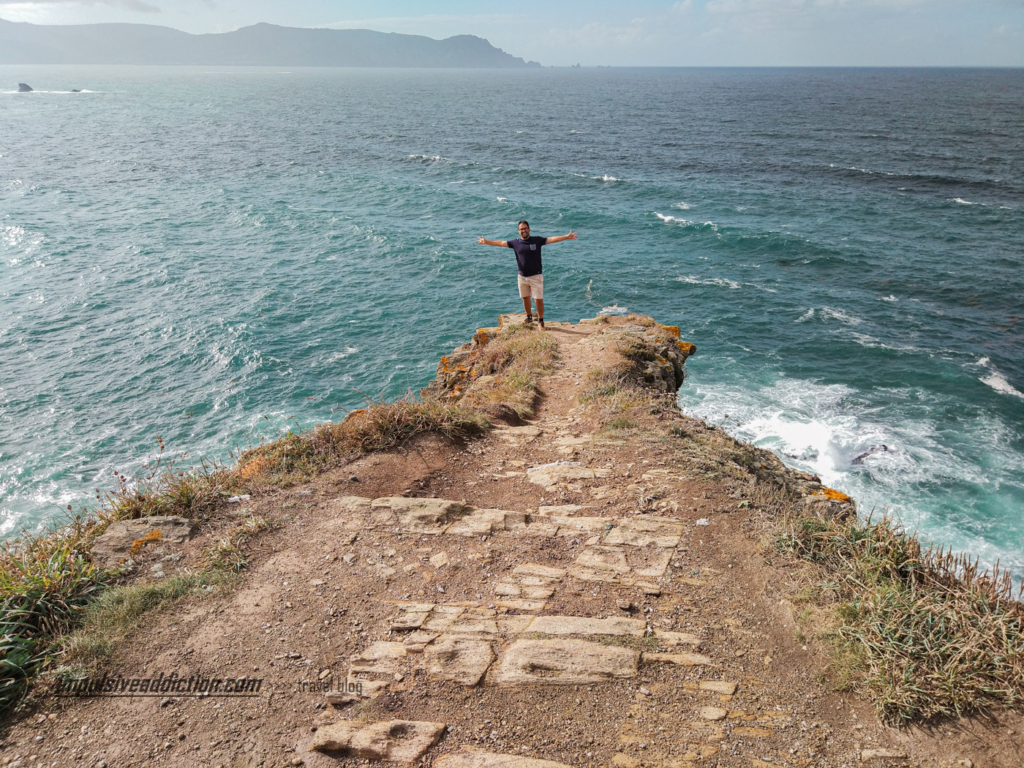
Take out Travel Insurance to visit Spain
To be protected against several types of travel hazards, I also recommend that you take out travel insurance for your stay in Spain, and I recommend to do it with World Nomads.
When to visit La Coruna?
You can visit La Coruna at any time of the year, as long as the weather is good for admiring the coastal landscape. However, it is during summer that you’ll be able to fully enjoy the many beaches of the region, which are fabulous apart from the cold water.
If you’re coming to Galicia for a visit to Santiago de Compostela, then try to do so in the last two weeks of July when the city hosts its biggest celebrations in honor of the Apostle’s Day.
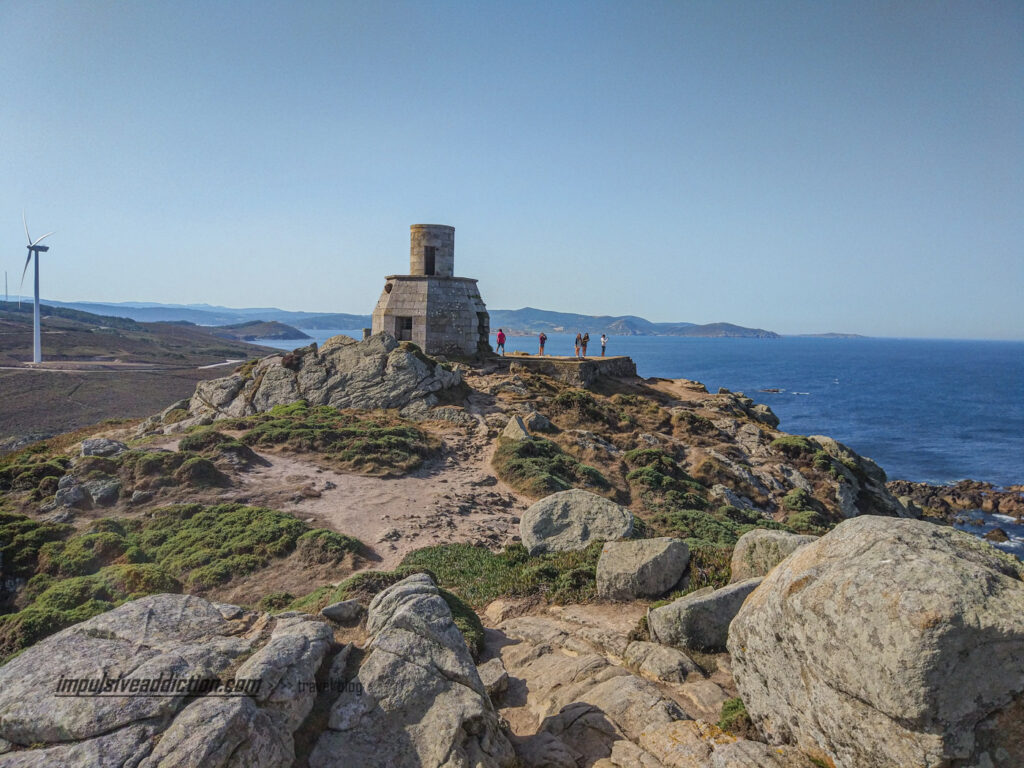
Guided Tours to visit La Coruna
For a road trip in La Coruna, having a car is indeed ideal, as I mentioned before. This way, you can travel at your own pace and have much more freedom in following your itinerary.
Another possibility, however, is to take guided tours to visit the province. There are several options available from Santiago de Compostela or even from the city of La Coruna, for example with Get Your Guide, Viator or Civitatis. Below, I’ll give you some tips, but of course, you can find other alternatives if you do your own research. It’s best to book those that offer free cancellations close to the date of the tour and choose those with more reviews and positive ratings! 😉
Tours with Get Your Guide: 1 - Guided City Walking Tour with Food Tasting 2 - Guided Tour at MEGA - Mundo Estrella Galicia 3 - Private Walking Tour with Local Guide in La Coruna 4 - From Santiago: Finisterre, Muxia & Costa da Morte Excursion
Tours with Viator: 1 - Segway Tour of Hercules Tower 2 - Food Market visit and Cooking Workshop in La Coruna 3 - Guided Visit to the Estrella Galicia Museum with Beer Tasting 4 - From Santiago de Compostela: Finisterre, Muxía & Death Coast
Tours with Civitatis: 1 - Finisterre and Costa da Morte Day Trip (From Santiago de Compostela) 2 - A Coruña and Betanzos Trip (From Santiago de Compostela) 3 - Finisterre & Costa da Morte Day Trip (From La Coruna)
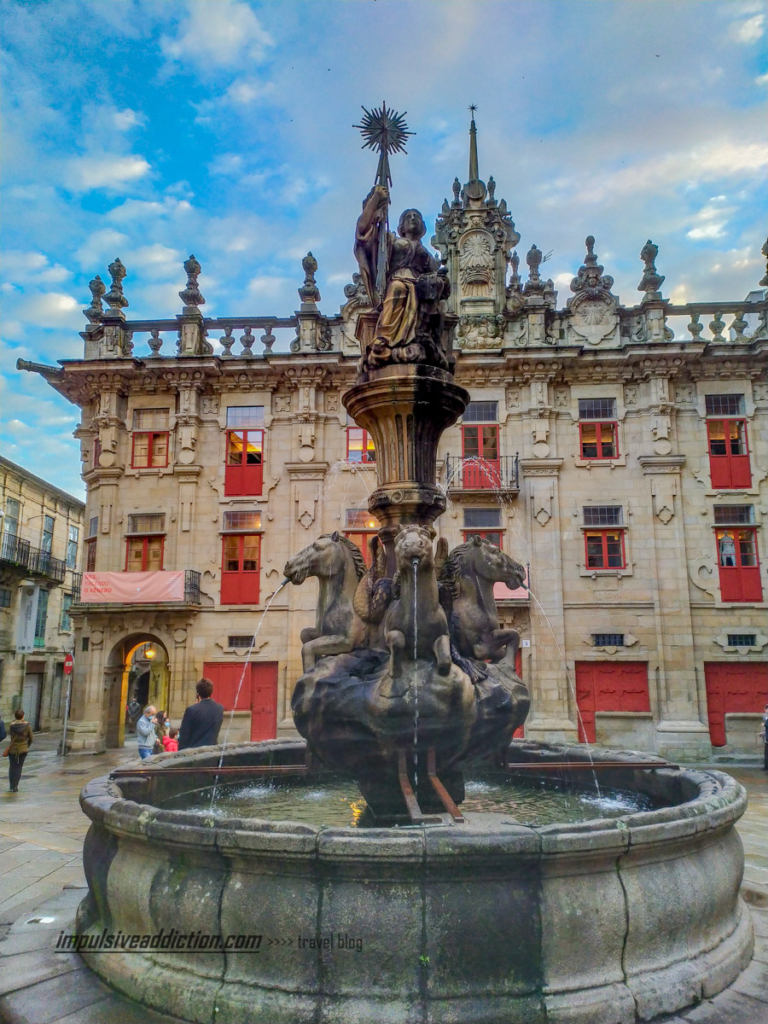
Gastronomy and Restaurants in La Coruna?
- The fish is undoubtedly the main highlight, especially octopus or mussels. But any kind of seafood or fresh fish in coastal towns of La Coruna will be an excellent choice. How about some gratin scallops?
- Don’t miss the opportunity to try the Galician Pie, which is a kind of empanada.
- Indulge in discovering various types of tapas, so typical of Spain.
- When visiting Santiago de Compostela, you must absolutely taste Santiago traditional Pie!
- Experience Estrella Galicia Beer! 😉
In addition to the suggestions I’ve mentioned for dining in Santiago de Compostela (check my dedicated article), here are some other restaurant recommendations in the province of La Coruna, but there are plenty of alternatives!
- A Taberna de Cunqueiro – City of La Coruna
- Lonxa d’Alvaro – Muxia
- Tira do Cordel – Finisterre
- Mar De Fondo – Laxe
- Casalexo – Ferrol
Things to do in La Coruna | Spain
Let’s get to the topic of Things to do in La Coruna, now! I’ll start with Santiago de Compostela, as it is the heart of the province. After that, I’ll mention all the places to visit on the coast or near it, from Barqueiro Estuary to Arousa. Along the way, I’ll inevitably introduce you to other important cities in the province, such as Ferrol. At the end of this article, you’ll have a map with all the most important tourist spots.
I sincerely believe that you will have a good and detailed starting point here to explore the region of La Coruna. Galicia has a lot to offer; I have been traveling there for several years on extended weekends, and I still have places on my list to visit. I am never disappointed with its natural beauty.
Visit Santiago de Compostela, the most important city in La Coruna
I have an article on my blog solely dedicated to Things to do in Santiago de Compostela, so I’ll only mention here what, in my opinion, are the top five highlights of the city:
- Obradoiro Square and Santiago de Compostela Cathedral.
- Market of Abastos.
- Quintana and Praterías Squares.
- Rúa do Vilar (most beautiful road in the city).
- Alameda Park.
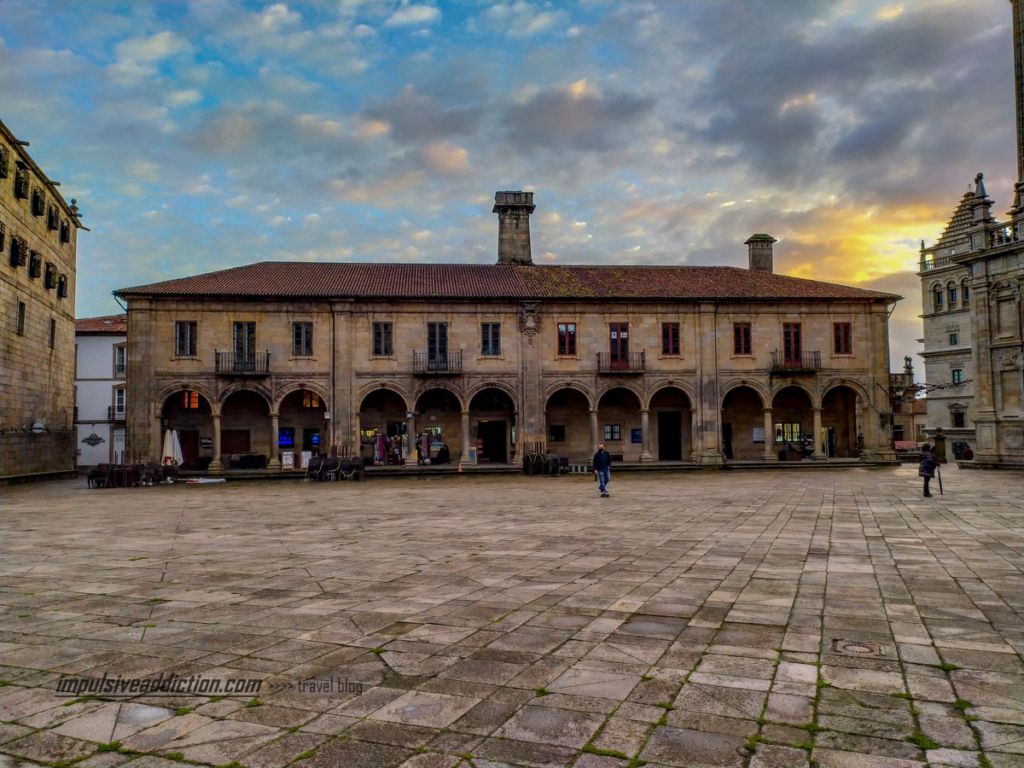
These five places are a matter of preference. Read my other article to learn more, in more detail, with photos of all these places and many others.
Accommodation tips to visit Santiago de Compostela: Campanas de San Juan | Pensión Residencia Fonseca | Casa da Balconada | Hotel San Miguel | Hostal Alfonso | Parador de Santiago
Visit Ponte Maceira, near Santiago de Compostela
Ponte Maceira is located near Santiago de Compostela, on the banks of the Tambre River. What attracted me to this place was the extraordinary and monumental old bridge, and it also seemed to be a fantastic spot for summer swims. It appeared to have the conditions of an excellent river beach, with a green and unusual surrounding environment.
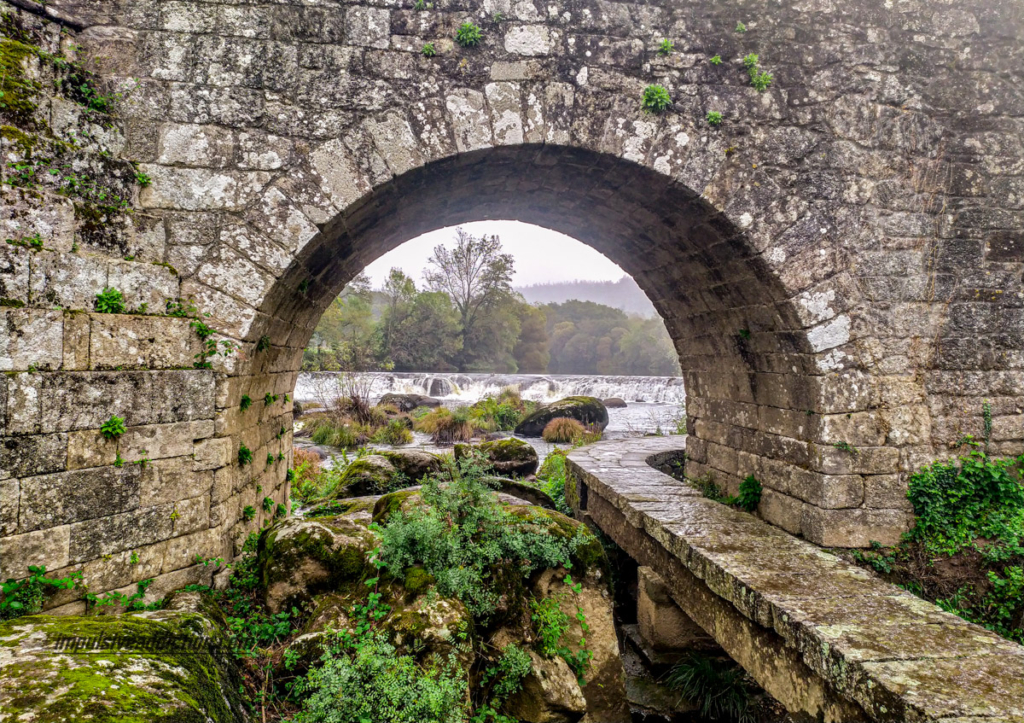
Visit Padrón
Padrón is located south of Santiago de Compostela and is worth a quick stroll through its historic center. I particularly highlight the walk along the banks of the Sar River (“passeo do Espolón“), and a visit to the Carmo Convent, Santiago Bridge, and of course, to the botanical garden. It wasn’t by any means my favorite place in La Coruna, but it certainly deserves a quick stop.
Visit Barqueiro and Ortigueira Estuaries in La Coruna
1. Lighthouse of Ponta da Estaca de Bares
Estaca de Bares is bordered on one side by Barqueiro Estuary and on the other by Ortigueira Estuary. That’s why it’s so important for you to go to the lighthouse, as along the way you’ll inevitably have panoramic views of them both (for example, from the viewpoint of Semáforo de Bares near the hotel of the same name).
Estaca de Bares lighthouse is the only place I consider a must-visit in this region. However, if you have time, you can optionally also stop at Porto de Bares or even Porto de Barqueiro. I say they are optional because there are so many other extraordinary maritime places along the coast, and I will tell you all about them.
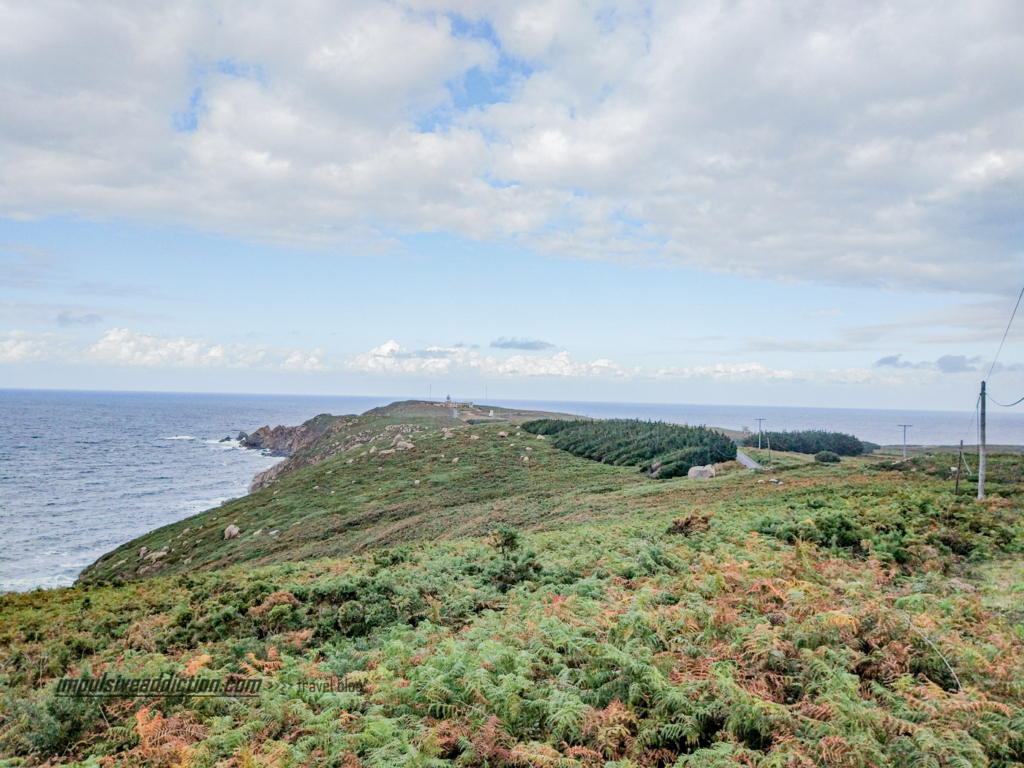
2. Lighthouse of Ortegal Cape, in Cariño
On one side of Ortigueira Estuary you have Ponta de Estaca de Bares, as I mentioned; on the other side is Ortegal Cape. Its Lighthouse is one of the most interesting to reach on the coast of Galicia, so do not miss it. 😉
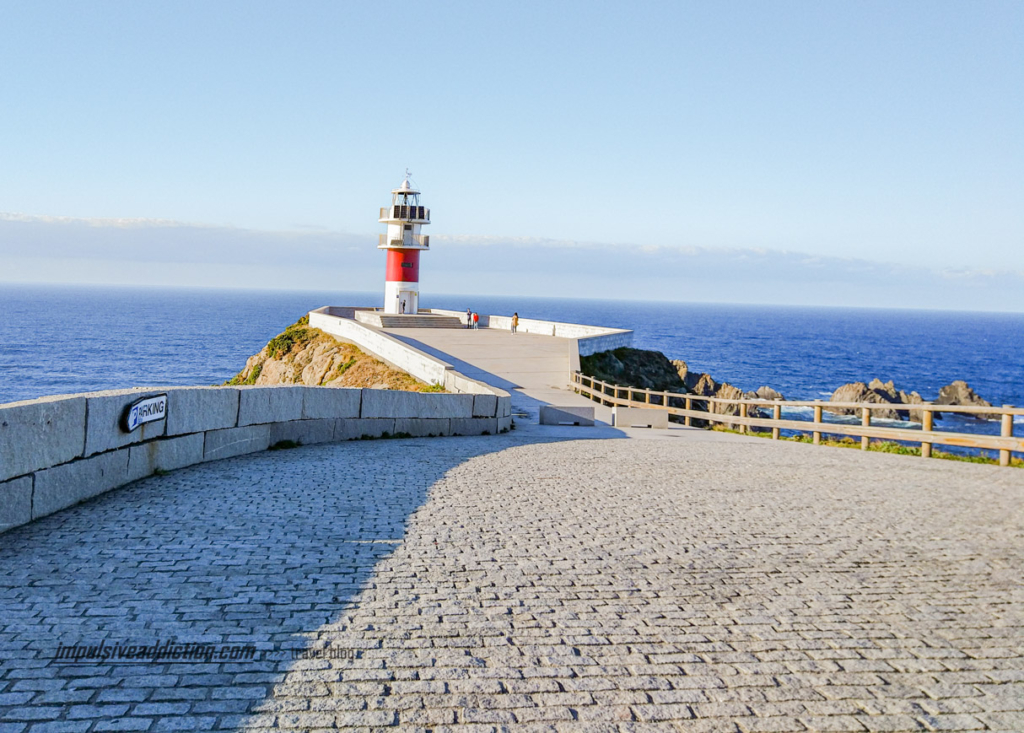
3. Coitelo Viewpoint – “The Best Bank in the World”!
I found this bench very interesting because it has this English description written on it: “The best bank of the World”. When I searched for it in Google, I also found that it is often described as the “most beautiful bank in the world”, and the place is famous because of it. The viewpoint from the bench is called Coitelo Viewpoint, and some people say that during the night, this place in La Coruna is an excellent stargazing spot. Unfortunately, I wasn’t there at night to confirm it.
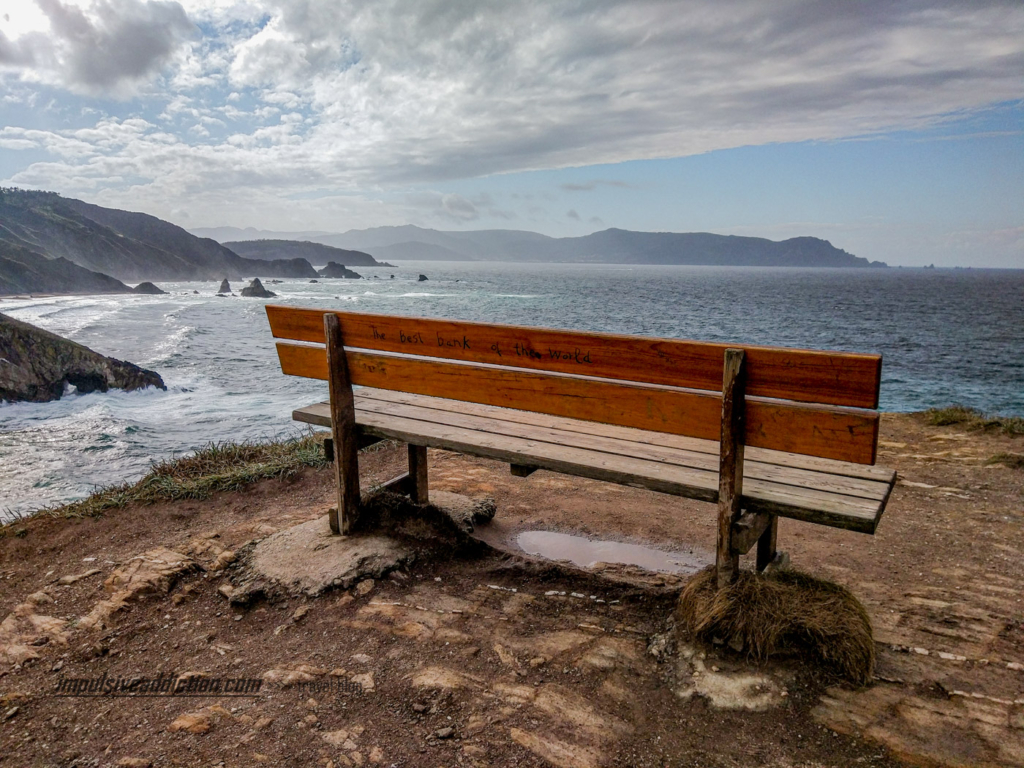
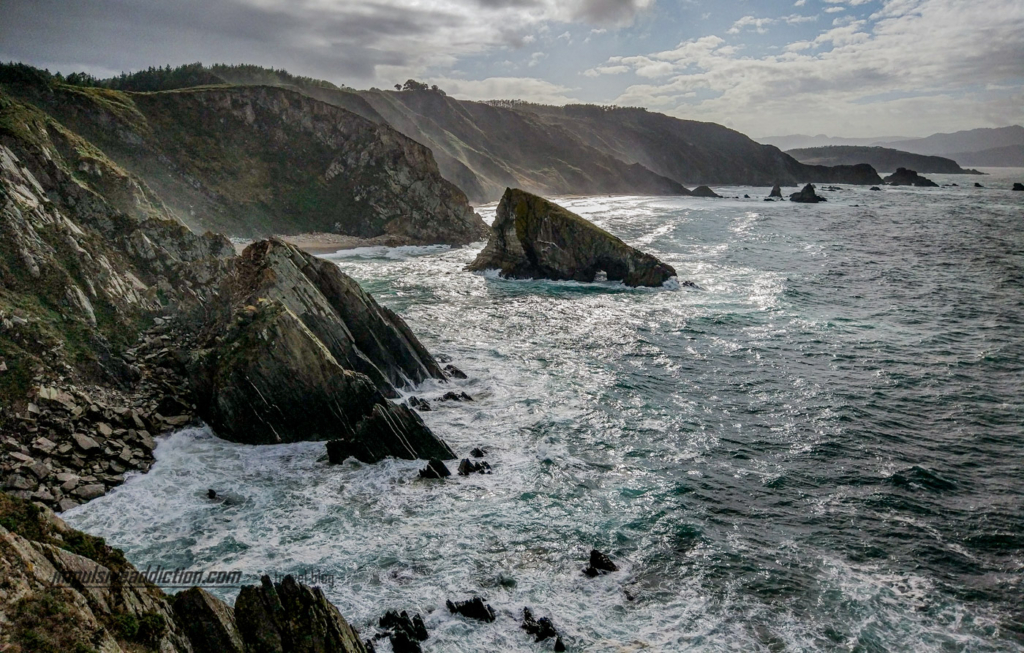
4. Pena Furada Viewpoint, in Ortigueira
Pena Furada viewpoint is located just above Sarridal Beach in La Coruna, and its name comes from the perforated rock that you can observe in the photo below.
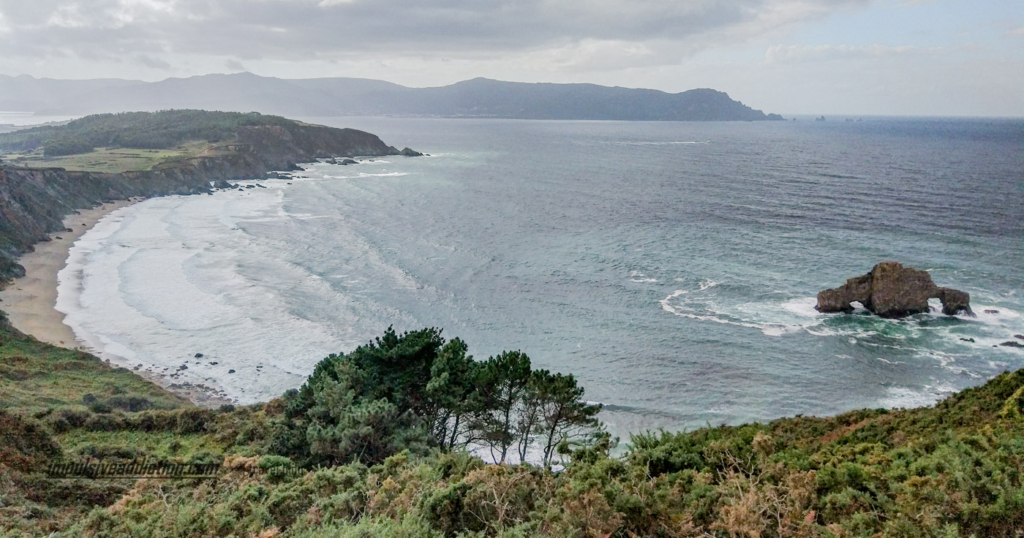
5. Castelo do Cason Viewpoint, in Ortigueira
This is a viewpoint overlooking the Ortigueira Estuary, and from there you can see most of its curves. Incredible!
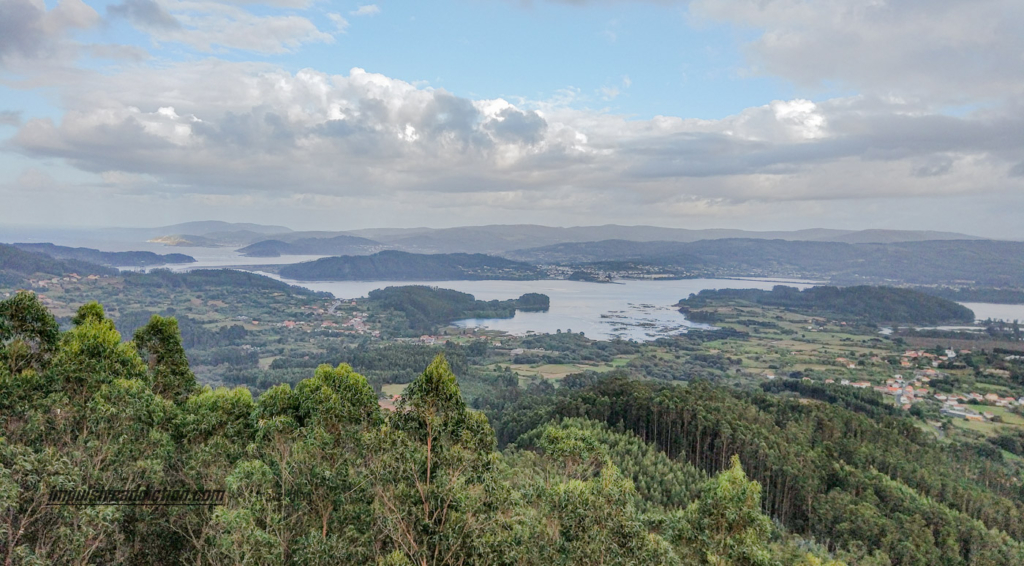
6. Miranda Viewpoint, in Cariño
Similar to the previous one, but a few kilometers further ahead. You can see Ponta da Estaca de Bares in the distance, and therefore, the majority of Ortigueira Estuary.
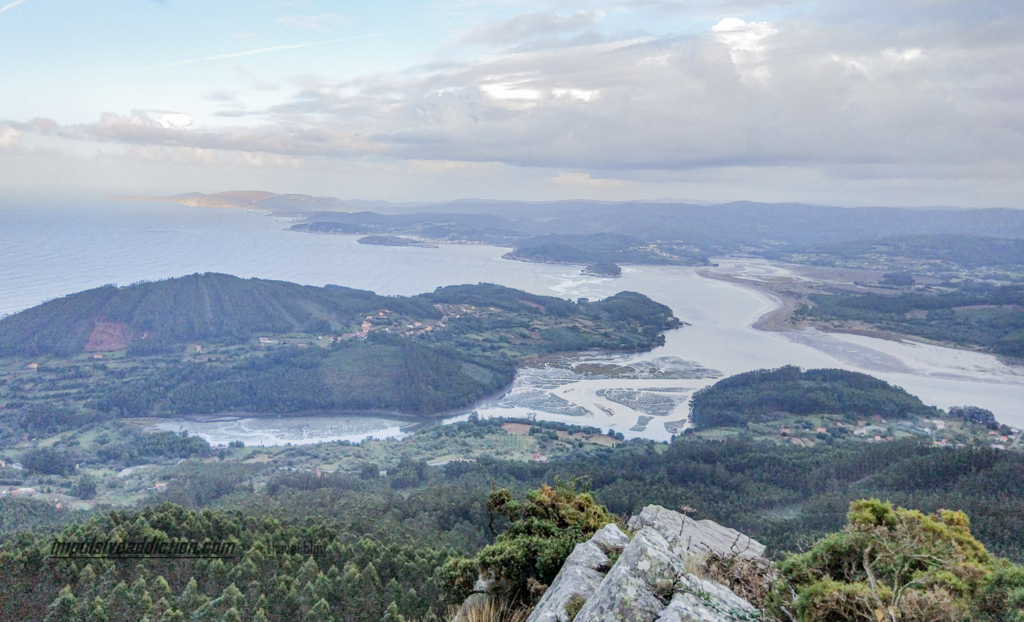
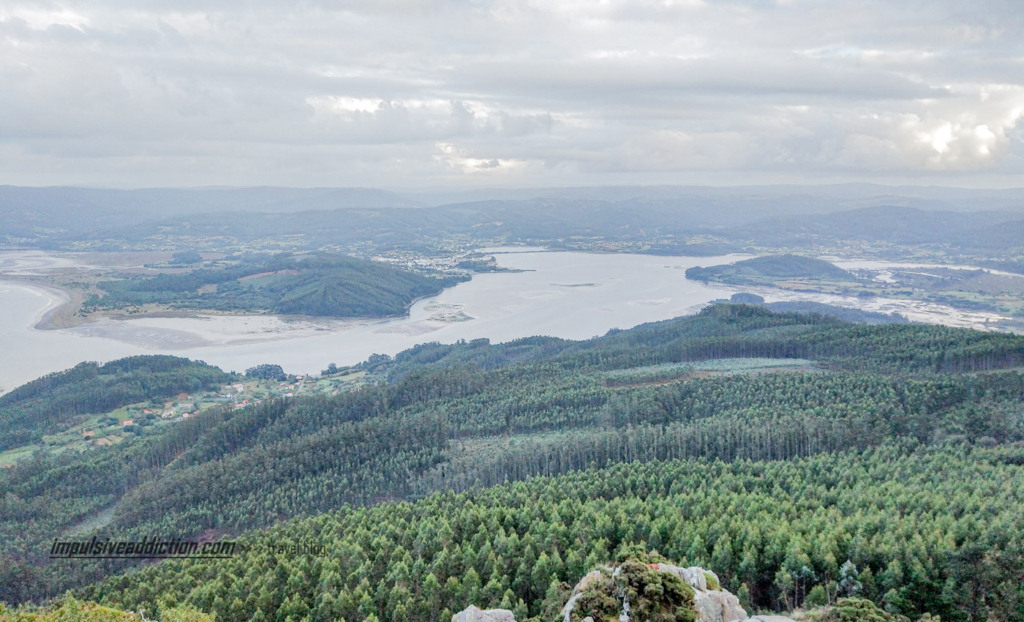
7. Limo Viewpoint to the region of Cariño
Cariño is the region in La Coruna where this landscape can be observed. Limo viewpoint, at the entrance of Serra da Capelada, also offers an incredible view of Ortigueira Estuary, being my favorite spot in this area of the province. Additionally, on the day I visited, I encountered many animals along the narrow road where the viewpoint is located.
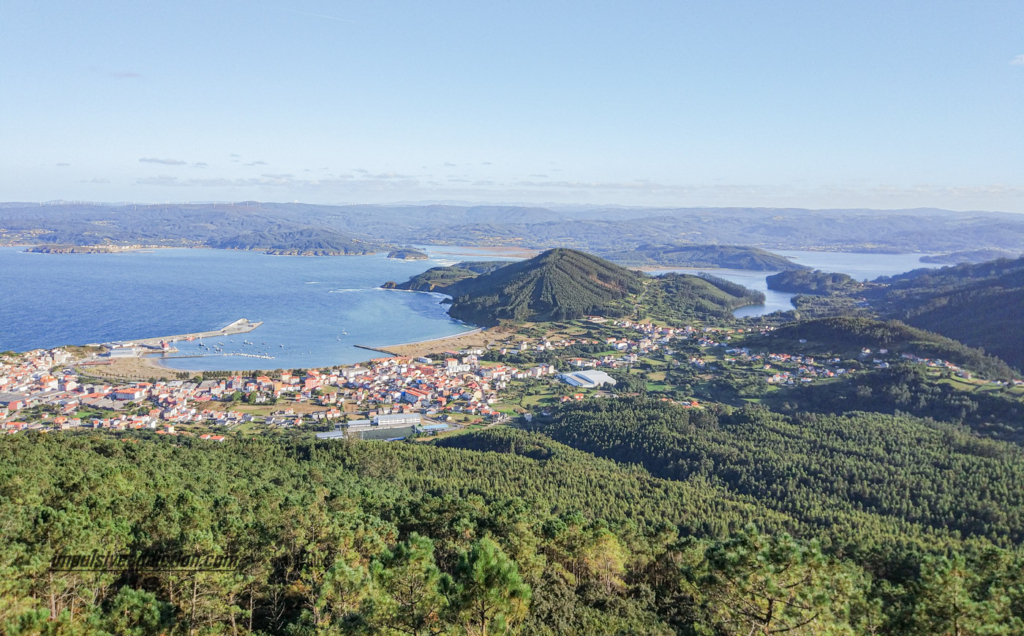
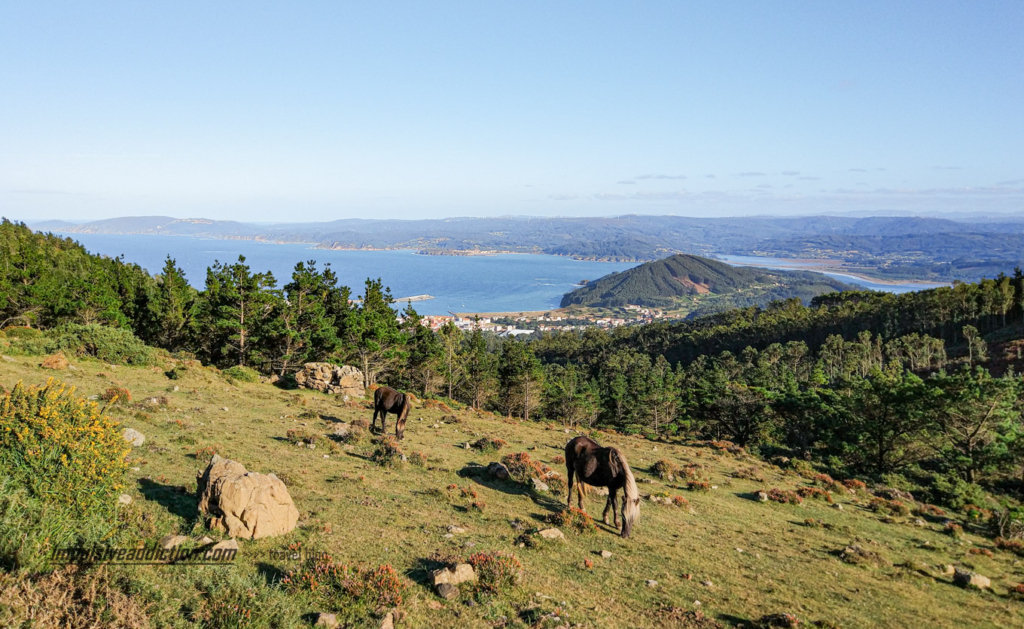

Accommodation tips to visit the region of Ortigueira Estuary
Visit Serra da Capelada, home to the tallest cliffs in La Coruna
At 620 meters above sea level, Vixía Herbeira is the highest point in Serra da Capelada and, therefore, a must-visit location to witness the cliffs of the Ártabra coast in La Coruna. Further along, it’s worth stopping at the Sanctuary of Santo André de Teixido, where it is said that “he who doesn’t go alive, will go three times dead” (are you willing to take the risk?). To wrap up your visit, make a stop at the Punta Candelaria Lighthouse.
The Sanctuary of Santo André de Teixido is a pilgrimage site, with the main celebration taking place on September 8th. It would be even better to visit during this occasion.
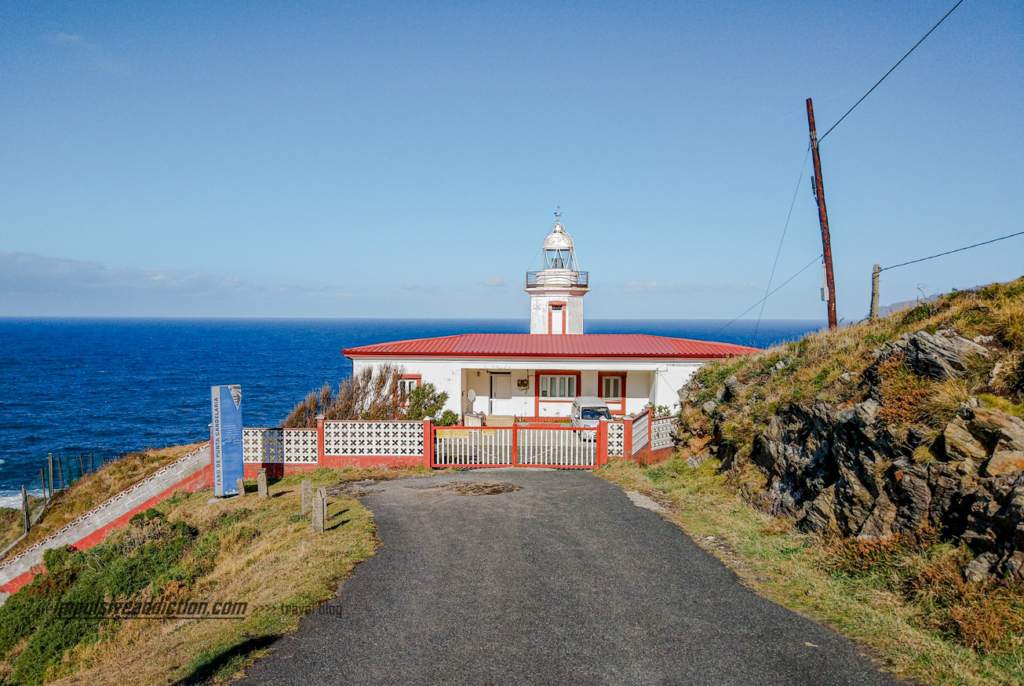
Visit Vilarrube Beach in Cedeira Estuary
In Cedeira Estuary, the main highlight are its beaches, and the most appealing one, in my opinion, is the huge beach of Vilarrube. I recommend taking a dip in its chilly waters before moving on to your next destination on your road trip through La Coruna coast.
Visit Ferrol Estuary and its Naval History
If you want to delve into the naval history of this province of Galicia, visiting the port city of Ferrol is one of the must things to do in La Coruna. You will discover that the maritime past of the region is evident here, an there are naval museums to visit, as well as forts built to defend the estuary, with the Castle of San Felipe being the most interesting.
Things to do in the city of Ferrol, in La Coruna?
For a quick visit to the center of Ferrol in La Coruna, I recommend not missing the following main tourist attractions:
- Start your stroll in the city, by visiting Plaza das Armas, where the City Hall of Ferrol is located.
- Continue along Rua Real towards Reina Sofía Park, stopping at the Church of Nossa Senhora das Dores and the adjacent square, next to the Maritime Captaincy of Ferrol, and at the Church of São Francisco.
- Visit the Bastion of San Xoán, and then the Church of Nossa Senhora do Socorro.
- Enjoy the pleasant atmosphere surrounding the marina of Ferrol, and then delve into the naval history by visiting Ferrol Arsenal and the naval and shipbuilding museums.
- Don’t forget to take a peek at Pescaderia, and on your way to the Constitution Square, make a stop at the Co-Cathedral of San Julián de Ferrol.
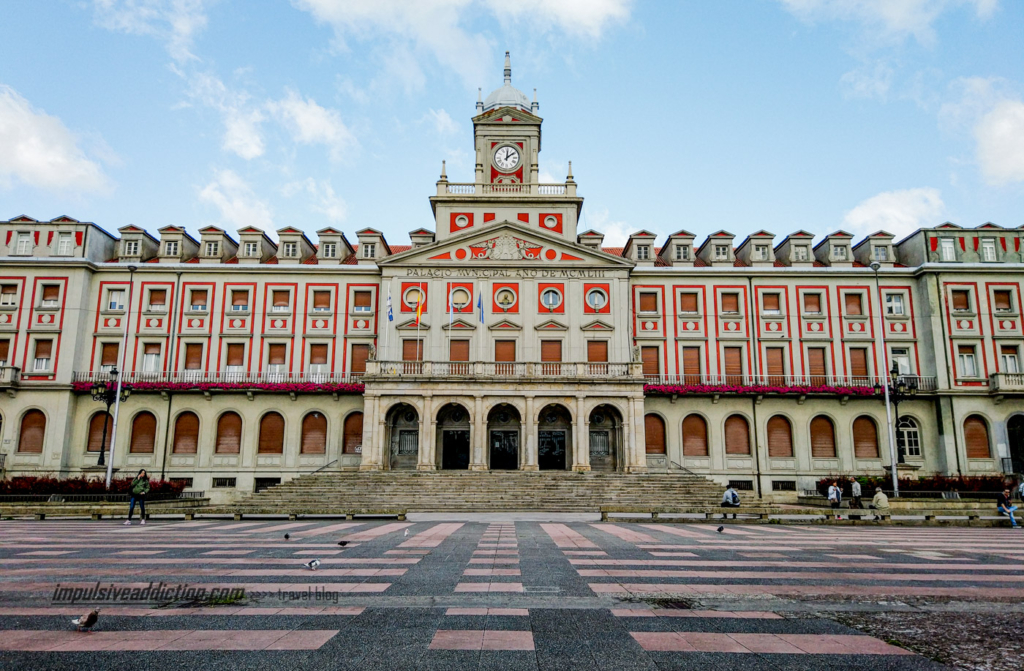
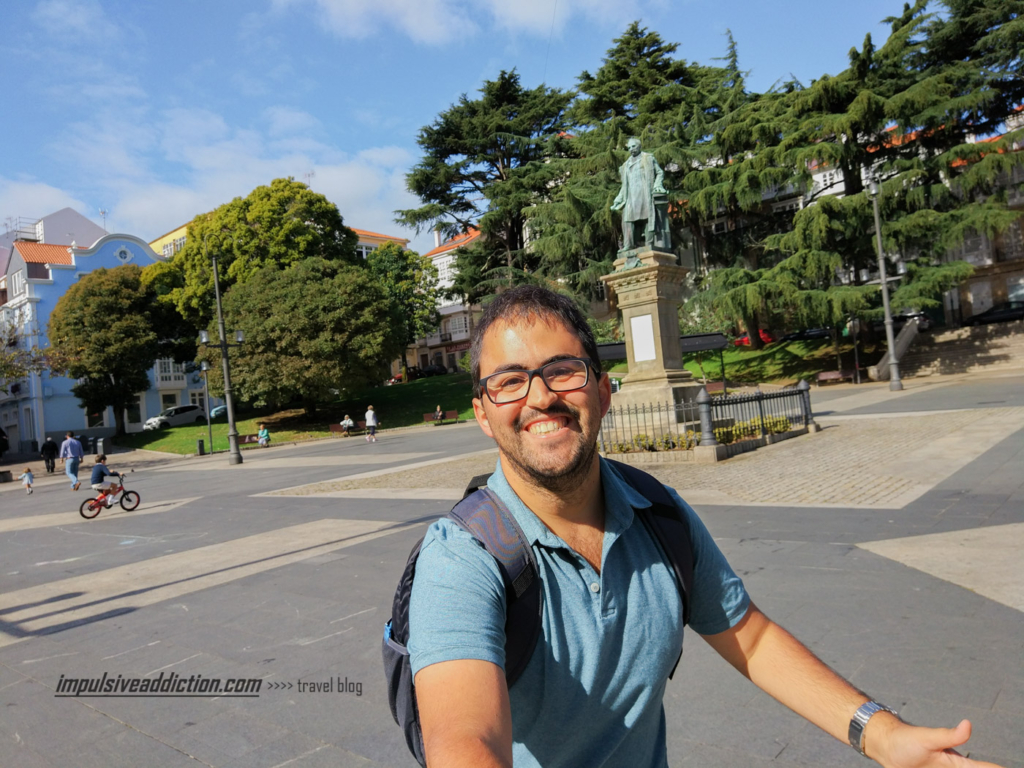
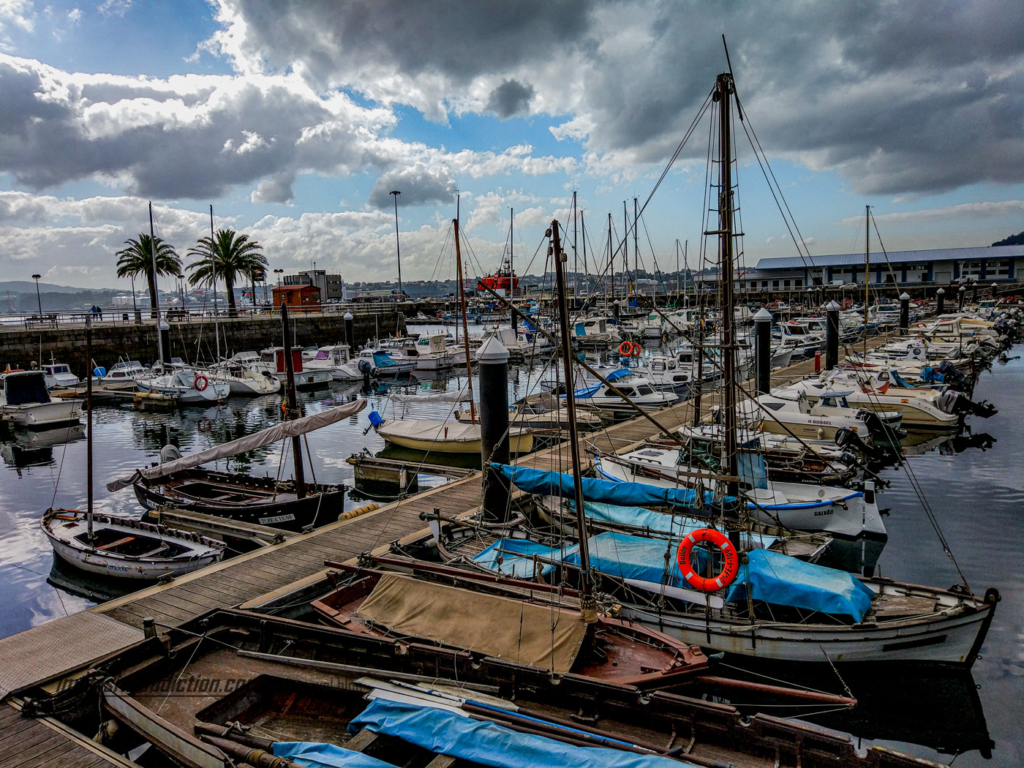
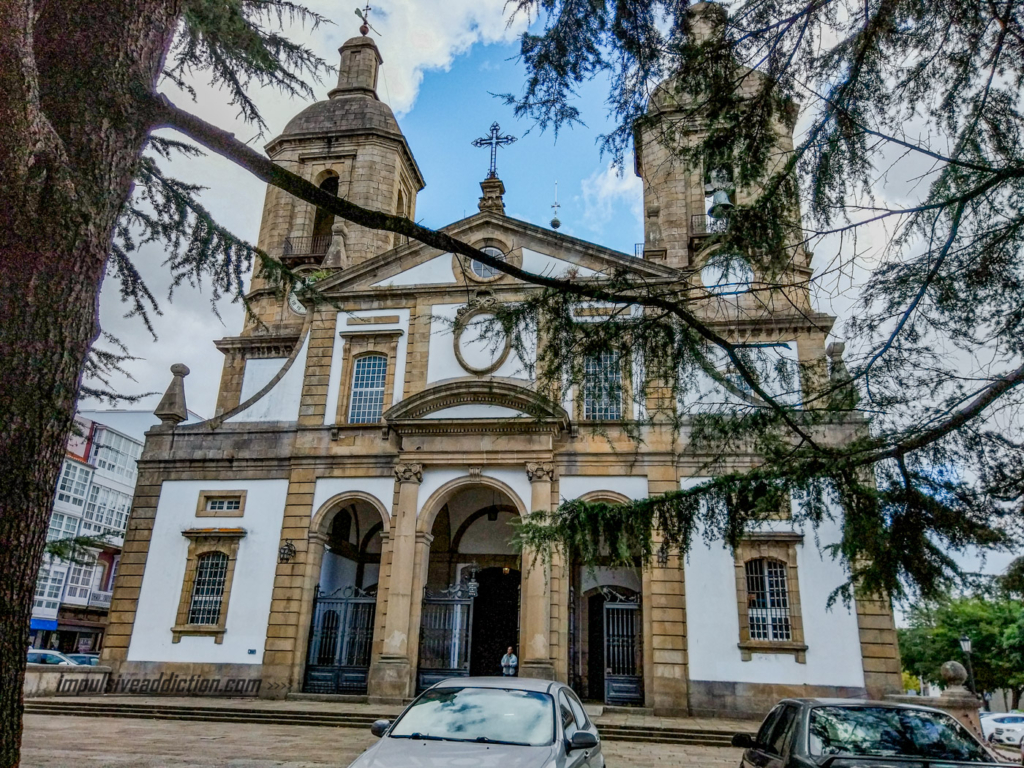
Accommodation tips to visit Ferrol
Things to do in Ferrol surroundings, in La Coruna?
I suggest the visit to the following essential places for your road trip in La Coruna:
- Castle of San Felipe.
- Castle of La Palma.
- Ruins of the castles of San Carlos, San Martin, and San Cristobal.
- Pena Bailadora Viewpoint (overlooking Ferrol Estuary) and the Monastery of Santa Catalina de Montefaro.
- At the other end of Ferrol Estuary, don’t forget Ancos viewpoint for another perspective of the estuary in the province of La Coruna.
- The Monastery of San Martín de Xubia.
- If you want to add Cape Prior Lighthouse to this list, go ahead, even if it is not located in the estuary of Ferrol! The same goes for the Lighthouse at Ponta Frouxeira. Both are in beautiful locations.
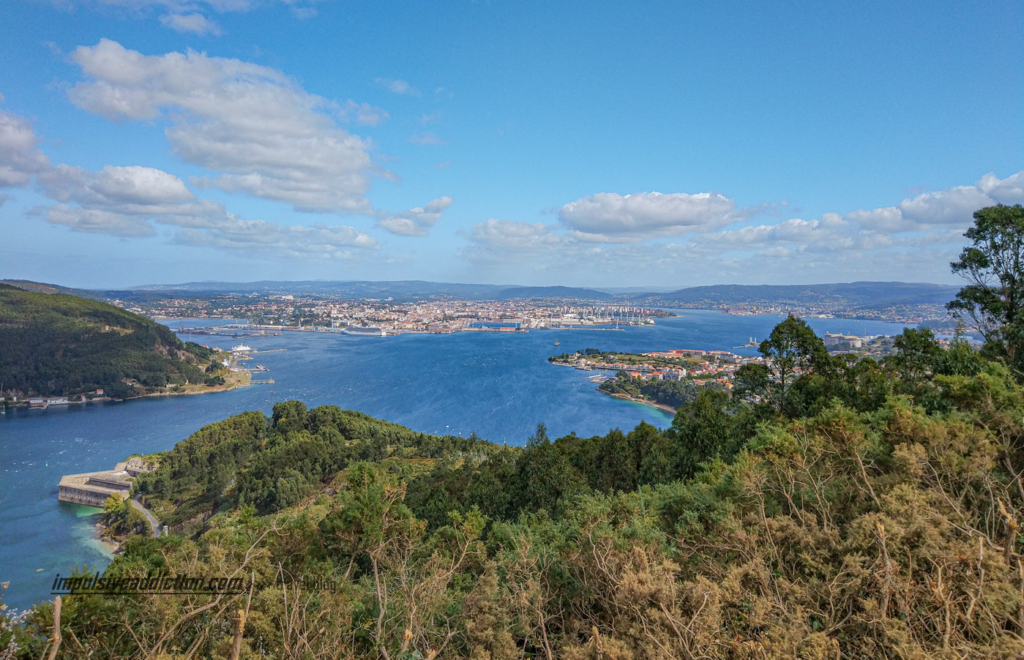
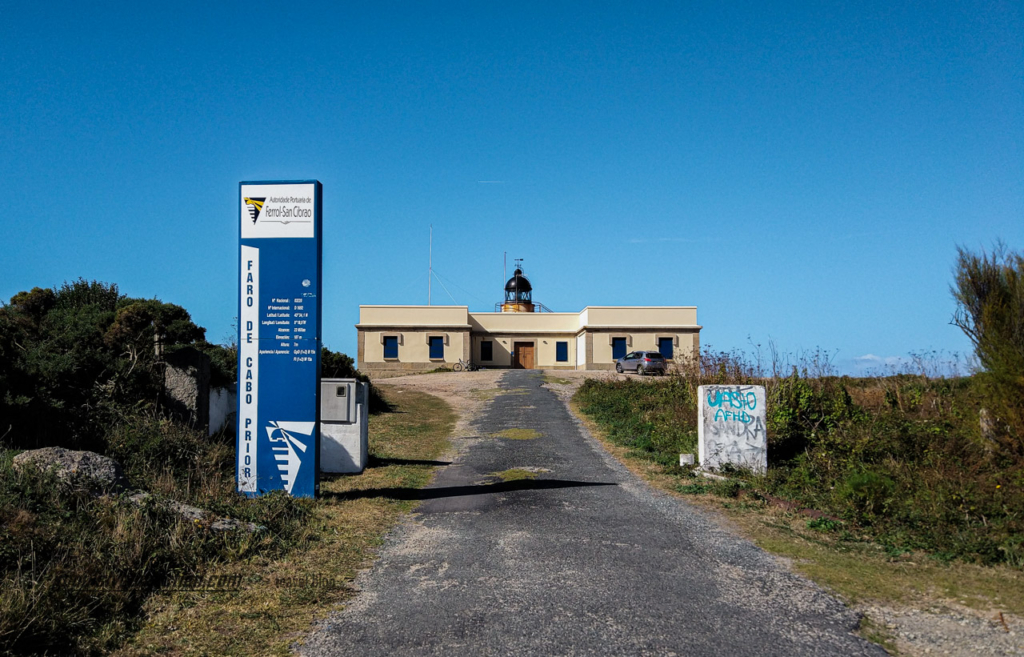
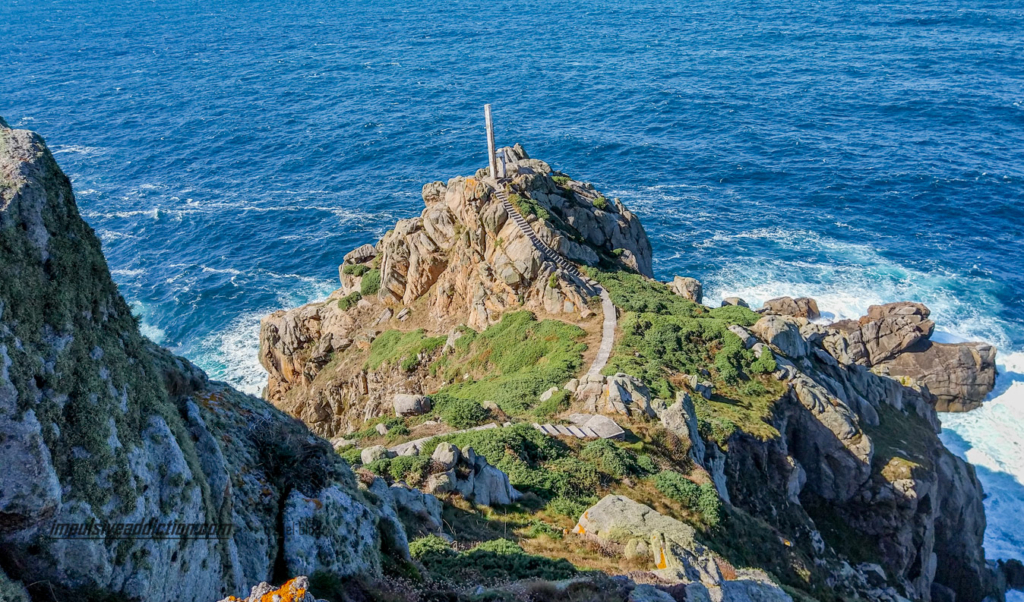
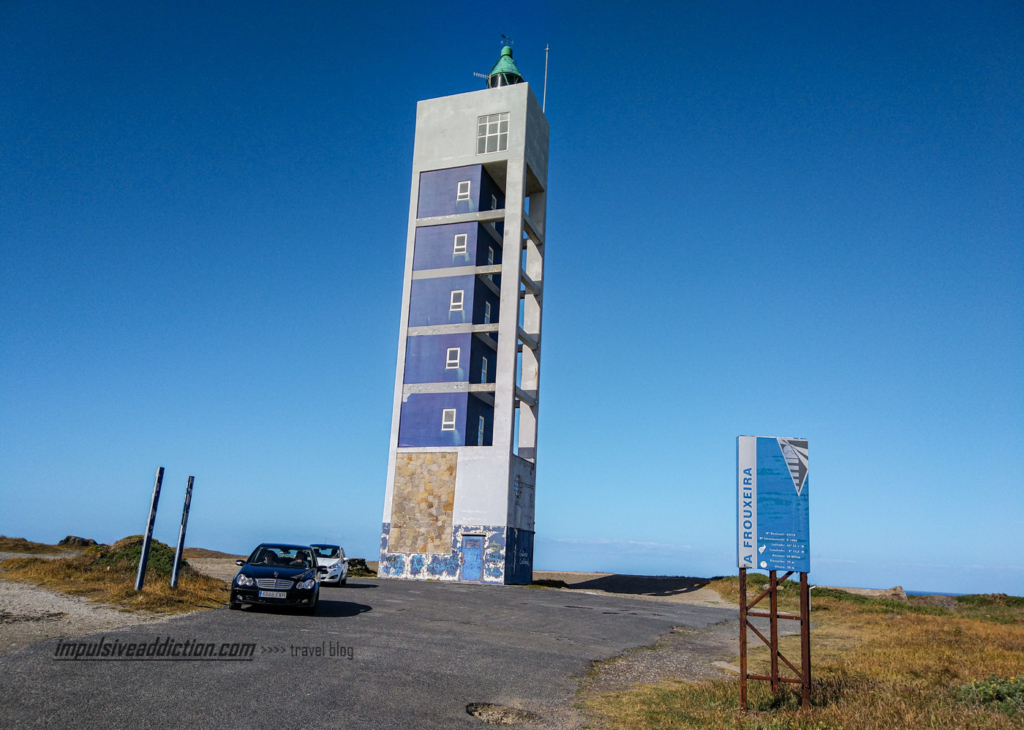
Visit Ares and Betanzos Estuary, in La Coruna
I didn’t get to know much of Ares and Betanzos Estuary, as it tends to go unnoticed being located between the big cities of La Coruna and Ferrol. But from what I saw there, I believe it can be interesting to explore some of the towns nearby, such as Pontedeume and Betanzos.
Pontedeume is located on the banks of Eume River and has a beautiful bay usually filled with colorful boats. I recommend strolling along its seaside promenade and crossing the bridge over the river.
Betanzos, on the other hand, has an interesting historic center. I particularly highlight the Church of Santiago in Constitution Square, the Church of Santa Maria de Azougue in Fernan Perez de Andrade Square, and the nearby Church of San Francisco. Don’t forget to visit the more modern Garcia Hermanos Square as well. Betanzos is located at the confluence of two rivers, Mandeo and Mendo, which flow into the Estuary mentioned.
As for beaches, I really enjoyed the Madalena Beach, located near Pontedeume.
Accommodation tips to visit Betanzos and Pontedeume
- Montebreamo (Pontedeume)
- Hostal Pórtico (Betanzos)
- Mirador de La Muralla (Betanzos)
- La Casona de Betanzos
Extra: Fragas do Eume Natural Park
I haven’t visited this place in La Coruna yet, but it seems to be an excellent location to explore the wildest areas of Galicia. Eume River flows into Ares and Betanzos estuary and meanders all the way to its dam, where you’ll find the reservoir known as “Encoro do Eume“.
Here's a link to the Galicia Tourism Portal where you can find all the information you need about Fragas do Eume Natural Park, as well as photos of the place that I don't have since I haven't visited it myself.
To help you, I’ll list the tourist spots that I plan to visit, as they have been on my list for quite some time. Of course, plans may change once I’m there, and I might even design new itineraries by adding other places recommended by the locals in this region of La Coruna:
- Visit the Monastery of San Juan de Caaveiro. To reach it, it is recommended to hike there. In certain times of the year, there may be a bus taking you close to it.
- Visit Eume Dam.
- Discover some of the viewpoints overlooking Eume Reservoir, such as Carbueira viewpoint.
Visit La Coruna City and Estuary
1. Try the Regional Beer of La Coruna: Estrella Galicia
In the city of La Coruna, there are many places of interest to visit, including the Tower of Hercules or Mount San Pedro, where you will find a bird’s-eye view of the city. Maria Pita Square is not to be forgotten, and of course, the beach and the seaside promenade with its orange-toned lampposts. It was nice to relax there while savoring a regional Galician beer (Estrella Galicia), produced in La Coruna.
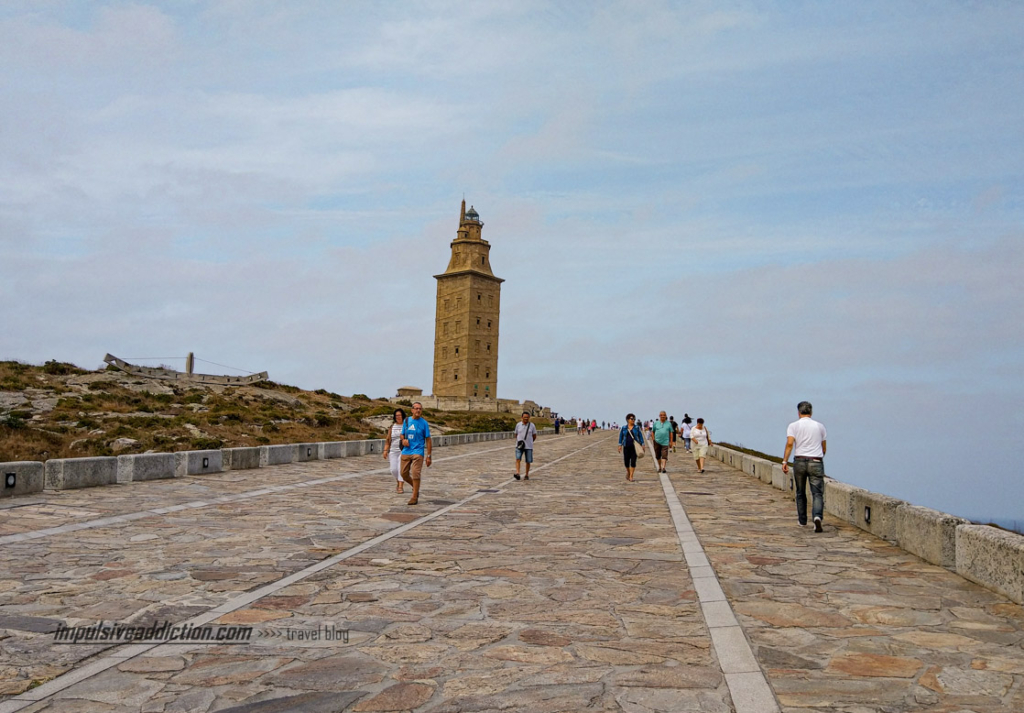
2. Tower of Hercules and La Coruna peninsula
The Tower of Hercules is located on the peninsula of La Coruna and is the only Roman lighthouse in the world still in operation, dating back to the 1st or 2nd century. Some discrete remnants of the original construction can still be seen, such as the inscription near the tower indicating its original builder.
Throughout its centuries-long existence, it has been used for various purposes, including as a fortress, defensive post, and lookout point. It stands at 68 meters tall. In 2009, it was classified as a UNESCO World Heritage site and has become the most iconic symbol of the city of La Coruna.
The tower is associated with a legend from Greco-Roman mythology about Hercules, who supposedly defeated a giant that ruled over this region, cutting off his head and burying it at the site where he later ordered the construction of the tower. If you observe the coat of arms of La Coruna, you will see the giant’s tomb depicted beneath the Tower of Hercules.
In the surrounding area of the tower, I highlight the stone road leading to it from the roundabout, and of course, the giant rose compass in the rear.
The peninsula functions as a park for the city of La Coruna, with green spaces filled with small attractions to discover, including statues, menhirs, and other small monuments that convey a bit of the history and legends of the place. Don’t forget to visit the Fenisterrae Aquarium.
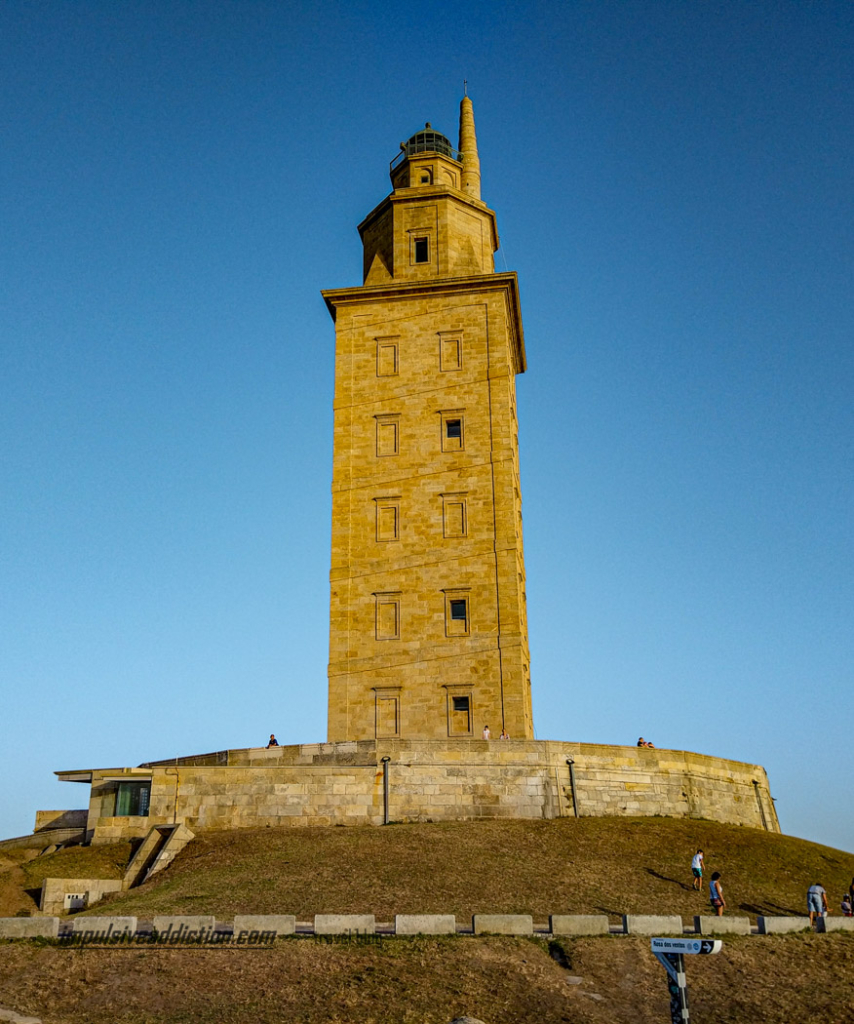
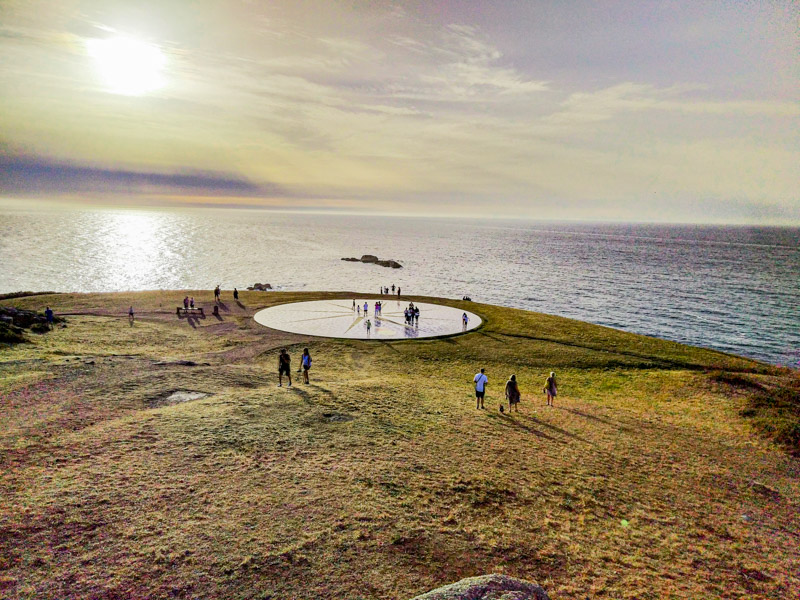
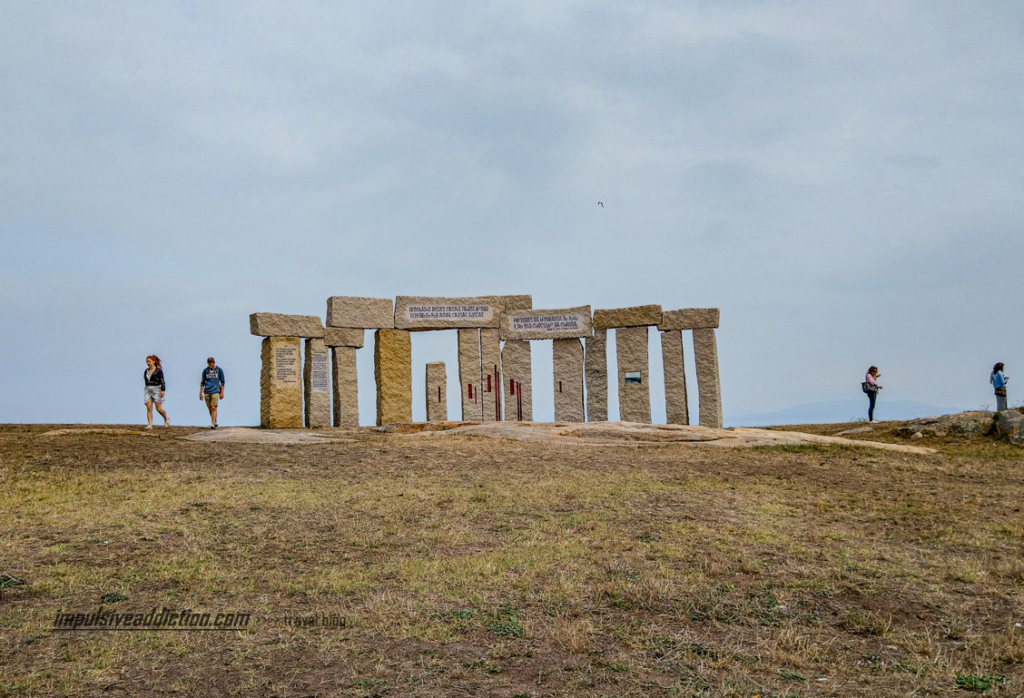
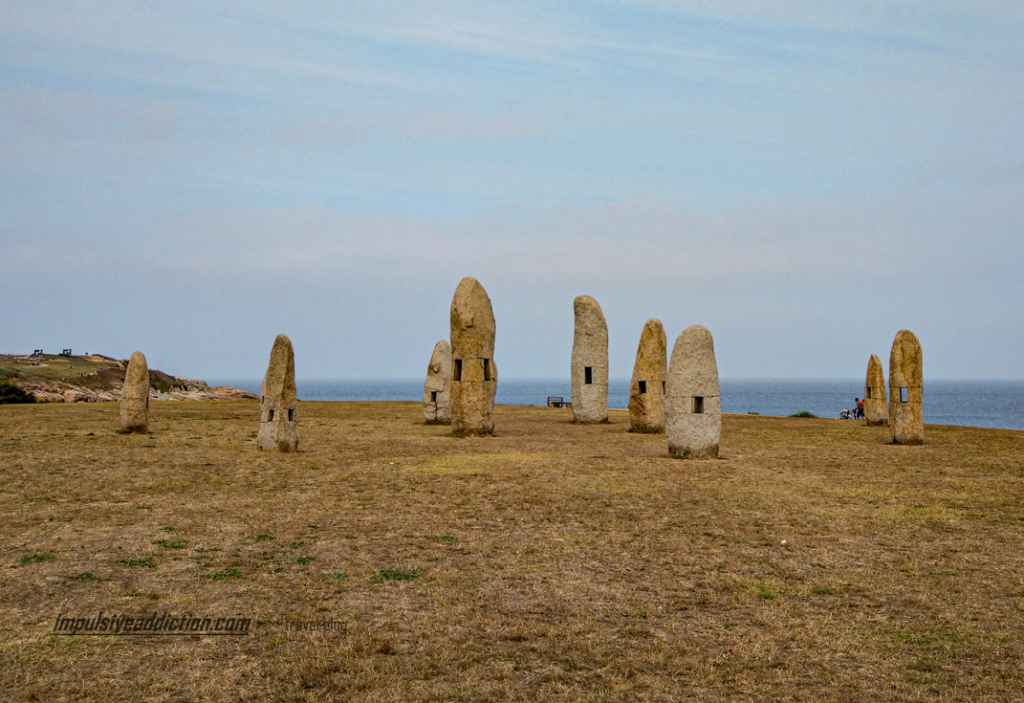
3. The beaches of La Coruna and promenade
I wouldn’t consider the beaches in Galicia extraordinary or great for swimming: I’m not fond of these cold waters at all! However, they can be very beautiful, and I want to highlight three beaches close to the city of La Coruna for you to visit and enjoy if you wish: Orzán Beach, Santo Amaro Beach and Lapas Beach. Don’t forget to walk the promenade along the bay of Orzán Beach.
4. La Coruna Marina, Old City Walls and Castle of San Antón
La Coruna Marina is also a pleasant place for a stroll. I suggest stopping at the viewpoint of del Parrote and visiting the Castle of San Antón, while observing the ancient city walls up close. The Castle of San Antón is strategically located on a small island next to the Port of La Coruna and was built in the 16th century. It now houses the archaeological and historical museum of the city.
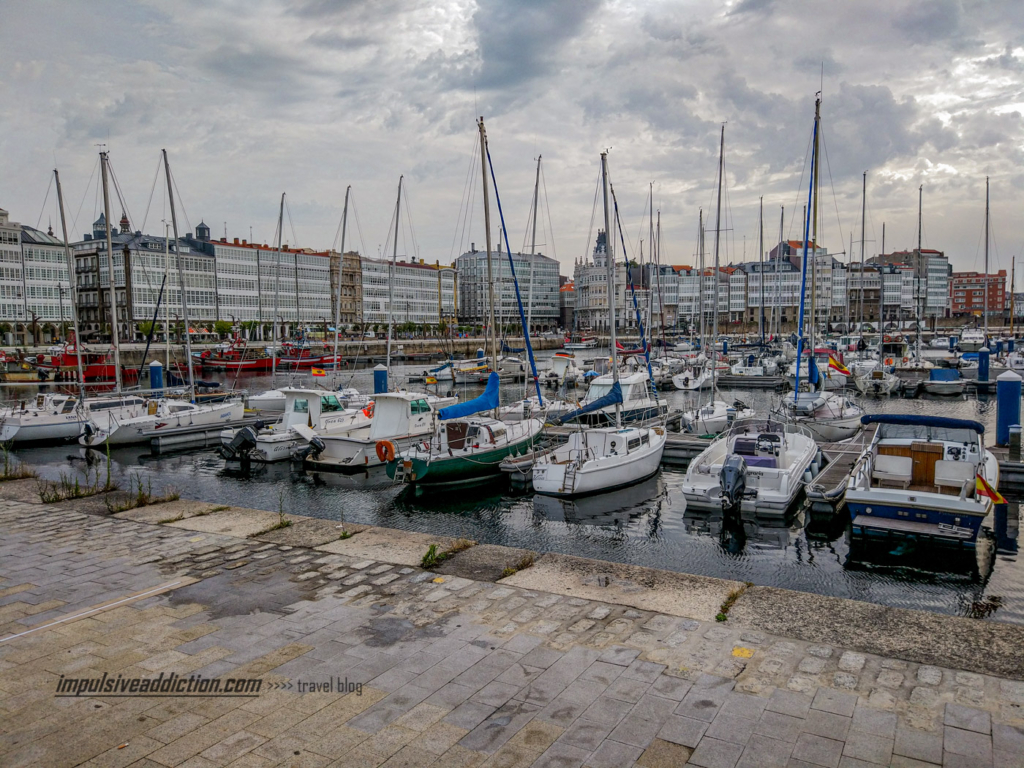
5. Visit the Old City of La Coruna
Starting with the old city walls, don’t forget to pass by and visit the following tourist spots in the old town of La Coruna:
- San Carlos Gardens.
- The Captaincy Palace and Constitution Square.
- The Church of Santiago.
- Azcárraga Square.
- The Convents of Santo Domingo and Santa Bárbara.
- The Collegiate Church of Santa Maria do Campo and the Cornide Palace.
- The gigantic and central Maria Pita Square and its palace.
- San Xurxo Church, in Baroque style, in Marqués de San Martín Square.
- The Church of San Nicolás, also in Baroque style.
- Santo Agustín Market, to do some shopping for your trip in La Coruna.
- The streets surrounding Maria Pita Square, such as Riego de Água Street or Real Street of La Coruna.
- The Mendéz Núñez Gardens, to leisurely read a book next to a palm tree on one of the park benches.
- And Santa Margarida Park, a green space with the House of Sciences in the center, a windmill, and the Opera House of La Coruna.
Of course, I have to talk more about Maria Pita, who gives her name to the largest and most central square in La Coruna. She was a woman from the 16th century who played a crucial role in the city’s history during the siege of La Coruna by English troops and the corsair Francis Drake in 1589. It is said that she killed Drake’s own brother and stole the English flag, boosting the morale of the Galician troops while shouting war cries. The English army eventually had to abandon the siege.
In the center of Maria Pita Square, you will find a statue of the heroine holding a spear, commemorating this episode and proclaiming freedom! If you want a grand entrance to the square, you have to approach it from La Coruna Marina: the entrance is majestic, with the palace in the background.
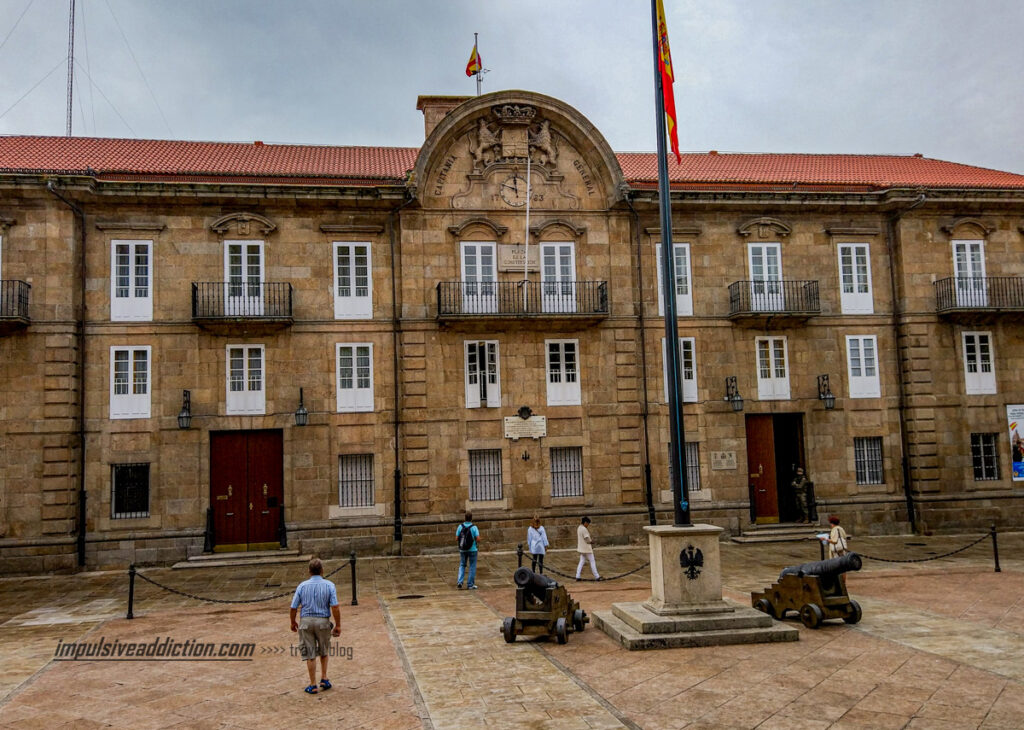
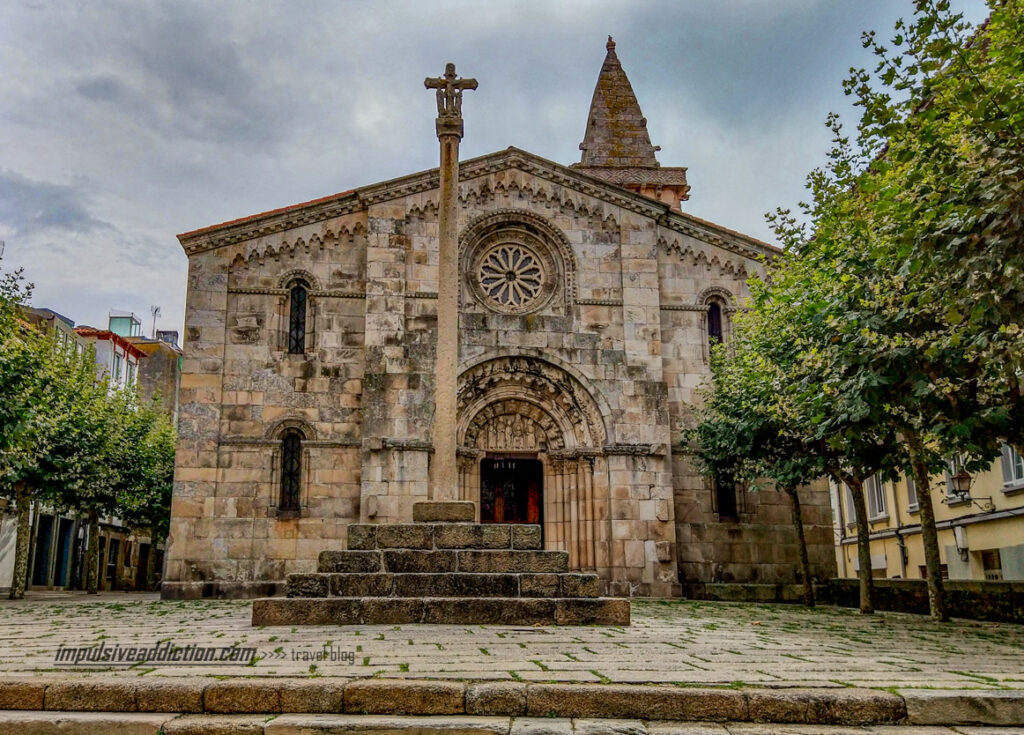
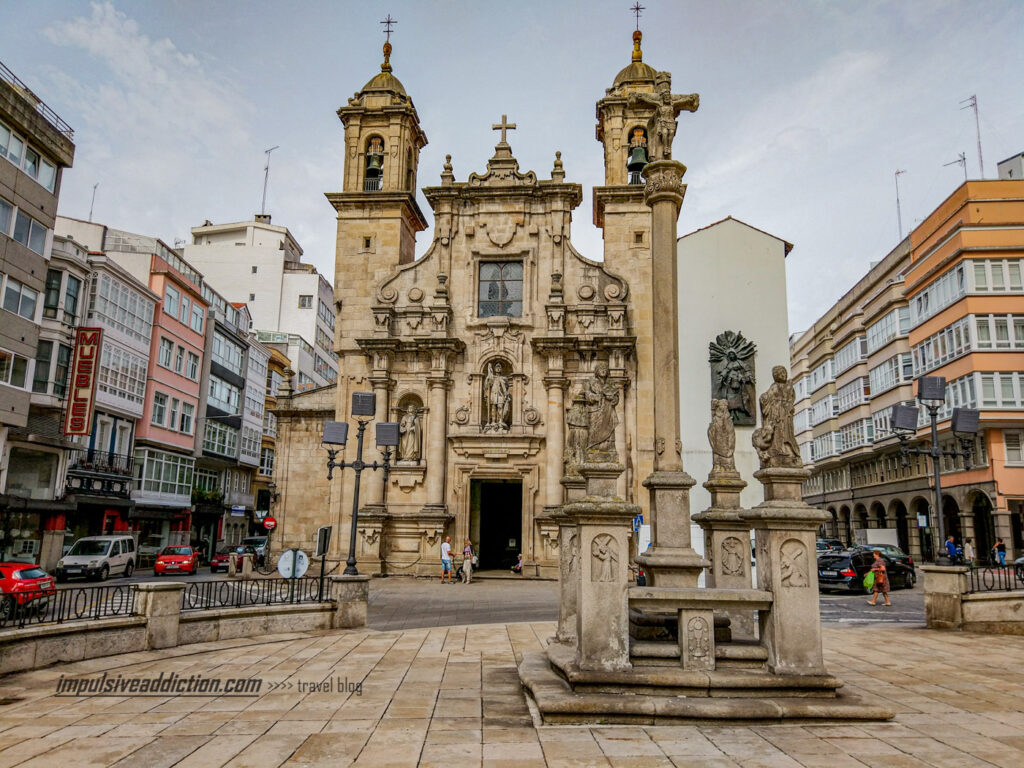
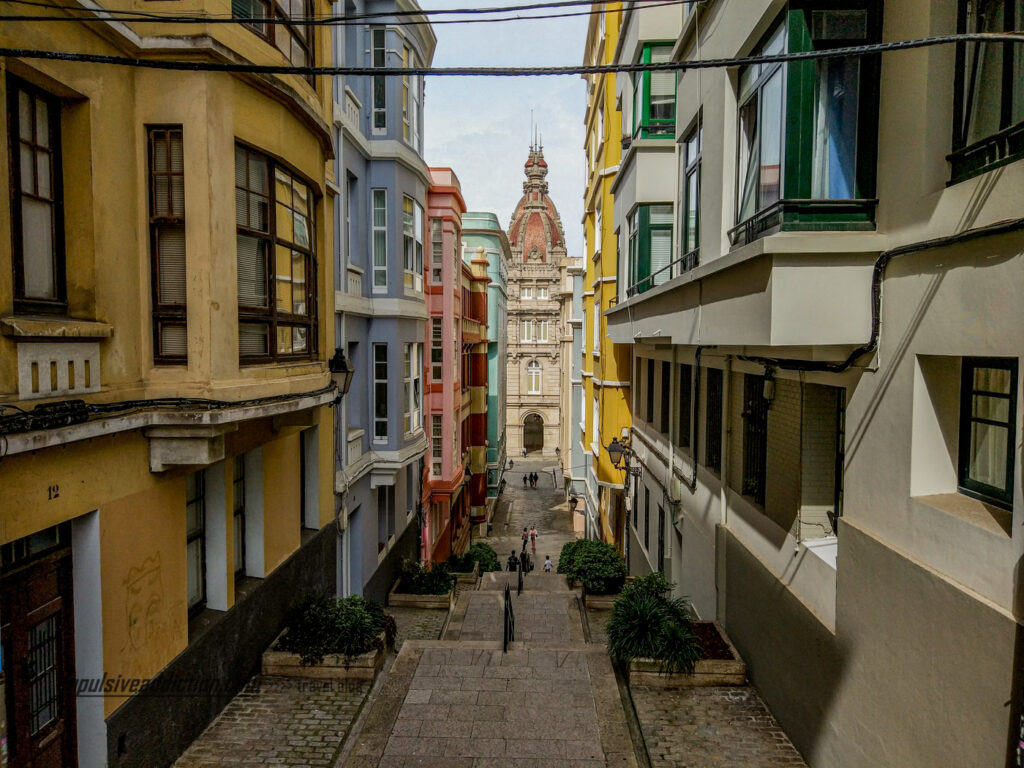
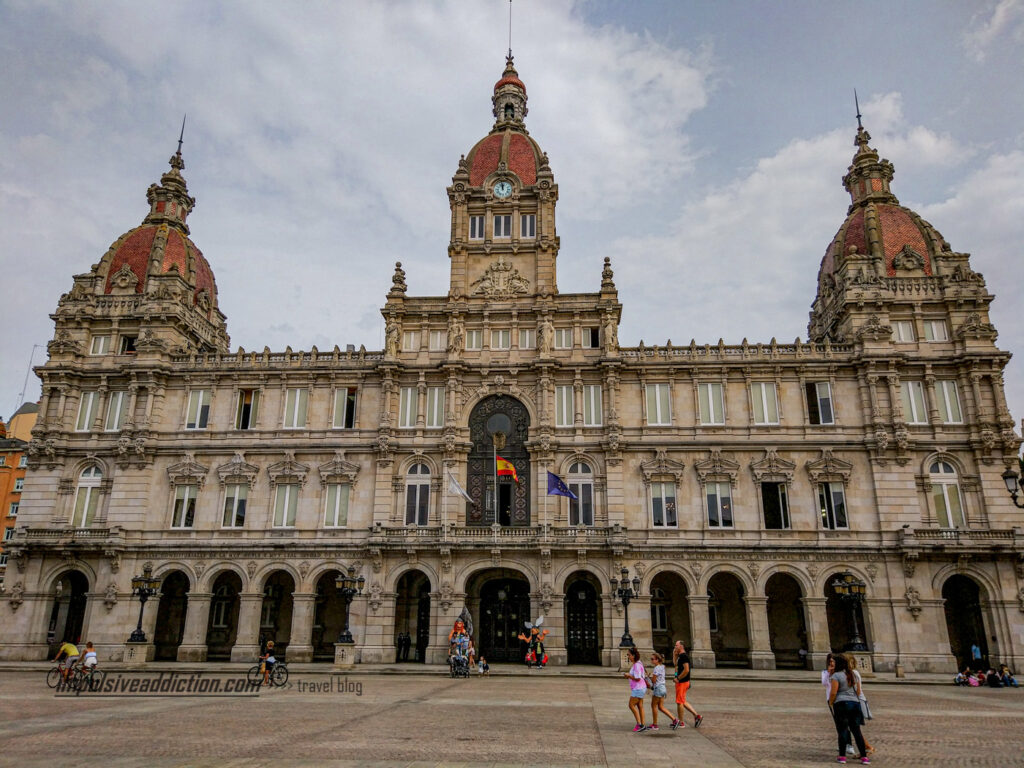
6. Mount of San Pedro – best views in the city of La Coruna
To visit the top of Mount of San Pedro and enjoy the best views of La Coruna, you can use the glass elevator built for this purpose, which provides a panoramic view of the city as you ascend the hill. There is a breathtaking viewpoint at the top, as well.
In addition to the city viewpoint, you have a park at the top of the hill where you can relax. It features expansive green gardens, among other tourist attractions. Don’t forget to visit the “Window to the Atlantic” viewpoint, which overlooks the islets along the coast: Vandabal Island, Foot Island, and Aguión Island.
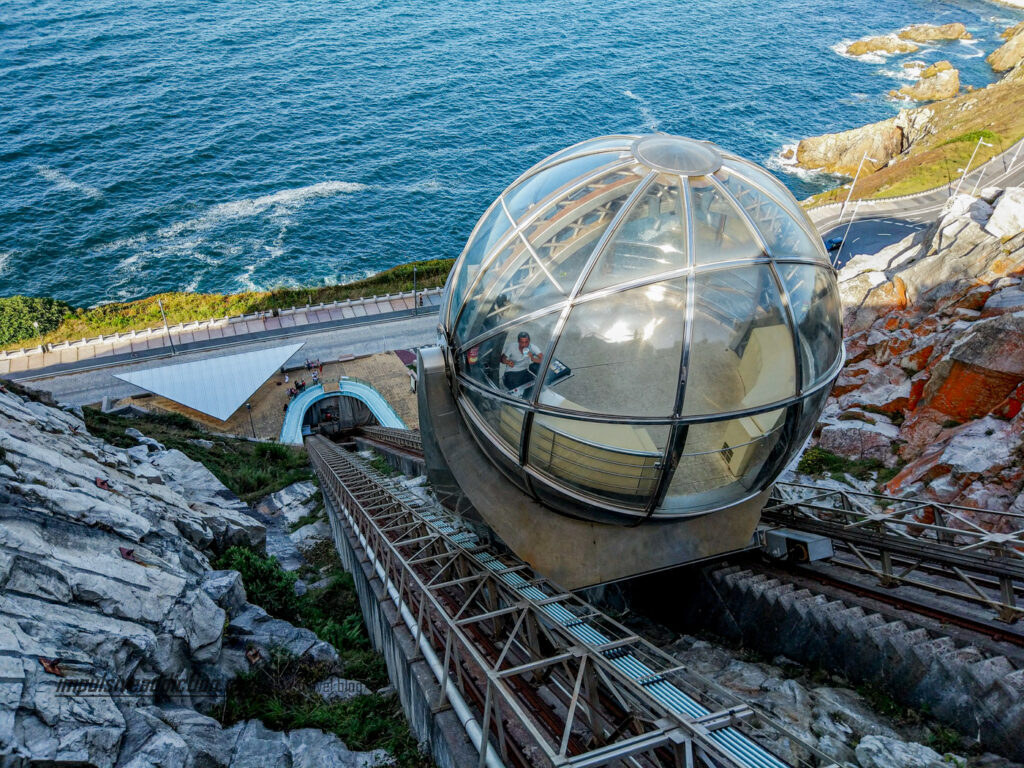
7. Castle of Santa Cruz and Beach of Santa Cristina
Outside the city of La Coruna, but still within the estuary, there are other points of interest worth exploring. Go check out Santa Cristina Beach and visit Santa Cruz Castle, located on the opposite side of the estuary.
Accommodation tips to visit the city of La Coruna
Go on a Death Coast Road Trip in La Coruna
Did you know that a section of the Galician coast is called the Death Coast due to the numerous shipwrecks that have occurred there as a result of its rugged nature? The Death Coast stretches between Muros and Malpica (you can start with a visit to the port of Malpica) and includes one of the most spectacular places in Galicia, Finisterre Cape, as well as several breathtaking viewpoints and many lighthouses.
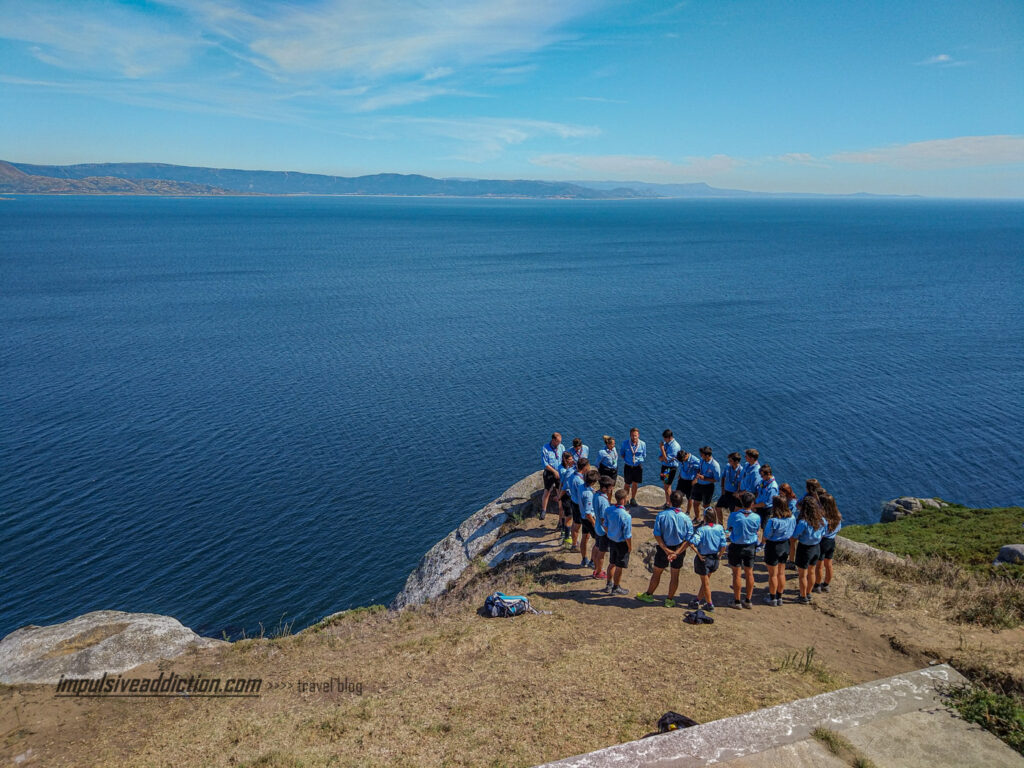
1. Finisterre Cape
This cape is above all the true final stop of the famous Camino de Santiago, so prepare yourself for the many people you will certainly find there. The Romans believed that this was the westernmost point of the earth, and therefore, that the world ended here: Finis Terrae (this is the origin of the name).
Many people still consider this location to be the westernmost point of continental Europe, which is not true, as it is Cape Roca in Portugal that holds that title. In reality, it’s not even the westernmost point of Spain, but rather Cape Touriñán.
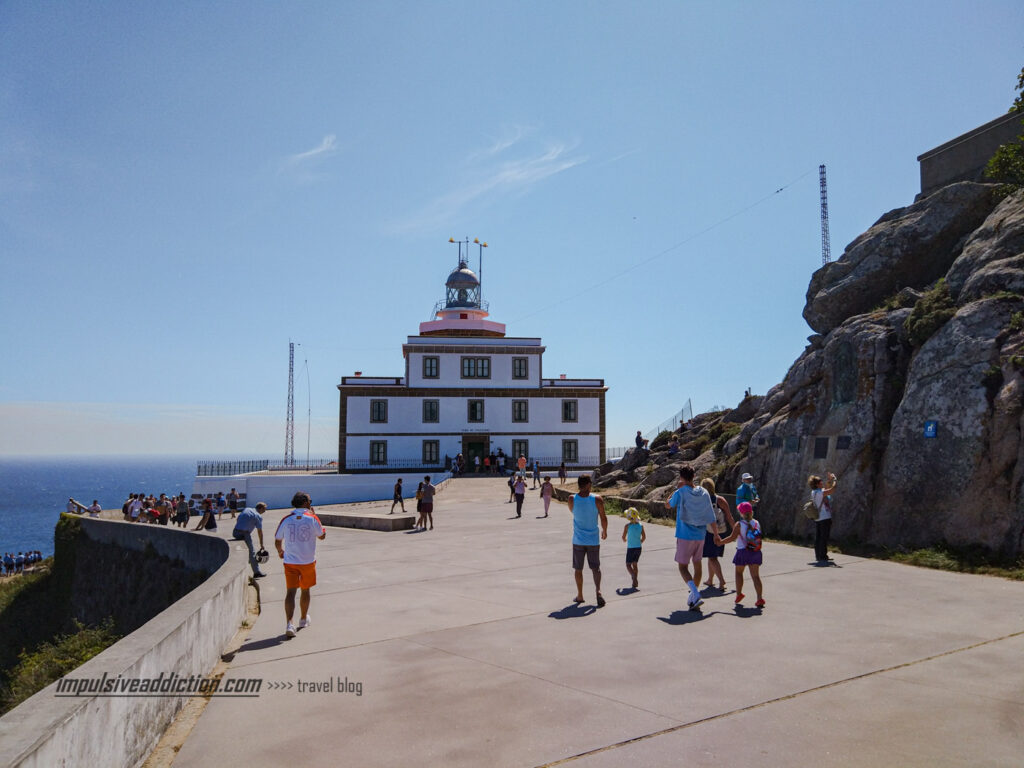
2. Cape Vilán lighthouse, in Camariñas
Cape Vilán is the second most spectacular cape in the Death Coast, in my opinion, deserving to be highlighted. Moreover, its lighthouse is stunning, and was the first in Spain to operate on electric power. From my research about it, it is one of the most powerful lighthouses along the coast, standing at 125 meters in height and its light reaching a distance of 55 km.
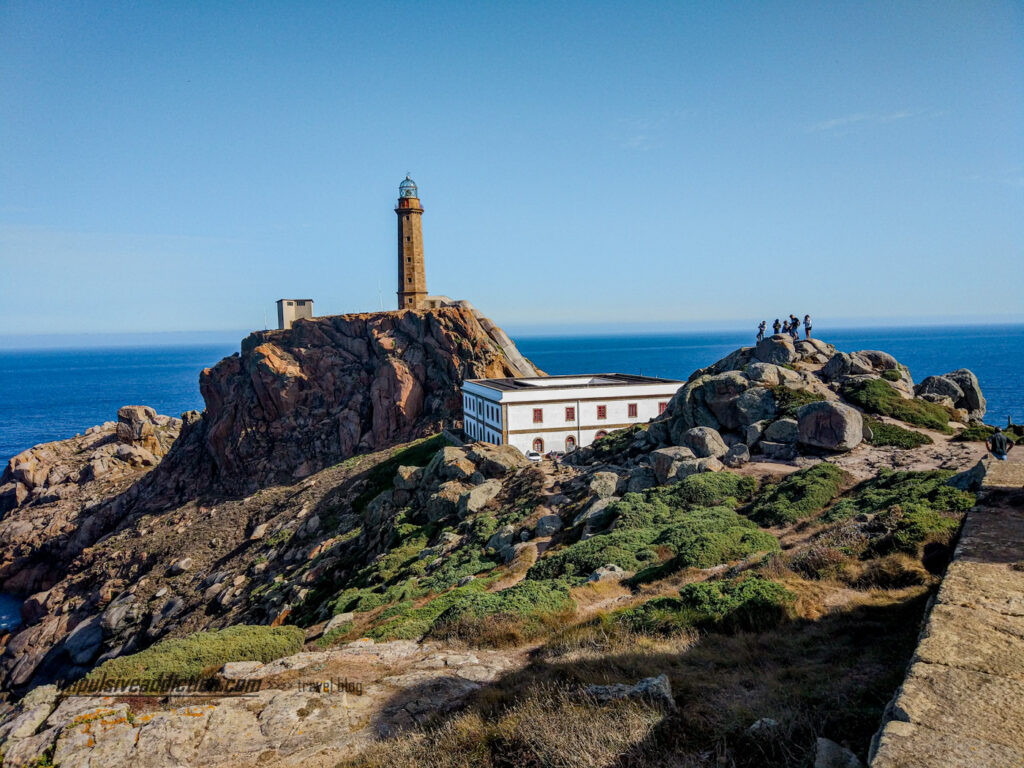
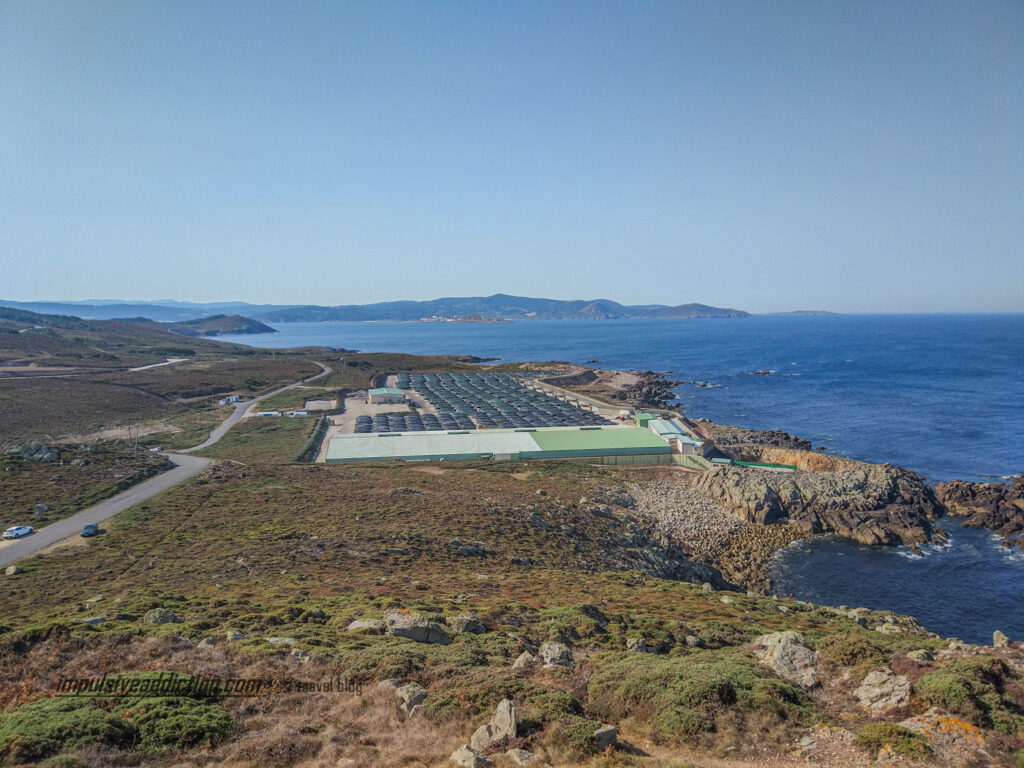
3. Other Capes and Lighthouse in the Death Coast
But there are many more. Without delving too much into their description, here’s a list of the ones I consider the most beautiful or with an extraordinary surrounding environment.
Punta Nariga Lighthouse, in Malpica
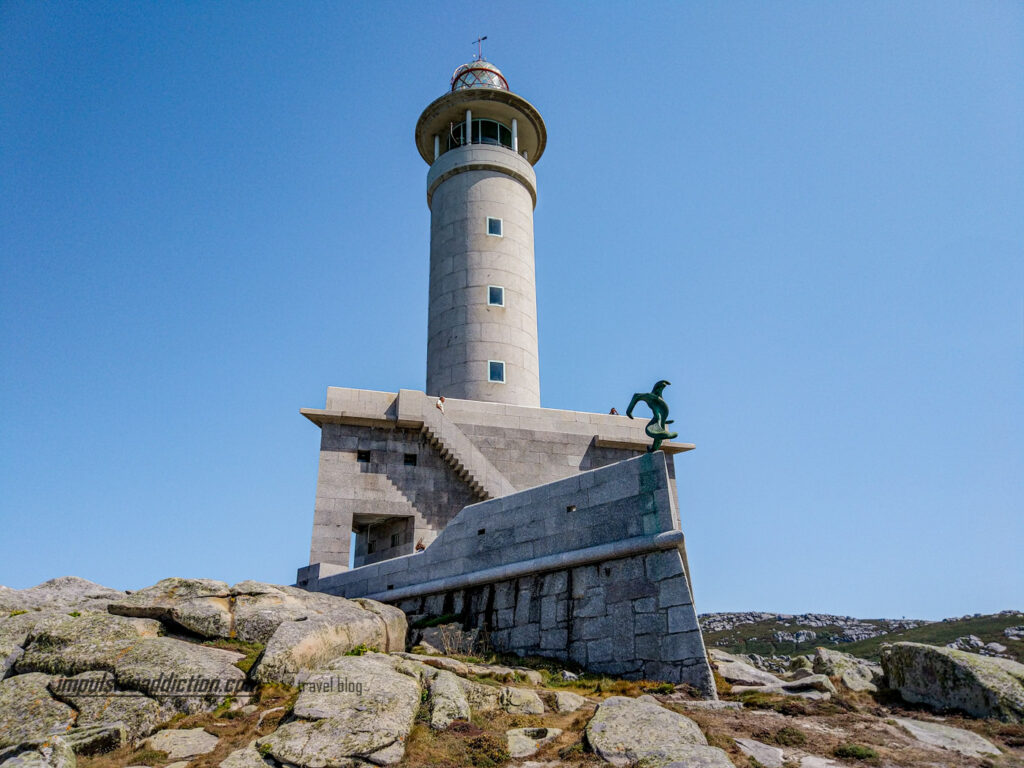
Roncudo Lighthouse, in Ponteceso
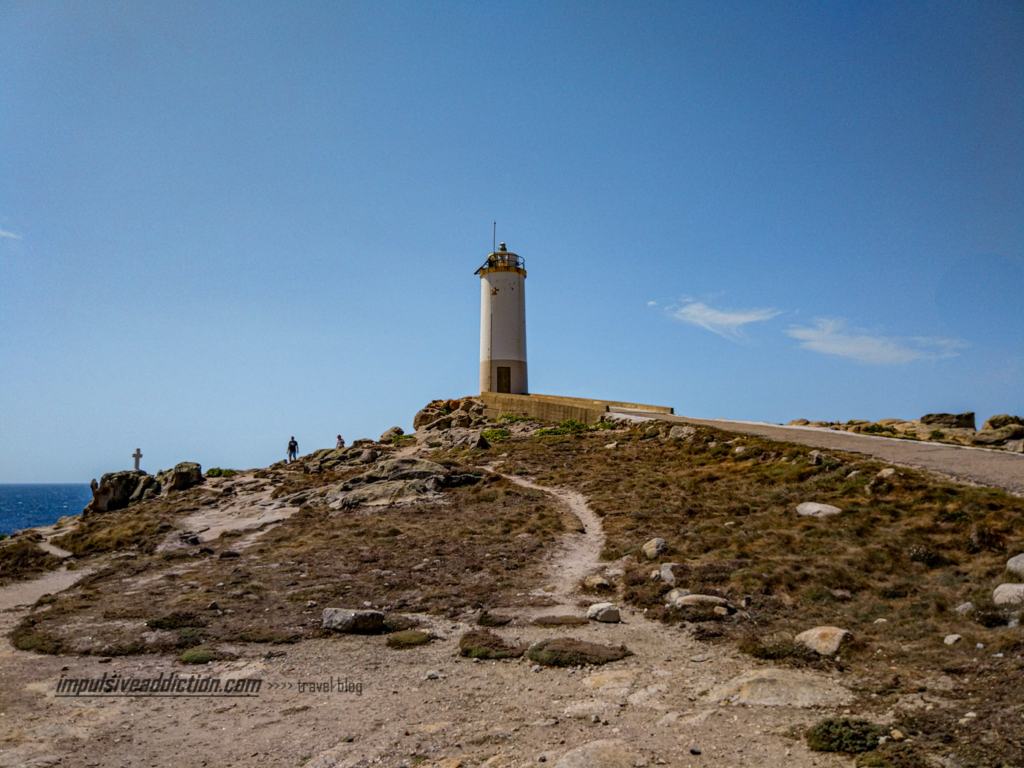
Laxe Lighthouse and Bay
Laxe boasts a beautiful cove, so take the opportunity to relax a bit in the beach, after visiting the lighthouse.
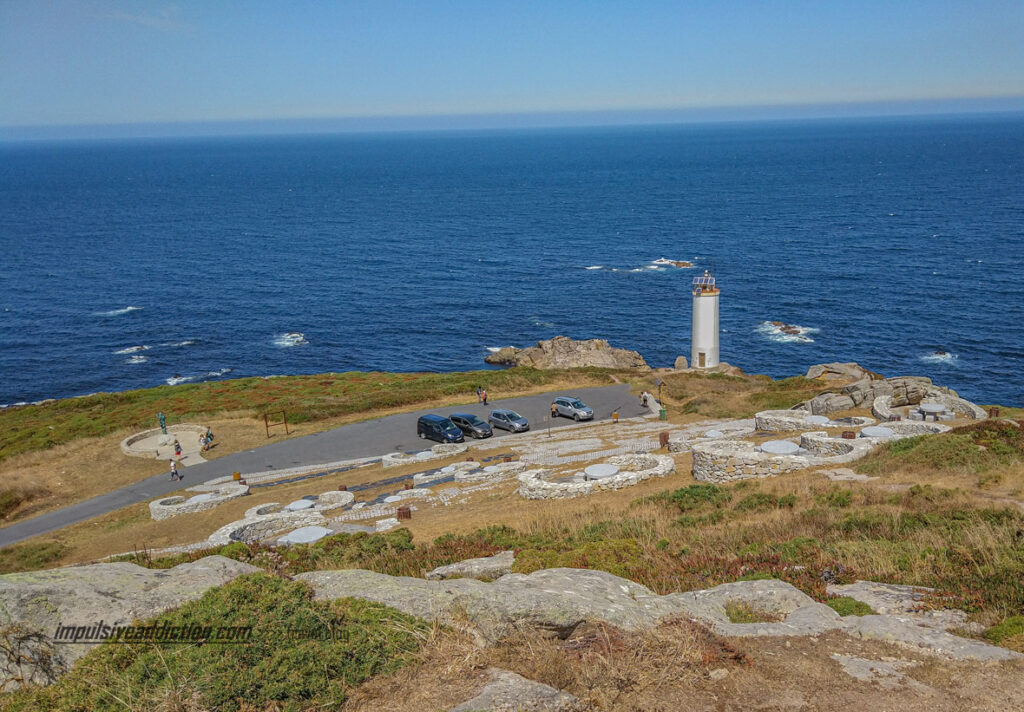
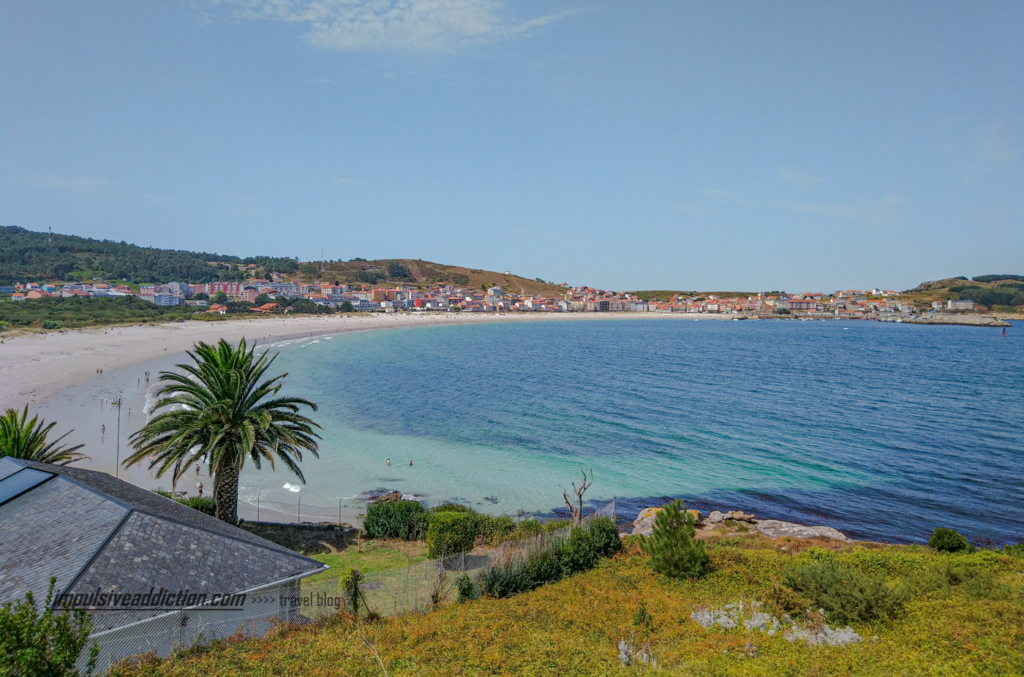
Muxia Lighthouse (and Virxe da Barca Sanctuary)
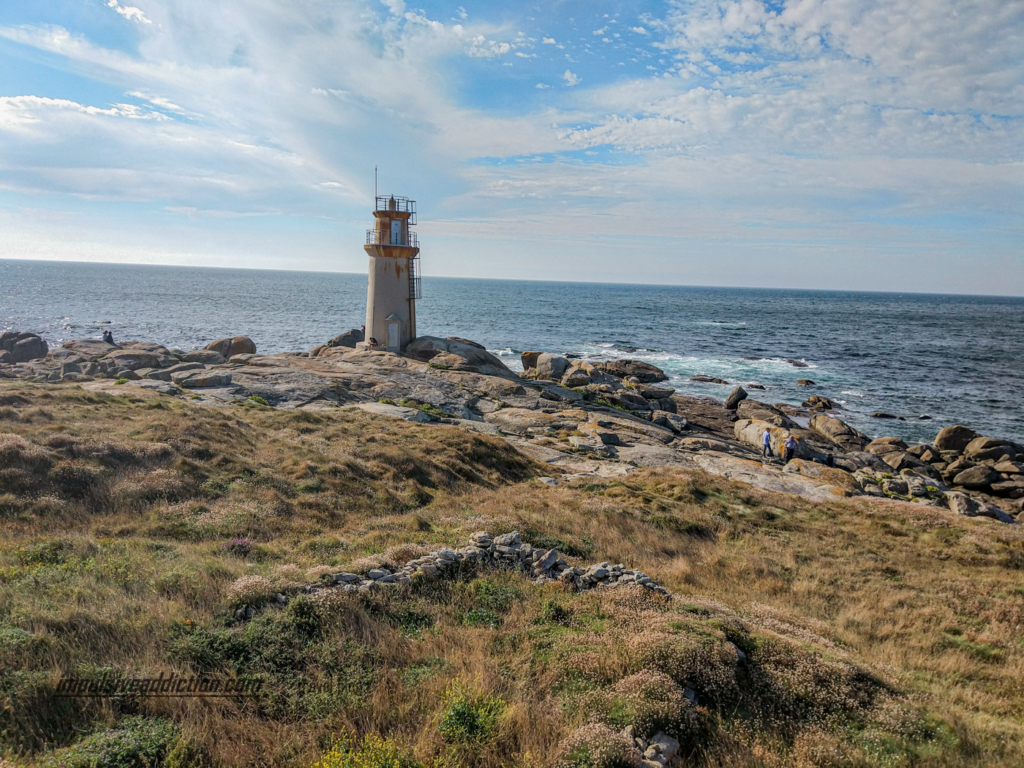
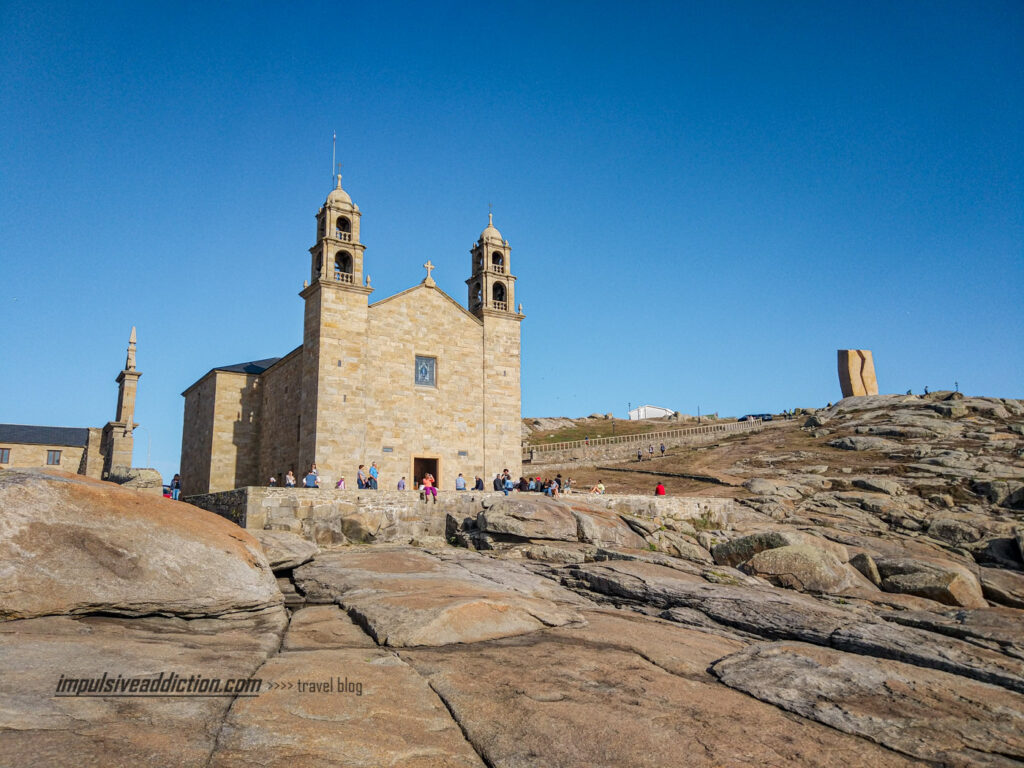
Touriñan Lighthouse, at the westernmost point of Spain
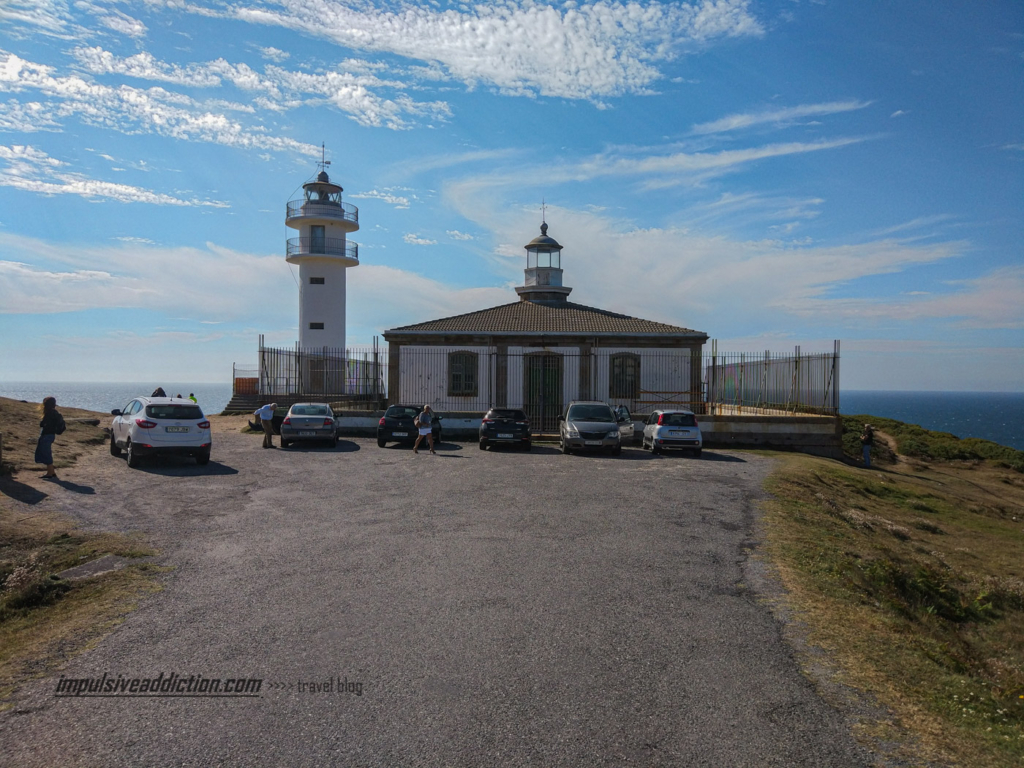
Lighthouse and Beach of Ponta Lariño
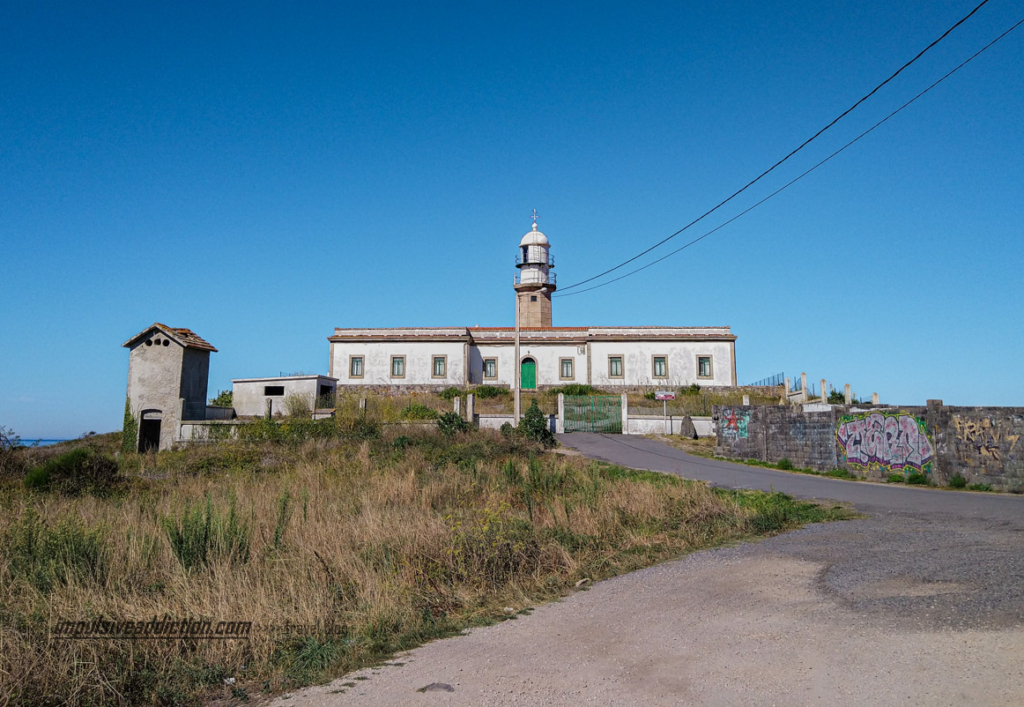
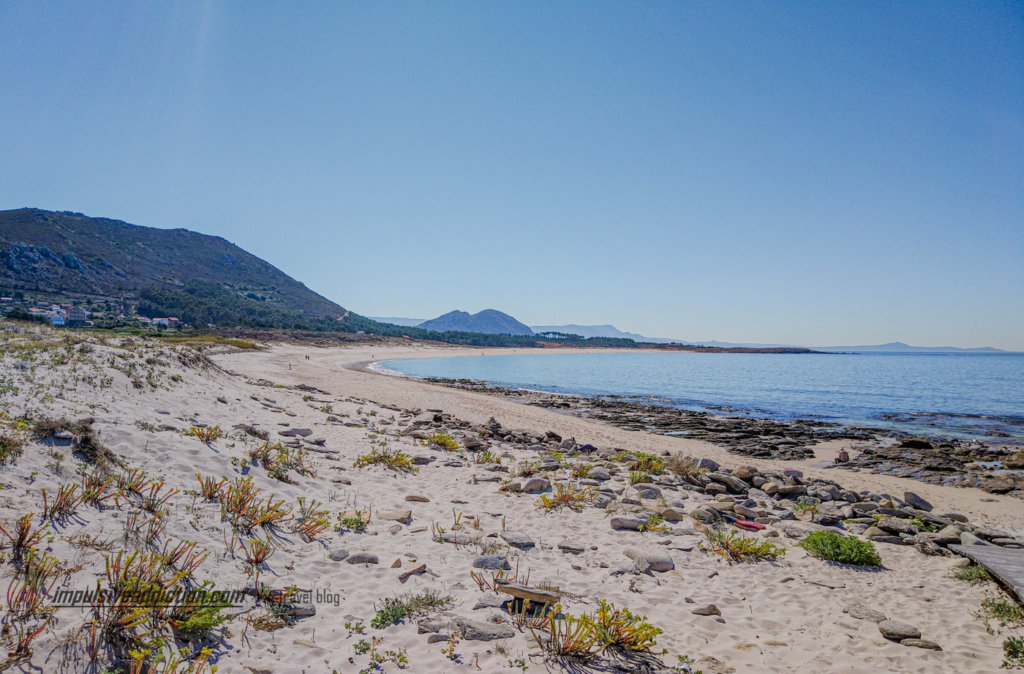
4. Best Viewpoints of the Death Coast, in La Coruna
Viewpoint of Monte Branco, in Ponteceso
This viewpoint is fabulous, located in the region of Ponteceso, at the mouth of the Anllóns River. Its most striking feature is the immense beach called “A Barra”. Going down to this beach in La Coruna is a must!
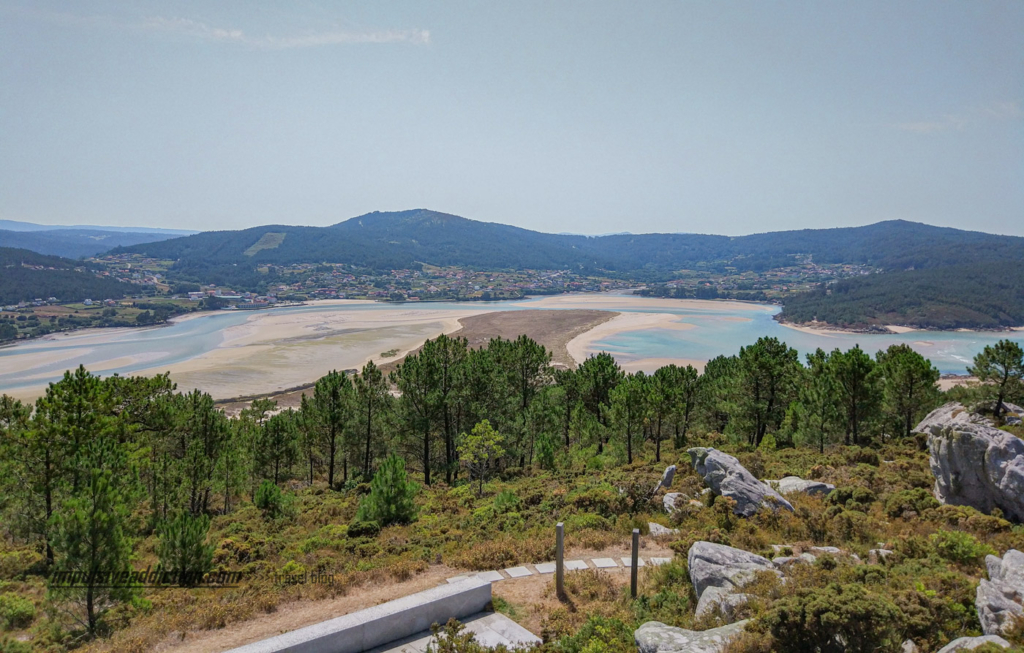
Viewpoint of Mount Facho Lourido, in Muxía
In the region of Muxia, we can find this panoramic view, at over 300 meters above sea level. From here, we can catch a glimpse of the Camariñas estuary, and also Vilán Cape, which is one of the stops that I already recommended as a must-visit. I read somewhere that the name of this hill comes from the acoustic and luminous signals installed to signal the boats. In fact, the observable area from this viewpoint is considered the most rugged and dangerous along the entire Death Coast.
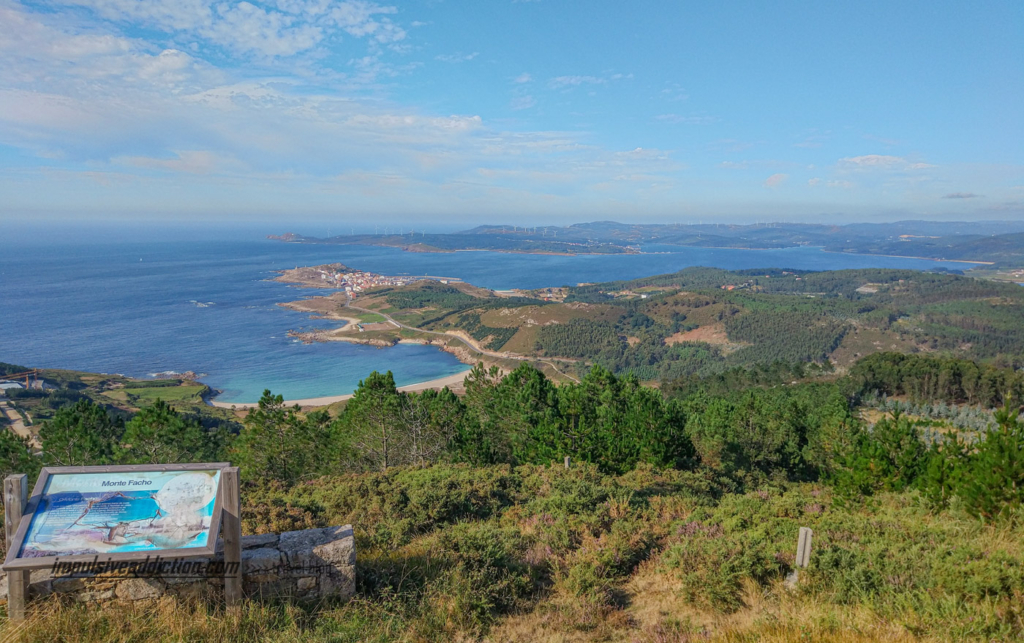
Ézaro Viewpoint and Waterfall, in Dumbría
I found this region very windy, but it was completely worth visiting. The viewpoint overlooks the mouth of the Xallas River, and the waterfall is one of the most beautiful and famous in Galicia.
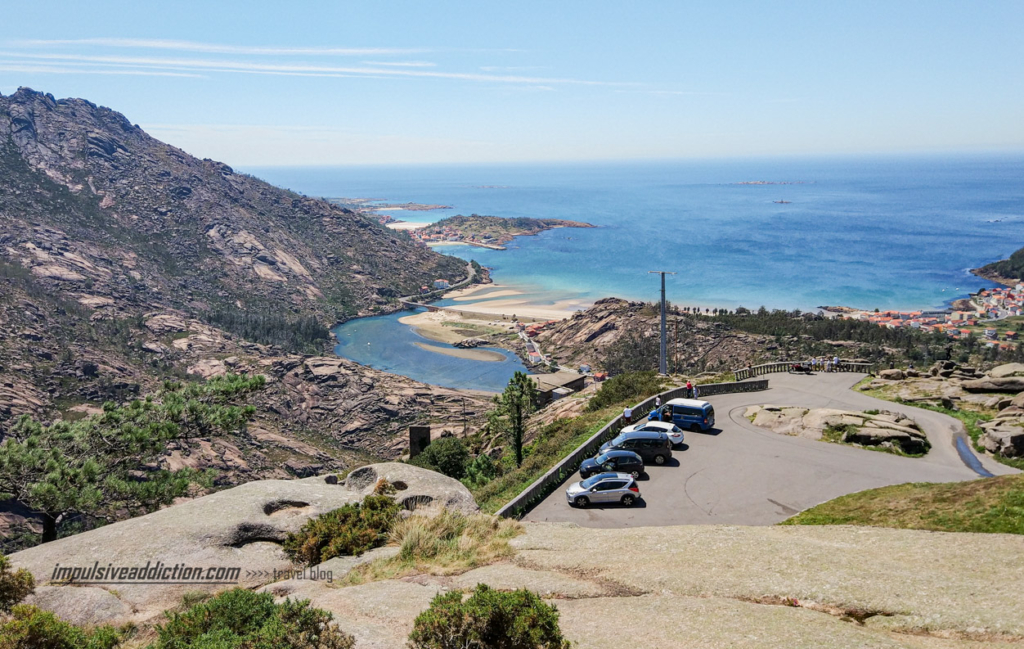
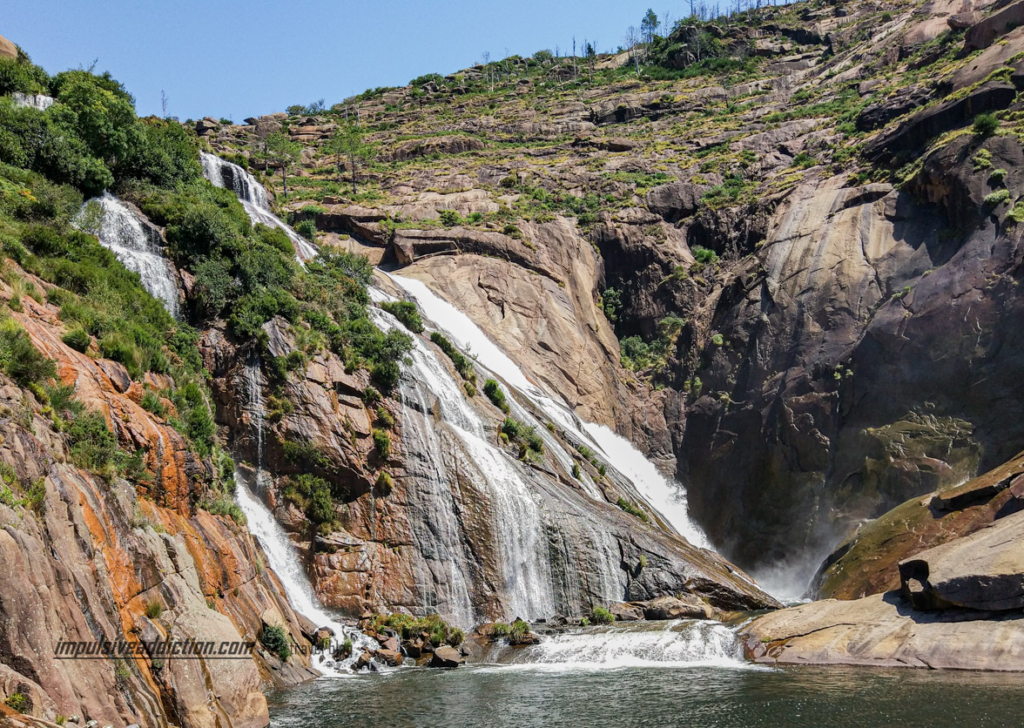
Paxareiras Viewpoint and Carnota Beach
Carnota Beach is the centerpiece of this viewpoint. During low tide, it stretches up to 1km wide, making it one of the most famous and sought after beaches on the coast of La Coruna in Galicia.
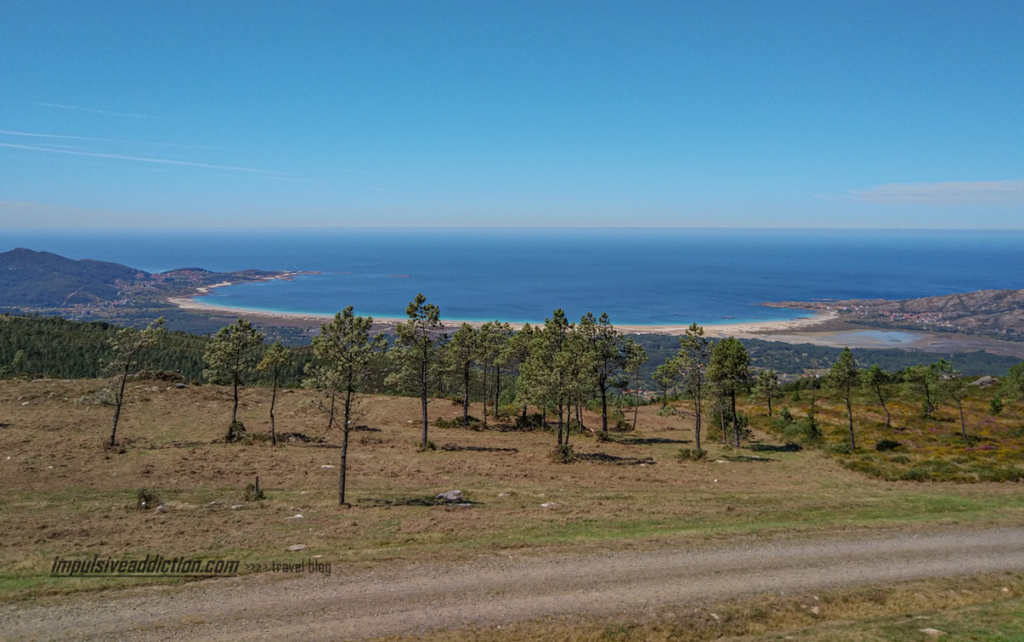
Viewpoint of Mount Louro, in Muros
I remember that the road from where I took this photo was not very good for driving, when I visited this location back in 2016. It is located in the municipality of Muros, and from there, you can enjoy the view of Mount Louro and its lagoon.
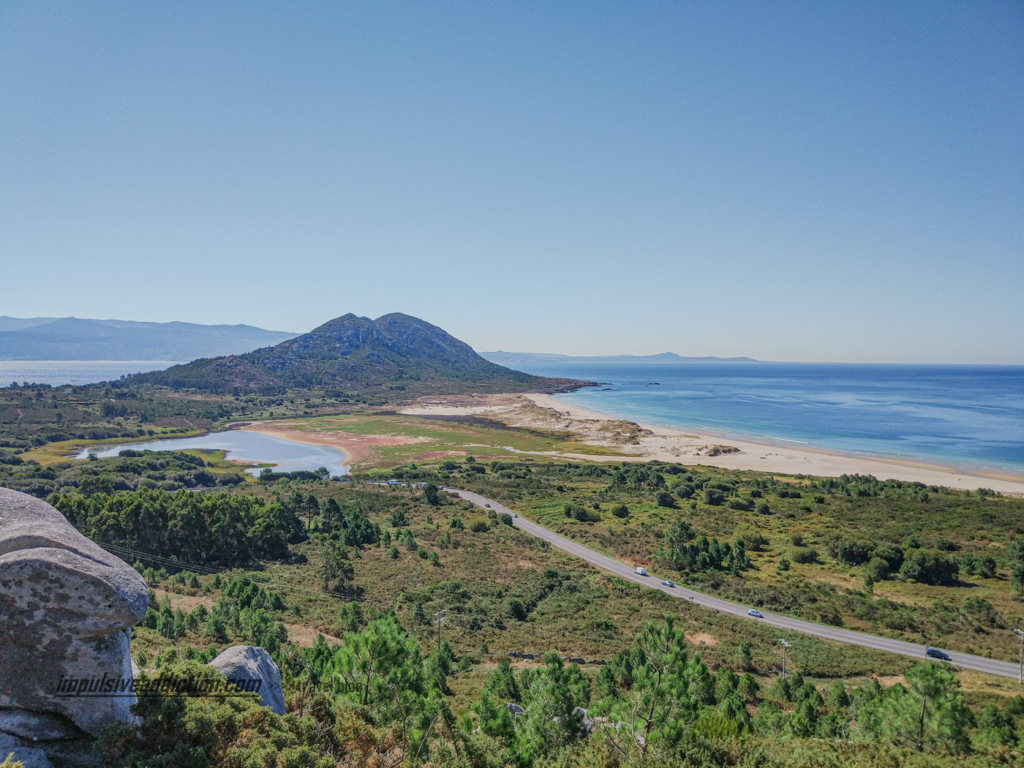
5. The English Cemetery, in tribute to shipwrecks on the Death Coast of La Coruna
I have mentioned several times that the Galician coast is very rugged and dangerous, especially the Death Coast in La Coruna. In fact, this was proven by the sinking of the English ship “The Serpent” at this location in November 1890, and more than 170 men lost their lives and were buried in this cemetery at that time. Almost the entire crew died by drowning.
People have been building towers of stones in this place, and it is likely a gesture of respect. This makes it beautiful! It is very close to Vilán Cape.
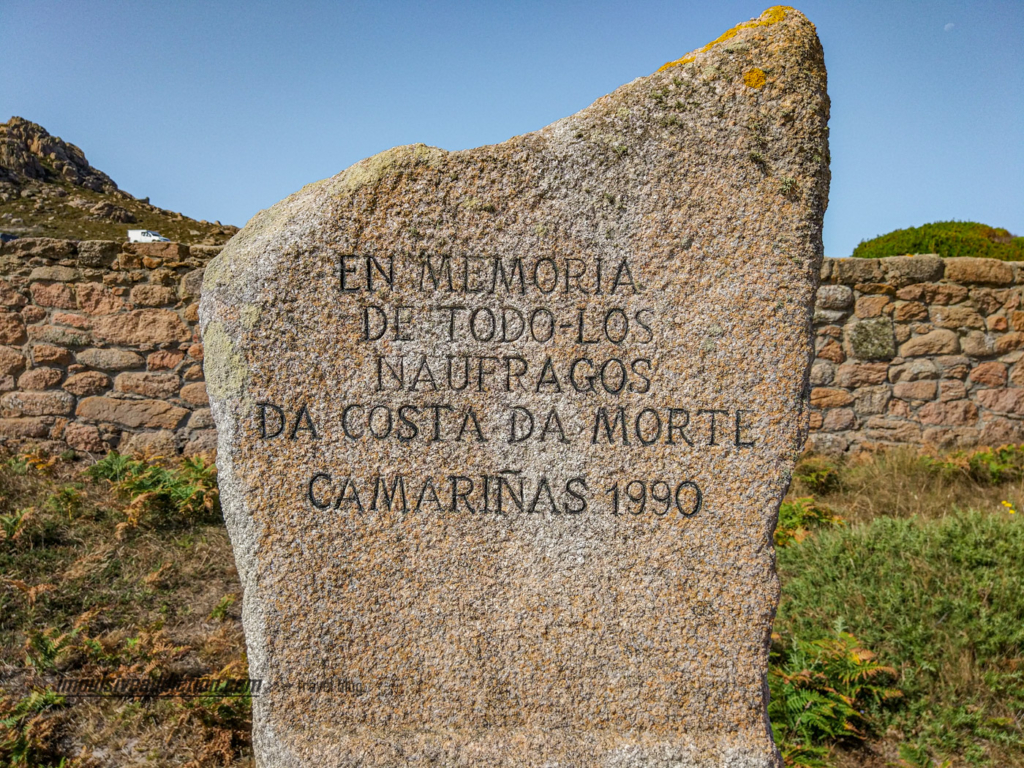
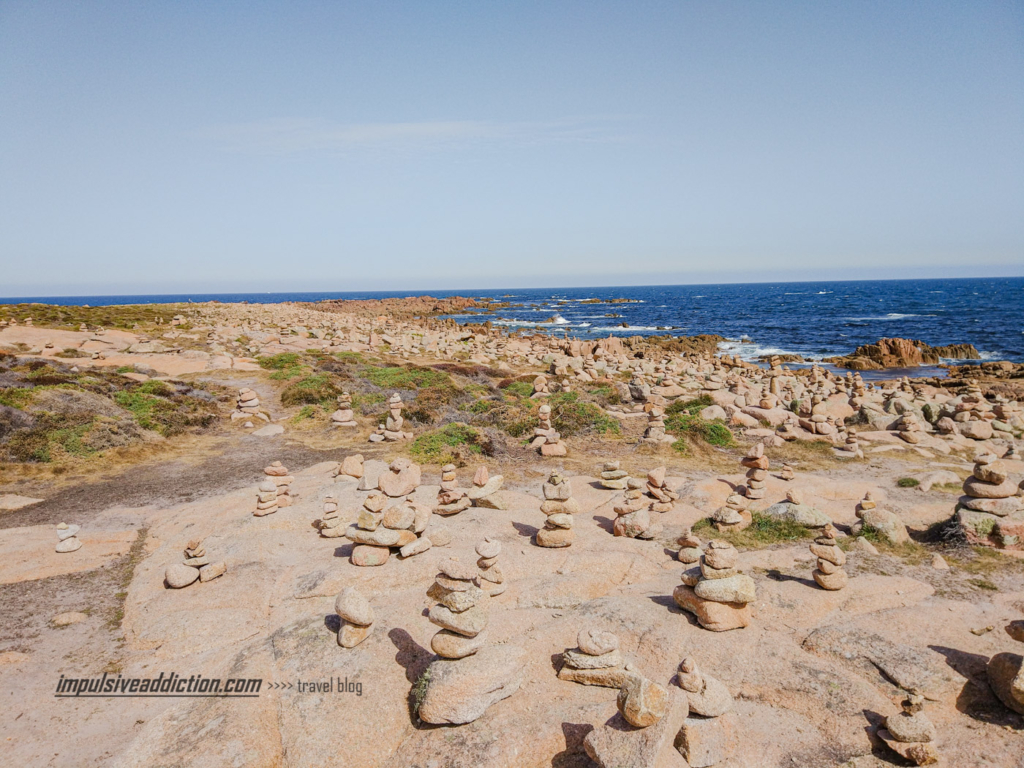
Accommodation tips to visit the Death Coast, in La Coruna
- Casa da Vasca (Malpica)
- Hotel O Náutico (Laxe)
- A Torre de Laxe
- Muxia Mare
- Pensión Rustica Alemana (Muxia)
- Hotel O Semaforo (Finisterra)
- Apartamentos o Almacen (Finisterra)
- Pensión O Prouso (Carnota)
Visit Muros and Noya Estuary
In Muros and Noya Estuary, you can start with the historic centers of the main towns that give it its name: Muros and Noya. However, I must confess that what impressed me the most in the estuary was the same as in the previous ones: the landscape and viewpoints.
1. Viewpoint of Cruz de Pelos, in Muros
This was the first viewpoint I visited on the entire Galician coast, and it left a lasting impression on me. It was part of my first trips to Galicia, right after visiting the Cies Islands. I never thought I would find equally extraordinary places on the mainland, and I was so wrong: the color of this sea will always stay in my memory.
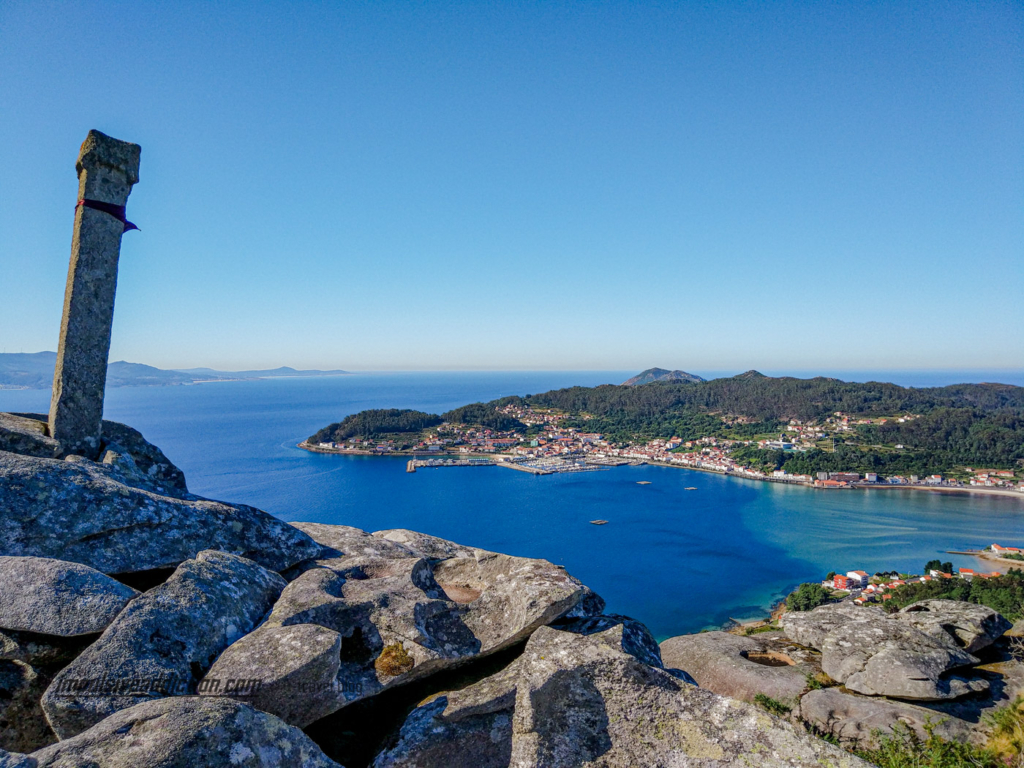
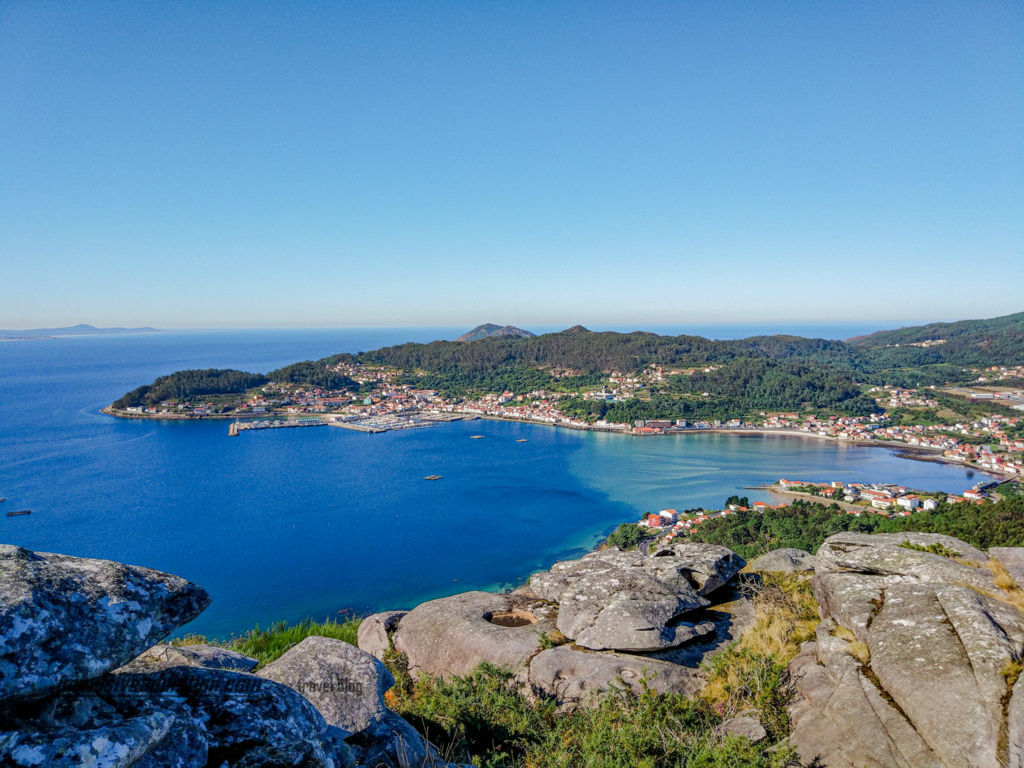
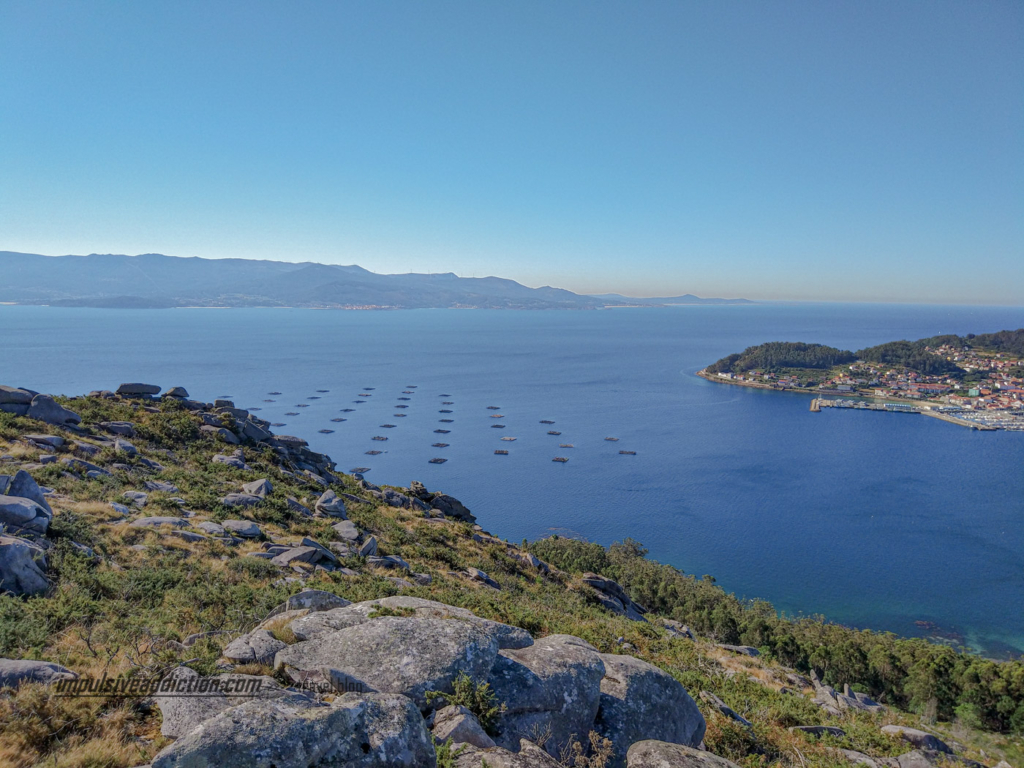
2. Viewpoint of San Lois, in Noya
I didn’t visit it under the best weather conditions, but from there, you can see the entire vast Muros Estuary, in the province of La Coruna. It is located in Noya, at an elevation of 363 meters.
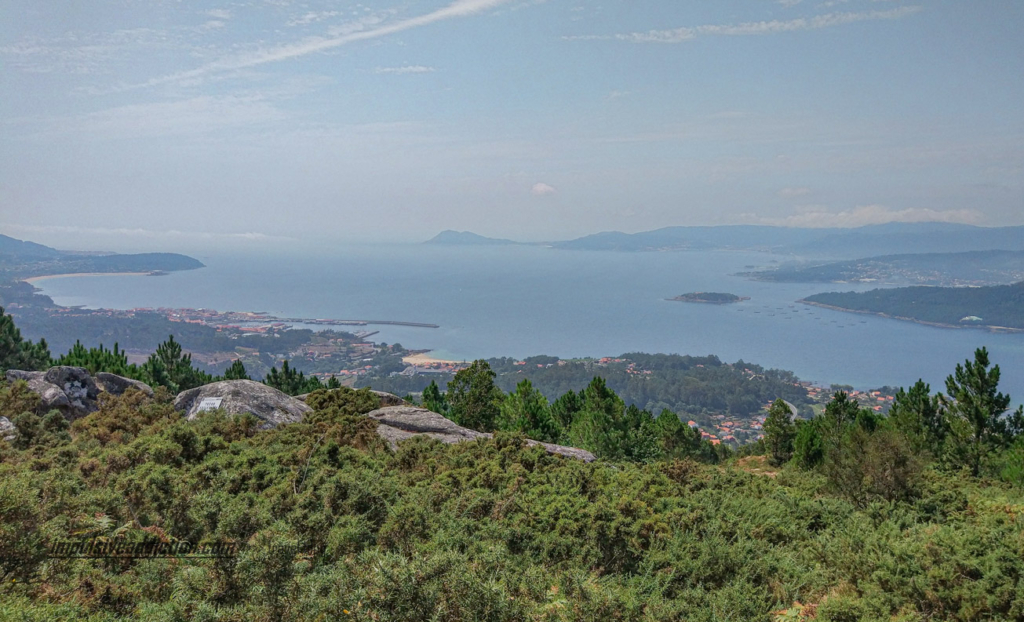
3. Enxa Viewpoint, in Porto do Son
San Lois offers a better perspective of the estuary, but Enxa viewpoint is another possibility to observe the estuary from above, this time at an altitude of over 500 meters.
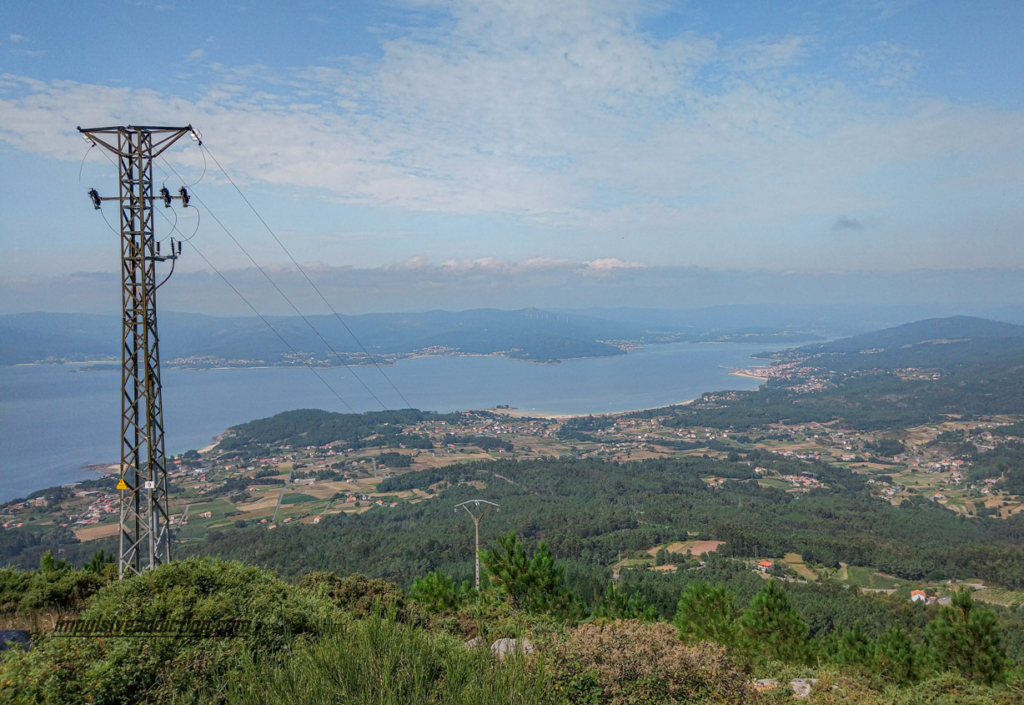
4. Castro de Baronha, in Porto do Son
This archeological site is located on a peninsula and its occupation dates back to the 1st century BC and AD.
5. Viewpoint of Mount Tahúme, in Porto do Son
When I first visited this place, the viewpoint was completely covered by clouds. However, it held such promise that I couldn’t resist and decided to come back later. I could tell that the clouds would disperse due to the strong winds blowing, so I took care of my other activities in the area and promptly returned. These are the images I managed to capture: even at just 242 meters of altitude, it offers magnificent views of some of the region’s beaches. Truly magnificent!
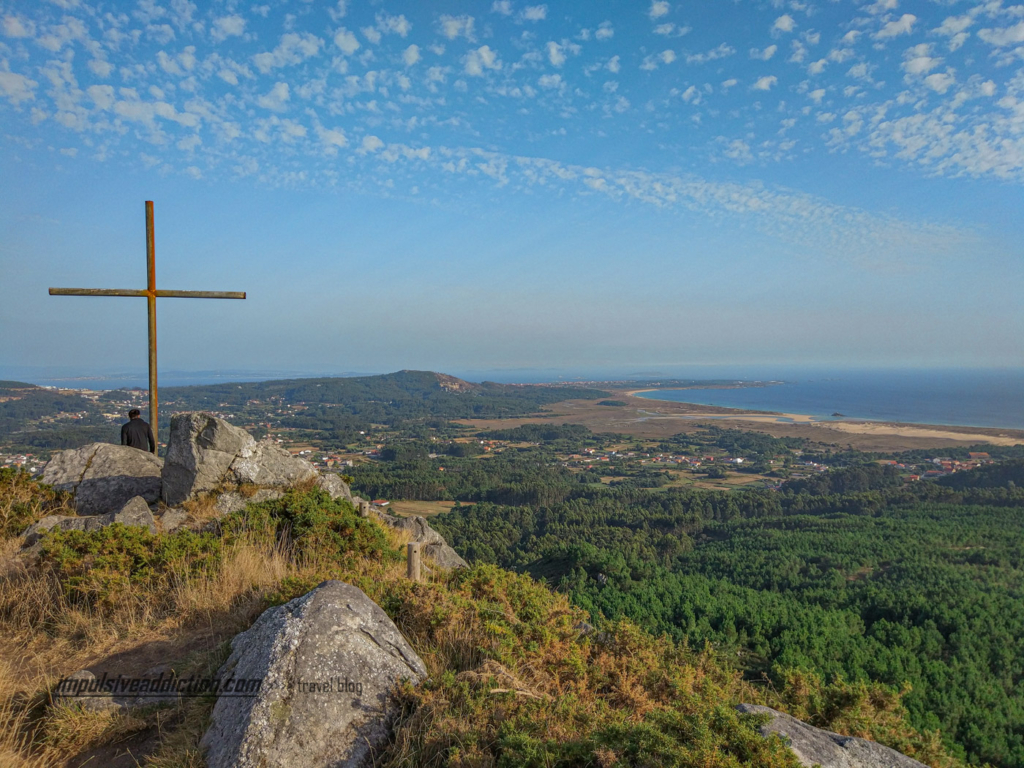
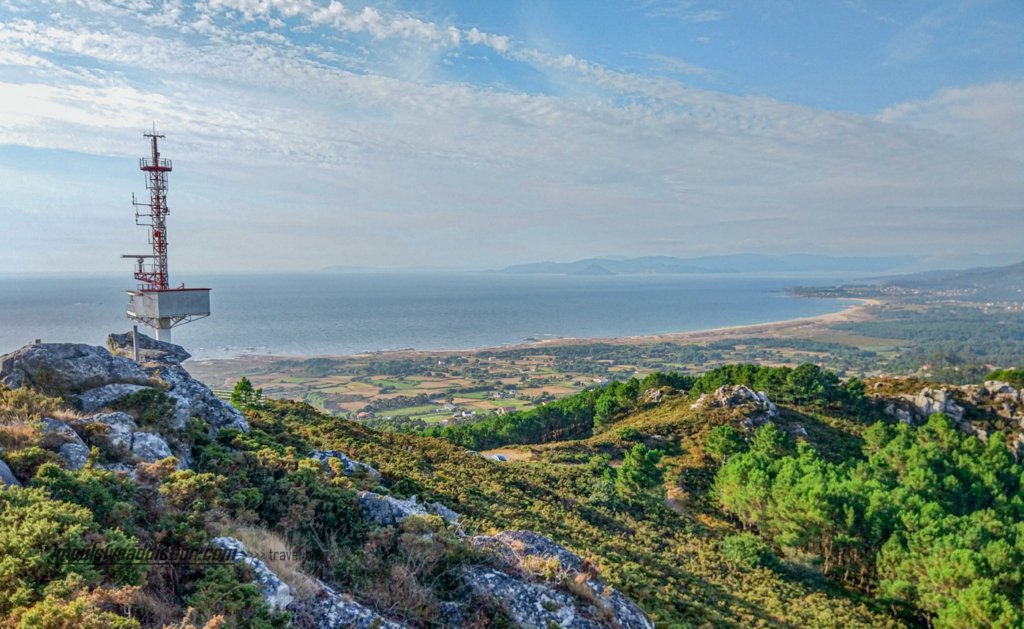
Accommodation tips to visit Muros, Noya and Porto do Son
- Casa del Ancla (Muros)
- Hostal Kukia (Noya)
- Hostal Valadares (Noya)
- PortoSín Suites
- Hotel Villa del Son (Porto do Son)
Visit the Corrubedo Dunes, the largest dune park in La Coruna (and Galicia)
One of the ways to explore the Corrubedo Dunes is through its viewpoint, the Rá Viewpoint. Don’t forget to visit the archeological ruins of Mount Cidá that are located nearby.
The Corrubedo Dune Park covers approximately 1000 hectares, and besides its impressive dunes that can reach up to 20 meters in height, it also encompasses the Vixán and Carregal lagoons. These lagoons are a paradise for birdwatching enthusiasts, offering abundant opportunities to observe various bird species in their natural habitat.
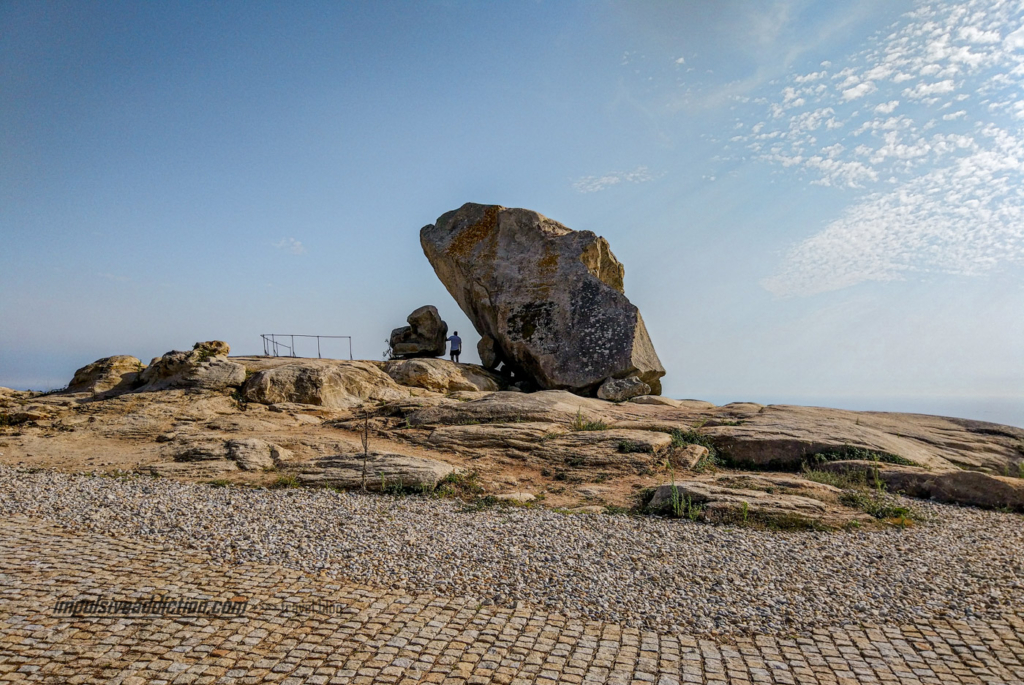
1. Corrubedo Lighthouse
And if you’re heading to the dune complex, make a small detour to visit its lighthouse for a better appreciation of the surrounding coastline.
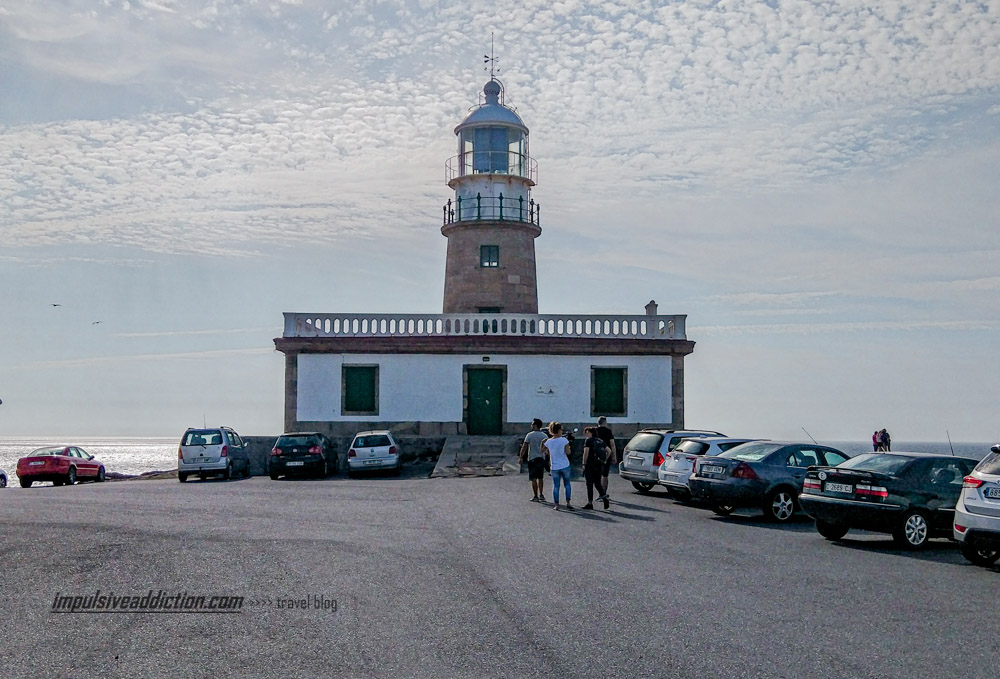
Accommodation tips to visit Corrubedo region
- A Casa da Tia Elisa (Ribeira)
- Apartamento en Ribeira
Visit Curota Viewpoint and the Island of Sálvora, in Arousa Estuary
I conclude this article with the most fantastic viewpoint of Arousa Estuary (on the side of the province of La Coruna), and with the island of Sálvora.
Regarding the Curota Viewpoint, I visited it in 2020 and absolutely loved it. Even on a rainy day, I could sense its magnificence, and I can only imagine how breathtaking it must be on clearer days. It’s truly a remarkable sight to behold.
In the case of Sálvora Island, it is part of the Atlantic Islands National Park, and the same goes for Ons and Cies Islands, located in the province of Pontevedra. Since I haven’t been to this island myself, I can’t speak much about its beauty and if it is easy or not to access, but I found a link that you can follow to find more information.
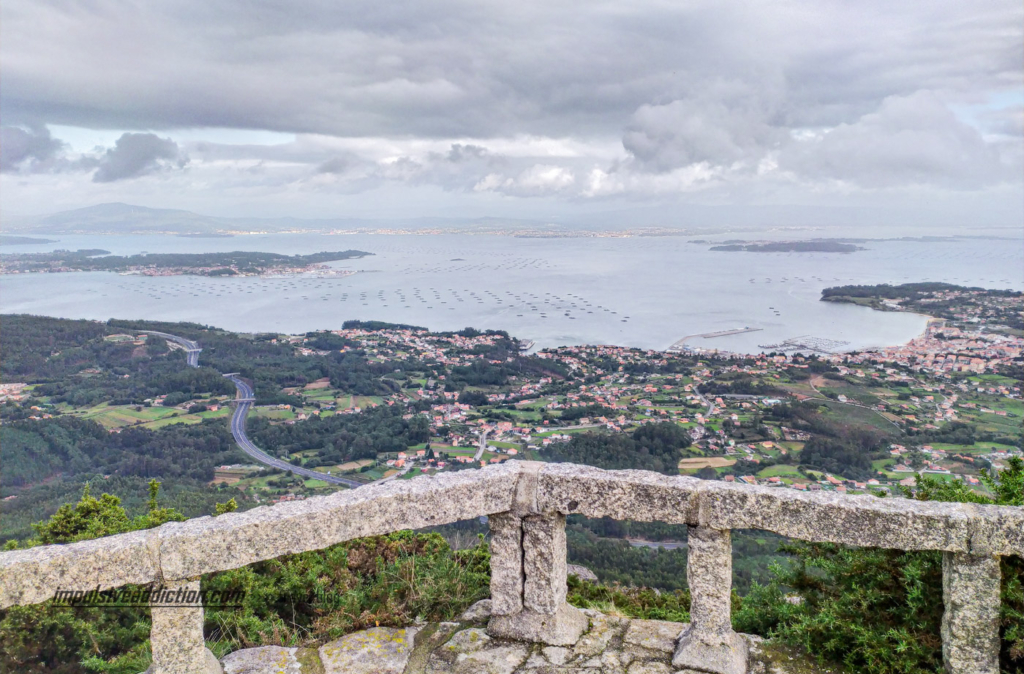
Map | Things to do in La Coruna
Things to do in La Coruna surroundings
Galicia has an area that corresponds to almost one third of the area of Portugal, my country, so you may imagine that there are plenty of more places to visit there. Use the following tips as possible starting points to explore the rest of its territory. 😉 Check also my complete article with Things to do in Galicia, if you are interested in a detailed but easy to follow guide.
1. Visit Rias Baixas and Cies / Ons Islands
Rias Baixas is a true treasure of Galicia, with a rugged coastline filled with beaches, picturesque villages, and a rich gastronomy based on seafood and fish. In the region, you cannot miss visiting the city of Vigo, which is the largest and most cosmopolitan city in the area, with a lively port area and a range of museums and cultural attractions. Climb up to the castle for an excellent viewpoint.
Another must-see place is the city of Pontevedra, which has a historic charm and impressive architecture. The city is famous for its well-preserved historic center, with cobbled streets, beautiful squares, and old churches.
Along the coast, Rias Baixas also offers a series of stunning beaches, such as Samil Beach in Vigo or La Lanzada Beach in Sanxenxo. Go visit Baiona, Sanxenxo, and O Grove, I’m sure you won’t regret it! Additionally, you cannot miss a visit to the Cíes and Ons islands, which have some of the most beautiful beaches in Spain and are a true paradise for nature lovers.
- Excursion to Rias Baixas (Boat with mussels and wine)
- Rías Baixas: Boat Trip, Mussels, Wine, and Winery Visit Tour
- Rías Baixas Day Trip
- Cies Island Tour
- Rías Baixas, Arosa Island & Combarro Day Trip
- Vigo & Baiona Day Trip
- Guided tour of Bodegas Granbazán
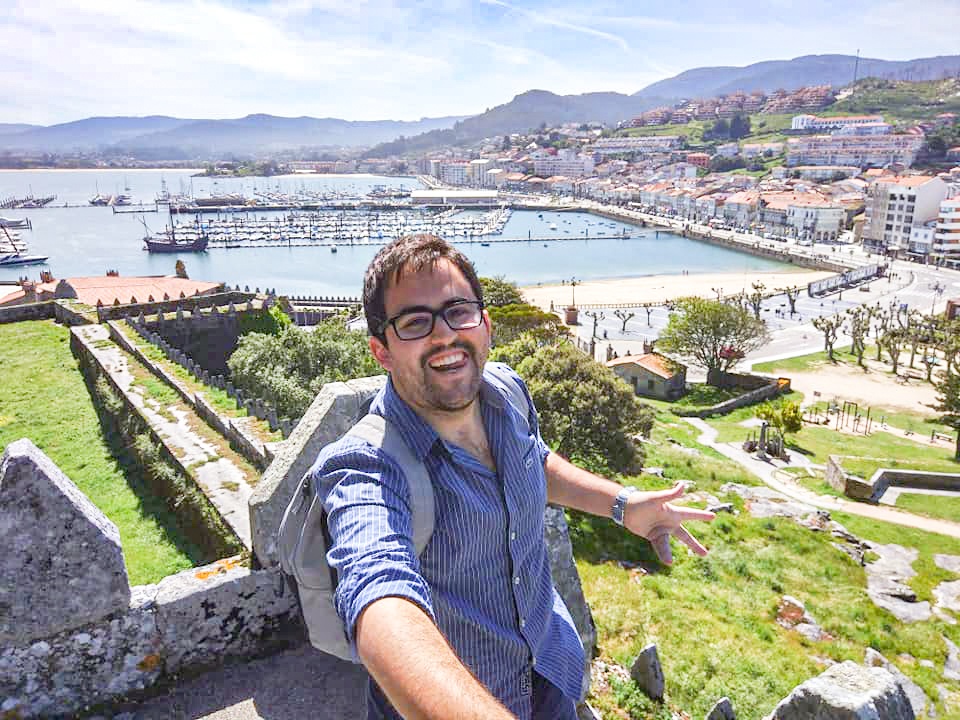
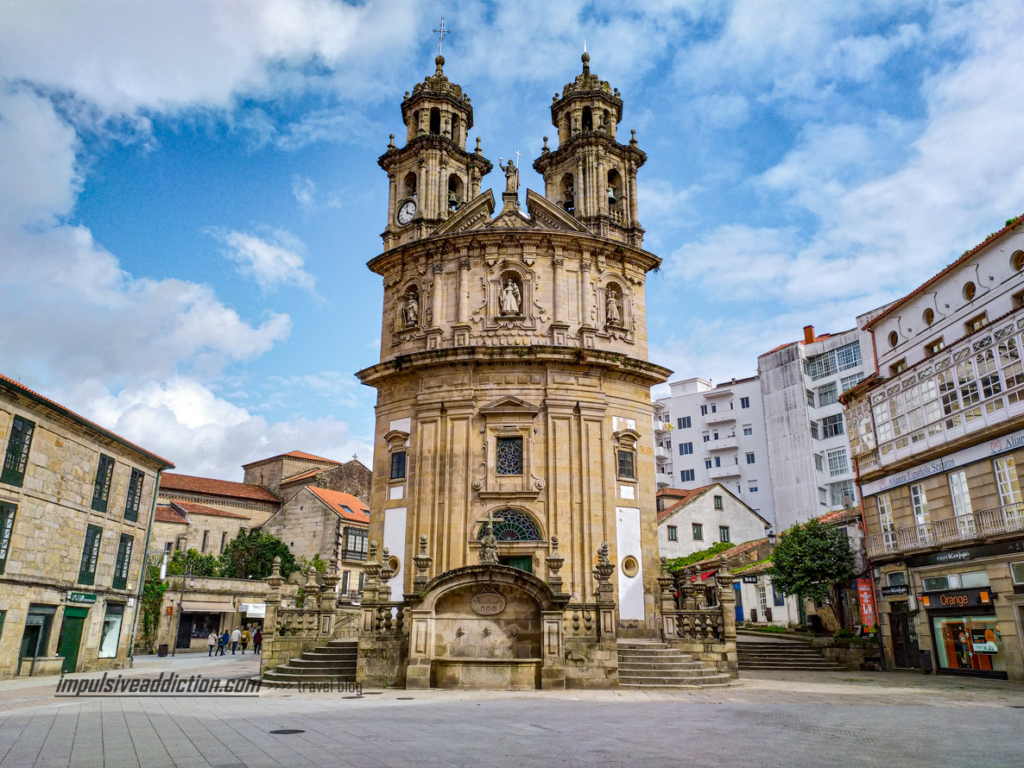
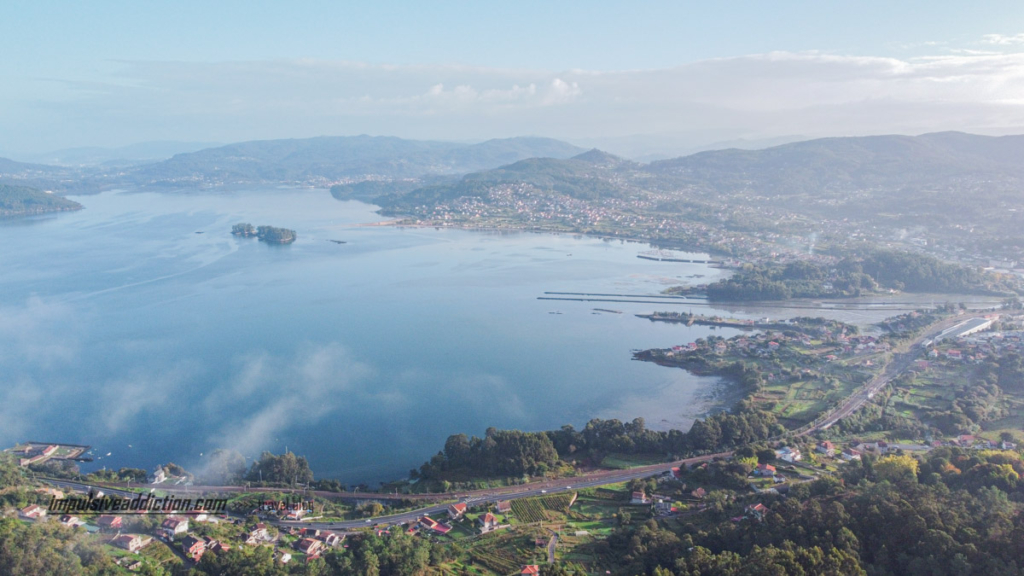
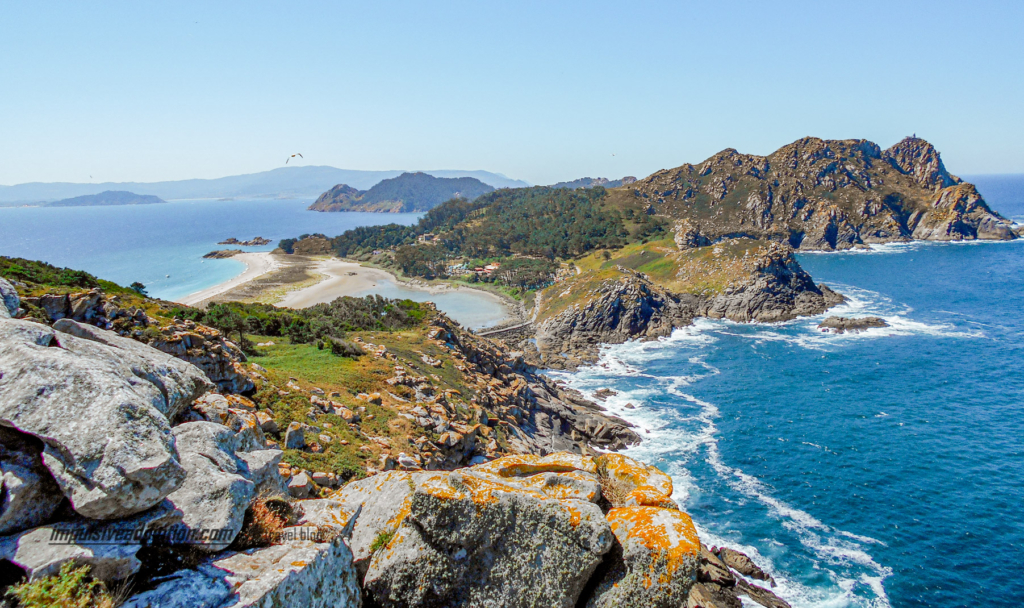
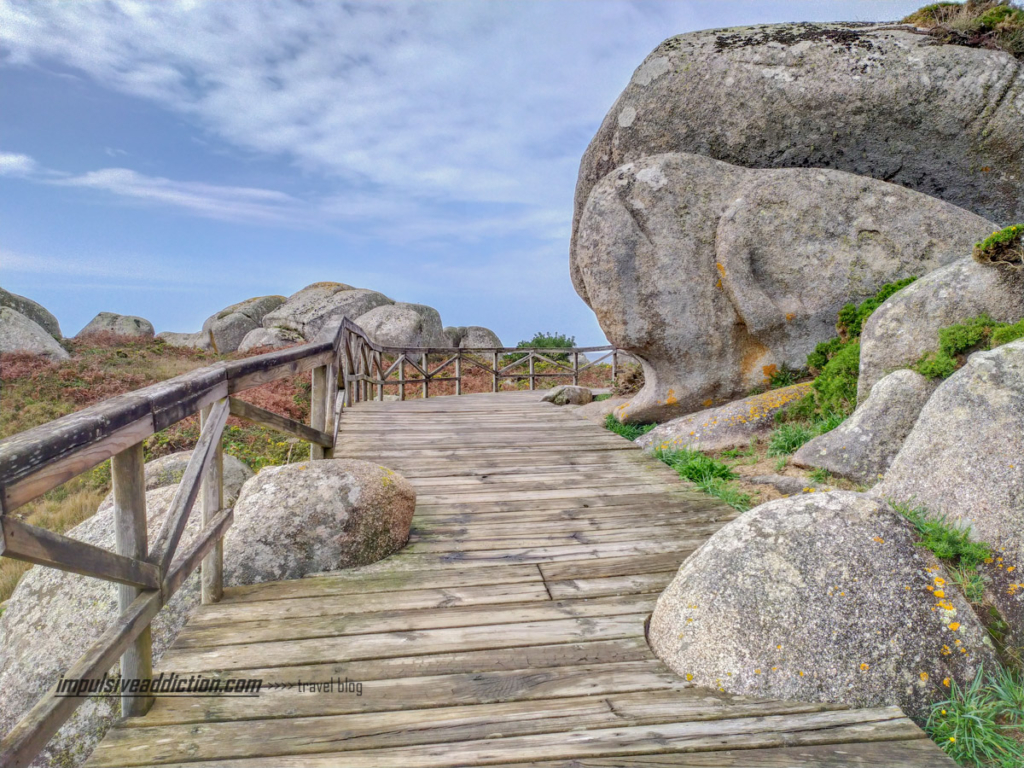
2. Visit Lugo and Ribadeo (Cathedrals Beach)
Regarding Lugo, it is known for its Roman walls, which were built in the 3rd century to protect the city from barbarian invaders. The walls are over 2 km long and are one of the best-preserved Roman monuments in the Iberian Peninsula.
Ribadeo, on the other hand, is a coastal city that harbors one of the most beautiful estuaries in Europe. It has another must-see attraction, which is the surreal Beach of the Cathedrals, with spectacular rock formations. During low tide, it is possible to walk among the rocks by the seaside and appreciate the most stunning natural beauty of the Galician coast.
- Lugo, Ribadeo & Beach of the Cathedrals Trip
- As Catedrais Beach, Tapia & Rinlo Tour
- Excursion to Catedrais Beach, Pancha Island and Asturias
- Excursion to Playa de las Catedrales, Lugo & Ribadeo
- Excursion to Cathedrals Beach and Asturias from Santiago de Compostela
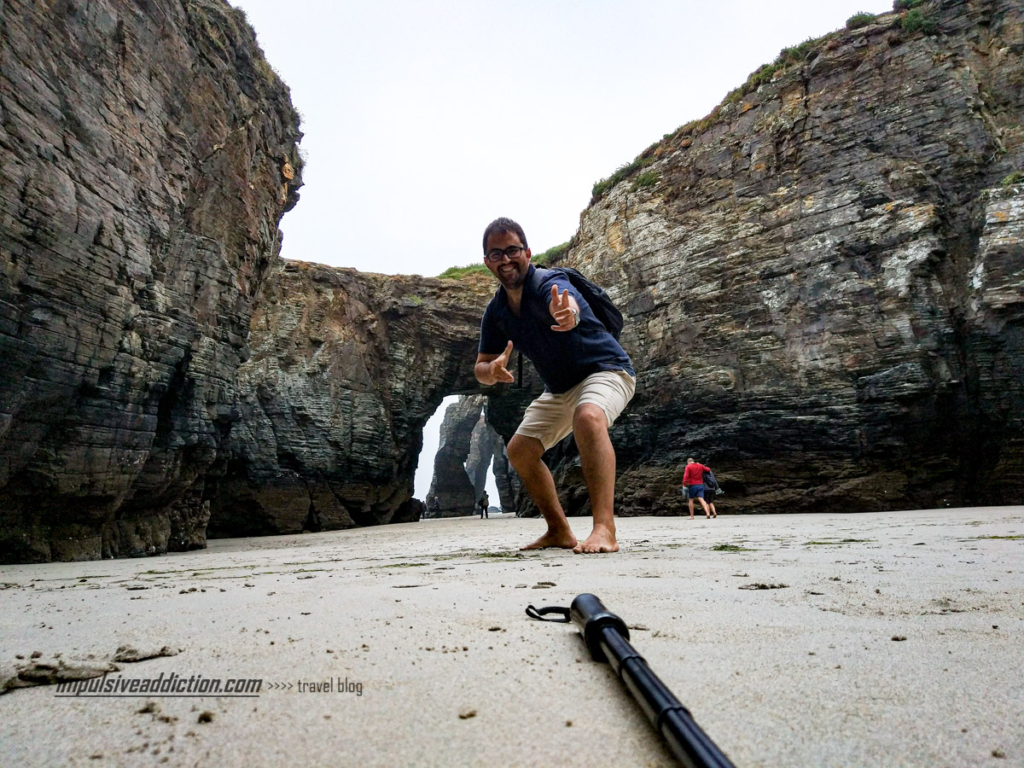
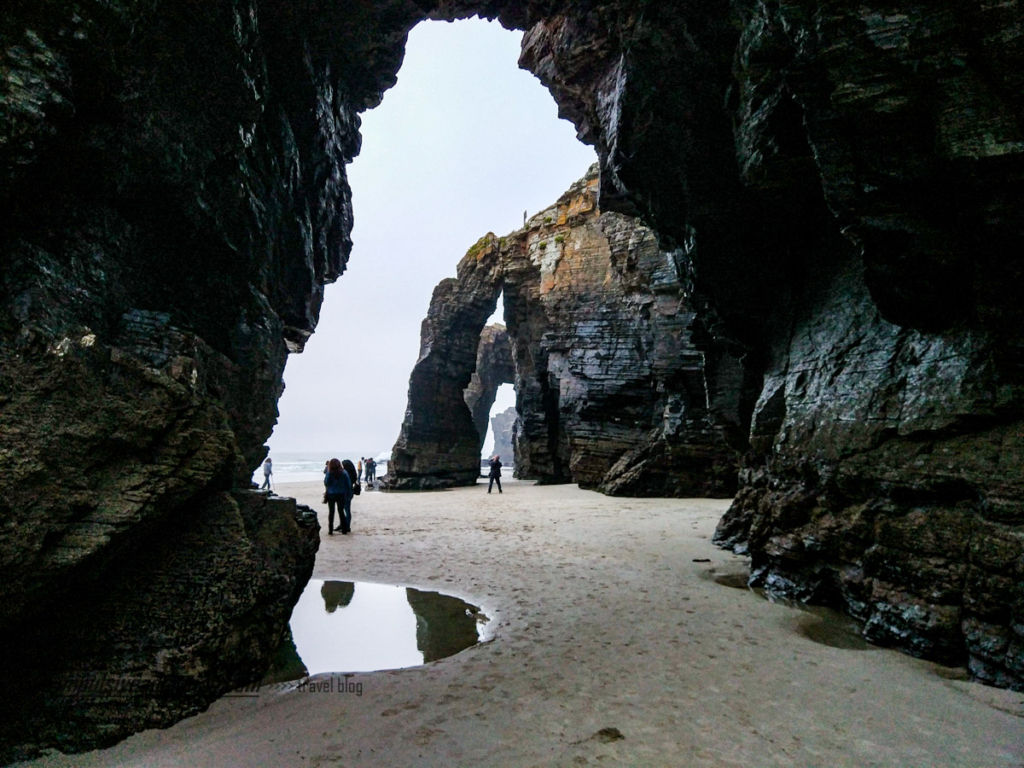
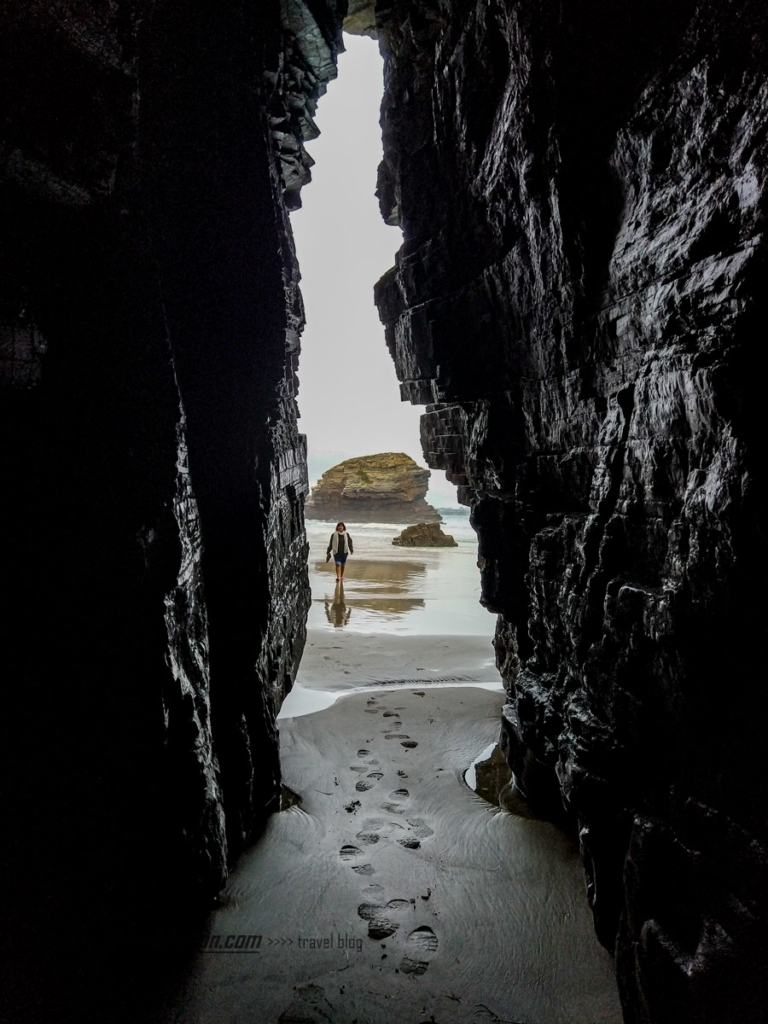
3. Visit the Cliffs of Ribeira Sacra and the Thermal baths of Ourense
Ribeira Sacra will be another nature destination in Galicia, alongside the winding Sil and Minho rivers, where you can take boat trips through impressive gorges and deep valleys. There are plenty of amazing viewpoints to discover, several ancient monasteries and churches, and also hiking trails.
Ribeira Sacra is also known for its wines, which are produced on the region’s slopes, near the rivers. You can visit some wineries and also do some wine tastings.
Finally, don’t forget to visit Ourense, bathing in its public, free and open-air thermal pools. 😉 Of course, there are also paid places for those seeking a more reserved experience. They are one of the best experiences in Galicia!
- Ribeira Sacra & Ourense Tour
- From Santiago: Excursion to Ribeira Sacra and Ourense
- Full Day Excursion to Ribeira Sacra and Winery with Tastings
- Day trip to the Ribeira Sacra from Santiago de Compostela
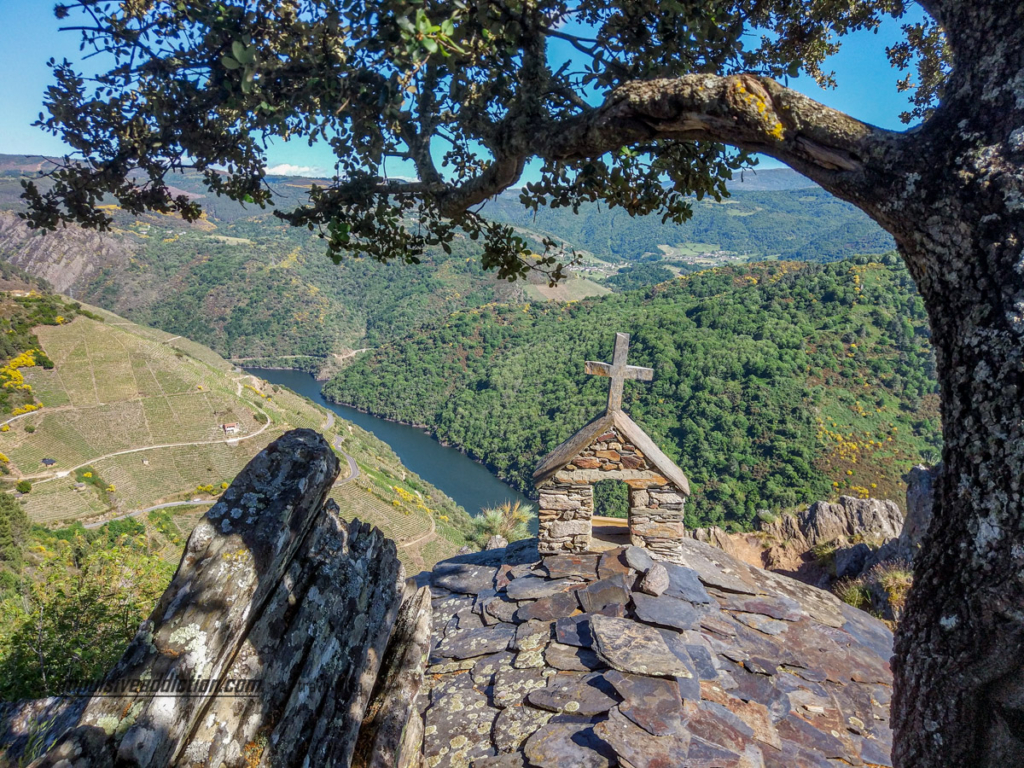
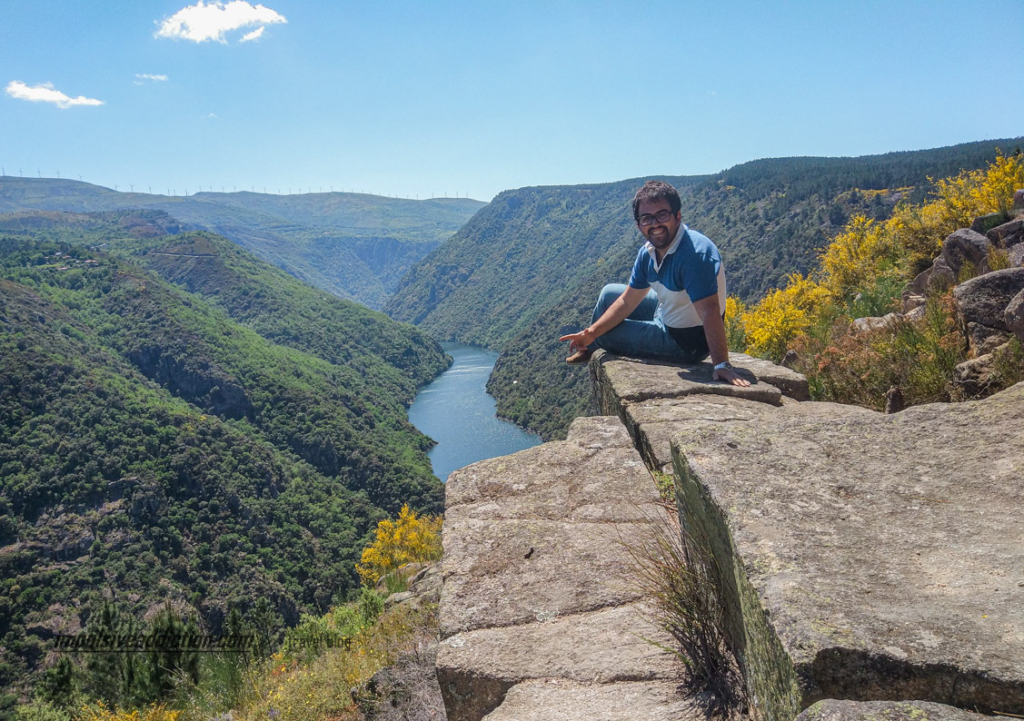
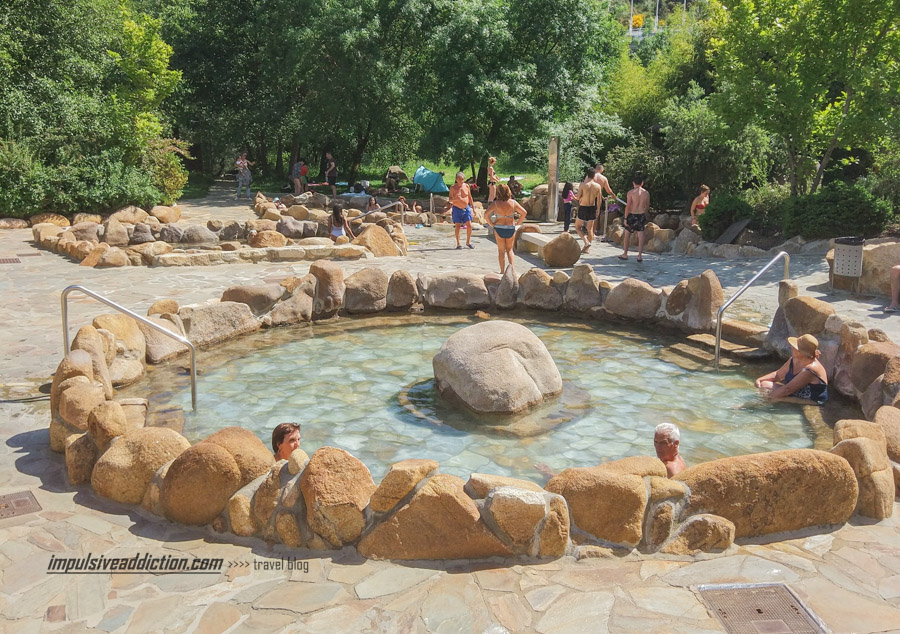
4. Visit the North of Portugal and the City of Porto
Portugal is my country! Whether you’re looking to explore the region’s historic cities, wander through picturesque towns, or hike through rugged mountains and valleys, there’s something for everyone in the North of Portugal. This is my last tip for places to visit departing from La Coruna and/or Santiago de Compostela.
Here are just a few of the top things to do there:
- Explore Porto’s Historic City Center: Porto’s city center is a UNESCO World Heritage Site, filled with stunning architecture and colorful buildings. Visit the iconic Ribeira district, stroll along Douro River, and sample the city’s famous port wine.
- Visit Douro Valley, another UNESCO World Heritage Site and one of the most beautiful wine regions in the world. Take a river cruise, visit local vineyards and wineries, and enjoy the stunning landscapes.
- Discover Braga’s History: Braga is one of the oldest cities in Portugal and is known for its rich history and stunning architecture. Visit Bom Jesus do Monte sanctuary, Braga Cathedral, and the medieval Castle and Historic Center of Guimarães.
- Experience Peneda-Gerês National Park: This stunning national park is a paradise for nature lovers. Hike through the rugged mountains, swim in crystal-clear lagoons, and spot rare wildlife.
- Enjoy the Local Cuisine: North Portugal is famous for its delicious cuisine, from fresh seafood to hearty stews and flavorful wines. Sample the local specialties, such as bacalhau (cod), cozido (meat and vegetable stew), and vinho verde (young, slightly effervescent wine).
- Porto Day Trip
- Things to do in Porto
- Things to do in Viana do Castelo
- Things to do in Braga
- Things to do in Guimarães
- Peneda Gerês National Park Itinerary
- Douro Valley Itinerary
- Trás-os-Montes Itinerary
- Things to do in Esposende
- Things to do in Barcelos
- Things to do in Arcos de Valdevez
- Things to do in Caminha
- Things to do in Valença
- Things to do in Monção
- Things to do in Ponte de Lima
- Things to do in Matosinhos
- Things to do in Vila do Conde
- Things to do in Póvoa de Varzim
- Things to do in Vila Nova de Gaia
- Minho | Northern Portugal Itinerary
